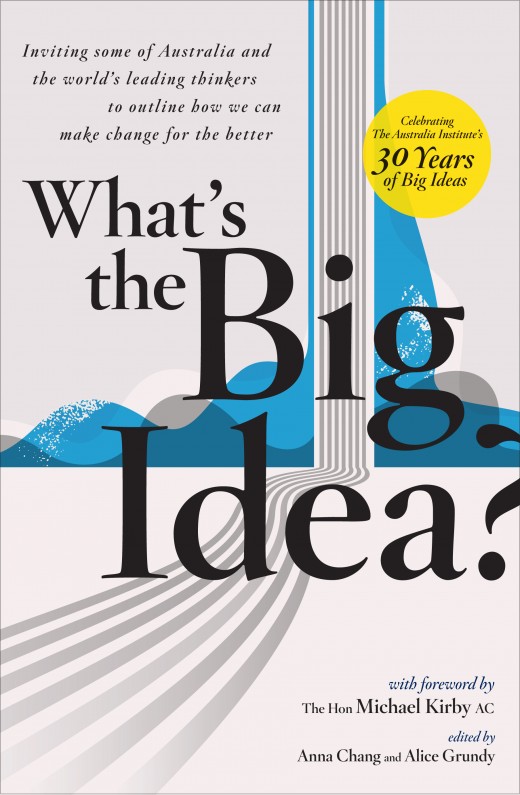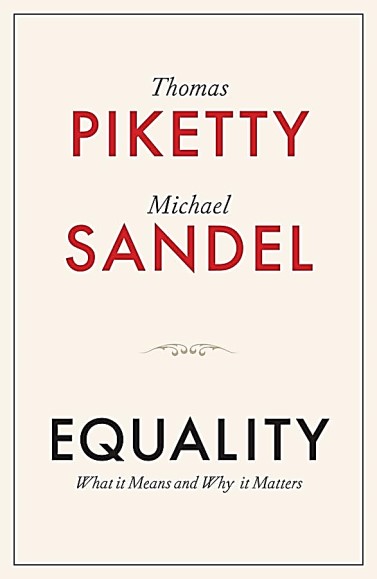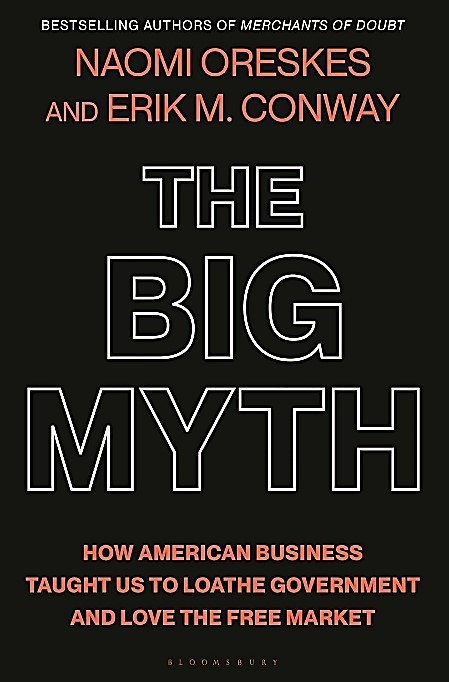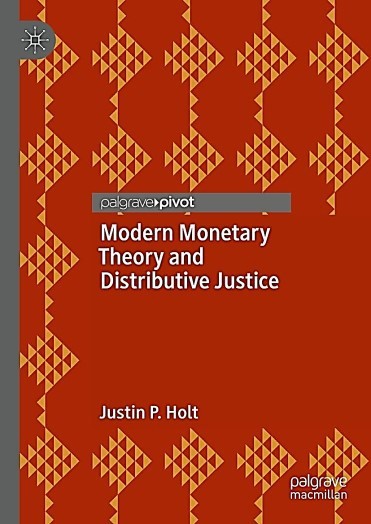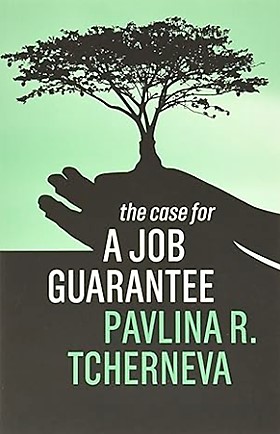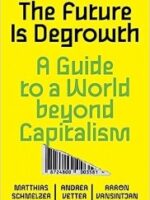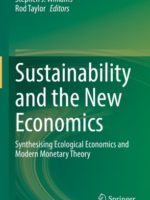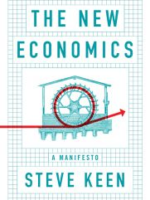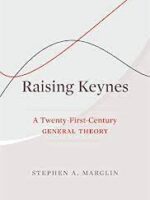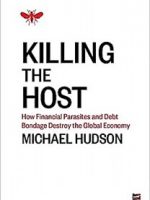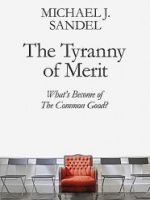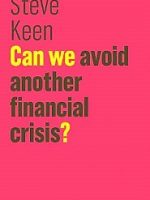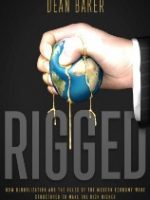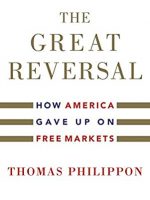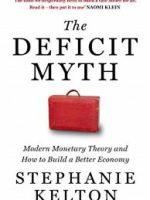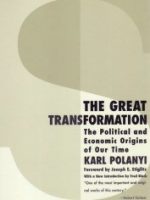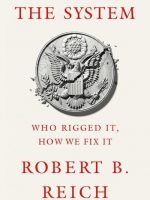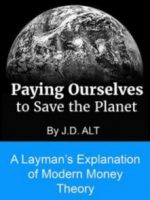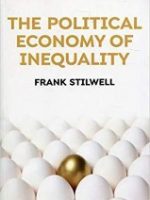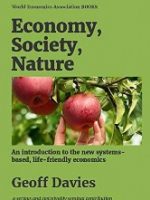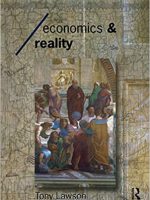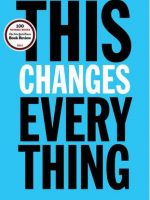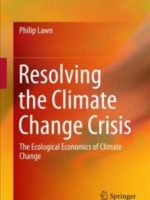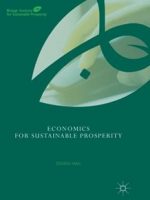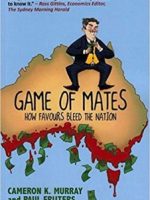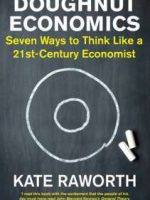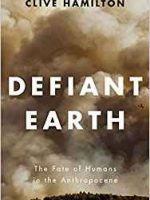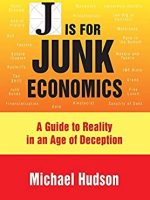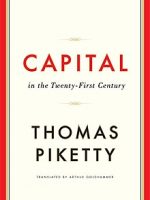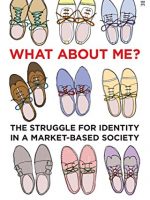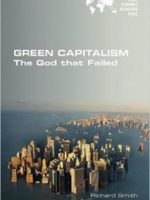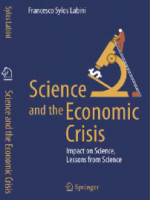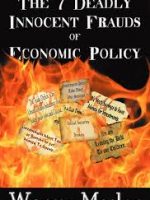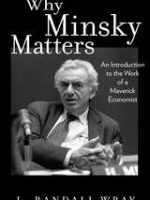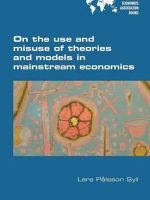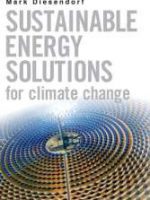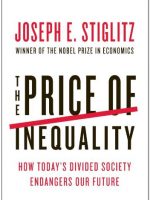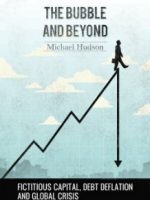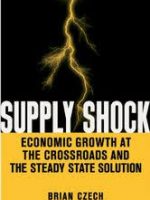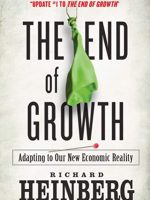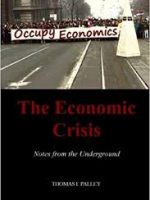The following book summaries and recommendations have appeared in previous printed versions of the ERA Review. Members can download pdf copies of all our ERA Reviews by selecting the links on the ERA Review page. Please note you need to be logged in to access the pdf downloads.
Select from the book titles below to read the review.
Understanding Modern Money Theory, Money and Credit in Capitalist Economies by L. Randall Wray (Senior Scholar and Professor of Economics, Levy Economics Institute, USA)
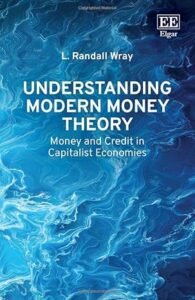 ‘For over thirty years, Randy Wray has sought to dispel entrenched misconceptions of the theory and practice of money. Under-standing Modern Money
‘For over thirty years, Randy Wray has sought to dispel entrenched misconceptions of the theory and practice of money. Under-standing Modern Money
Theory is a magnificent, successful culmination of this endeavour, providing a lucid account of the nature and history of money, and how it can be carefully used to achieve full employment and economic wellbeing.’ – Geoffrey Ingham, University of Cambridge, UK
‘This is Wray’s best volume so far. The result of decades of research, it flows beautifully from discussions of the origins of money through to how financing really works and fin-ally to how we absolutely CAN afford to address the crises of today. In fact, we cannot afford not to.’ -John Harvey, Texas Christian University, USA
Free content at: https://lnkd.in/dTHtnAb5. More information: https://lnkd.in/d3_BCfwf
In this illuminating book, Randall Wray explores the origins, nature, and evolution of money, emphasizing the critical role played by both credit and state money in capitalism. Integrating and updating the influential theories presented in Wray’s previous books, Money and Credit in Capitalist Economies and Understanding Modern Money, this new book addresses key questions in modern economic theory and policy.
What’s the big idea? Australia Institute Press, March 2025 (Eds Anna Chung, Alice Grundy)
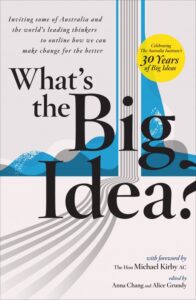 Leading thinkers from around the world outline how we can make change for the better
Leading thinkers from around the world outline how we can make change for the better
To mark The Australia Institute’s 30 years of big ideas, some good friends and leading thinkers from Australia and around the world have been asked to share a big idea for a better way to Australia.
The Australia Institute has spent the last 30 years producing research that matters, and this anthology offers fresh thinking about climate action, ho to safeguard our democracy, the importance of bravery in policymaking, and how to address some of the biggest issues today – including genderbased discrimination, the housing crisis, and keeping cities cooler.
In its first 30 years, The Australia Institute has shown how to make the impossible feel inevitable, and the radical seem reasonable. The works in this volume serve as a reminder that the solutions are there, and that Australia just needs the courage to implement them.
Recommended chapters:
Wage Growth Is Good – Greg Jericho
Worker Voice – Sally McManus
The Right Kind of Action: Tackling the Housing Crisis – Maiy Azize
No Backbone – Richard Denniss
Caution Is Killing Us – Polly Hemming
If Australia Could Be Brave – Amy Remeikis
First Nations Powering the Energy Transition – Karrina Nolan
Titans of Capital, by Peter Phillips (Seven Stories Press) Forward by Dan Kovalik
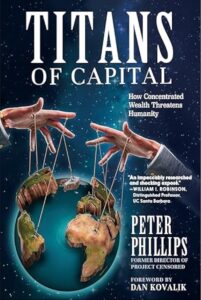 Political sociologist Peter Phillips, former director of Project Censored, shows how fewer and larger investment companies now manage the wealth of the world’s super-rich, to the detriment of everyone else and the global environment. Phillips takes us deep into the world of transnational finance companies whose outsize influence undermines every-thing from our environment to our democracy to our
Political sociologist Peter Phillips, former director of Project Censored, shows how fewer and larger investment companies now manage the wealth of the world’s super-rich, to the detriment of everyone else and the global environment. Phillips takes us deep into the world of transnational finance companies whose outsize influence undermines every-thing from our environment to our democracy to our
basic human rights.
The book offers precise (and staggering) figures for just how much wealth these firms control and how they invest it in projects that enrich the few at the expense of the many. Phillips examines the networks, investments, political activity and propaganda efforts of 117 board members of these firms – a new global elite who wield nearly unchecked power and whose wealth only grew with the pandemic
Equality: What It Means and Why It Matters by Thomas Piketty and Michael J. Sandel (Polity, 1st Edition)
 In this compelling dialogue, two of the world’s most influential thinkers reflect on the value of equality and debate what citizens and governments should do to narrow the gaps that separate us. Ranging across economics, philosophy, history, and current affairs, the authors Thomas Piketty and Michael Sandel consider how far humanity has come in achieving greater equality. At the same time, they confront head-on the extreme divides that remain in wealth, income, power, and status nationally and globally. What can be done at a time of deep political instability and environmental crisis? Piketty and Sandel agree on much: more inclusive investment in health and education, higher progressive taxation, curbing the political power of the rich and the overreach of markets. But how far and how fast can we push? Should we prioritize material or social change?
In this compelling dialogue, two of the world’s most influential thinkers reflect on the value of equality and debate what citizens and governments should do to narrow the gaps that separate us. Ranging across economics, philosophy, history, and current affairs, the authors Thomas Piketty and Michael Sandel consider how far humanity has come in achieving greater equality. At the same time, they confront head-on the extreme divides that remain in wealth, income, power, and status nationally and globally. What can be done at a time of deep political instability and environmental crisis? Piketty and Sandel agree on much: more inclusive investment in health and education, higher progressive taxation, curbing the political power of the rich and the overreach of markets. But how far and how fast can we push? Should we prioritize material or social change?
What are the prospects for any change at all with nationalist forces resurgent? How should the left relate to values like patriotism and local solidarity where they collide with the challenges of mass migration and global climate change?
To see the authors grapple with these and other problems is to glimpse new possibilities for change and justice but also the stubborn truth that progress towards greater equality never comes quickly or without deep social conflict and political struggle.
The Spirit of Hope by Byung-Chul Han (Polity, Ed 1, 15 January 2025) Byung-Chun Han is a philosopher who was born in Korea and is now located in Germany. His work on the psychological devastation caused by neoliberalism – and its unbridled craving for productivity – has had an influence on many people. His latest book available in Jan 2025 titled “The Spirit of Hope” promises to be a rewarding read.
Byung-Chun Han is a philosopher who was born in Korea and is now located in Germany. His work on the psychological devastation caused by neoliberalism – and its unbridled craving for productivity – has had an influence on many people. His latest book available in Jan 2025 titled “The Spirit of Hope” promises to be a rewarding read.
“A spectre is haunting us: fear. We are constantly confronted with apocalyptic scenarios: pandemics, world war, the climate catastrophe. Images of the end of the world and the end of human civilization are conjured up with ever greater urgency. Anxiously, we face a bleak future. Preoccupied with crisis management, life becomes a matter of survival.
“But it is precisely at such moments of fear and despair that hope arises like a phoenix from the ashes. Only hope can give us back a life that is more than mere survival. Fear isolates many people and closes them off from one another; hope, by contrast, is able to unite people and forms communities. It opens up a meaningful horizon that re-invigorates and inspires life. It nurtures fantasy and enables us to think about what is yet to come. It makes action possible because it infuses our world with purpose and meaning. Hope is the spring that liberates us from our collective despair and gives us a future.”
In this short essay on hope, Byung-Chul Han gives us the perfect antidote to the climate of fear that pervades our world.
Modern Money Theory – A Simple Guide to the Monetary System by Dirk Ehnts (Springer, April 2024) Part of: Professional Practice in Governance and Public Organizations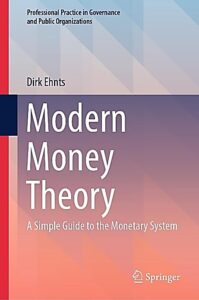 This book explains money creation by central banks, banking institutions and governments. Written in an accessible style, this book provides an introduction to modern monetary theory without requiring any prior knowledge of economics. It covers the most important aspects of monetary theory, including inflation targeting, government spending, and international trade, as well as economic policy to achieve macroeconomic goals, such as price stability, full employment and sustainable use of resources. Accordingly, it offers a valuable asset for students of economics, central bankers, banking professionals, and academics alike.
This book explains money creation by central banks, banking institutions and governments. Written in an accessible style, this book provides an introduction to modern monetary theory without requiring any prior knowledge of economics. It covers the most important aspects of monetary theory, including inflation targeting, government spending, and international trade, as well as economic policy to achieve macroeconomic goals, such as price stability, full employment and sustainable use of resources. Accordingly, it offers a valuable asset for students of economics, central bankers, banking professionals, and academics alike.
“I very much enjoyed working with Dirk on a variety of segments of his latest book. It’s one of the very few that is fundamentally grounded in an under- standing of monetary operations as practiced by all central banks, which gives the reader a sound basis for the analysis of today’s monetary economies.” – Warren Mosler, creator of Modern Monetary Theory.
“Ehnts’ no-nonsense introduction to MMT gets into the most up-to-date consequences of the Covid 19 crisis and government responses.” – Maren Poitras, director “Finding the Money”. “This compact introduction to all aspects of modern monetary theory is an exemplary work of popular science. The author, Dirk Ehnts, is a brilliant communicator, Europe’s answer to Stephanie Kelton, and the book is an accessible and comprehensive guide to the first major challenge to main-stream macroeconomics in 70 years.” – Steven Hail, Torrens University Australia.
“Offering a rigorous analysis of the monetary system, this book should be on the desk of every public and government employee.” – Stephanie Kelton, author of “The Deficit Myth”.
The Big Myth – How American Business Taught Us to Loathe Government and Love the Free Market
by Naomi Oreskes and Erik M Conway (Kindle Edition., 2023)
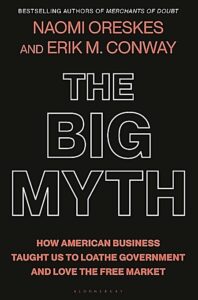
In the early 20th century, business elites, trade associations, wealthy powerbrokers, and media allies set out to build a new American orthodoxy: down with “big government” and up with unfettered markets. With startling archival evidence, Oreskes and Conway document campaigns to rewrite textbooks, combat unions, and defend child labour.
They detail the ploys that turned hardline economists von Hayek and Friedman into house-hold names; recount the libertarian roots of the Little House on the Prairie books; and tune into the General Electric-sponsored TV show that beamed free-market doctrine to millions and launched Reagan’s political career.
By the 1970s, this propaganda was succeeding. Free market ideology would define the next half-century across all administrations, creating the housing crisis, the opioid scourge, climate destruction, and a baleful response to the Covid-19 pandemic.
Modern Monetary Theory & Distributive Justice by Justin P. Holt (Palgrave Macmillan; 1st ed. 2023)
 Modern Monetary Theory and Distributive Justice shows how the macroeconomic frame-work called modern money theory (MMT) is relevant to the field of political philosophy called distributive justice.
Modern Monetary Theory and Distributive Justice shows how the macroeconomic frame-work called modern money theory (MMT) is relevant to the field of political philosophy called distributive justice.
Many of the macroeconomic assumptions of distributive justice are unstated and unexamined. The framework of MMT illuminates these assumptions and provides an alternative vision of distributive justice analysis and prescriptions. In particular, MMT holds that modern money is a nominal state issued token (fiat), there is a distinction between nominal assets and real assets, that state money as a nominal token can cause changes in real terms, and that the macroeconomy has historically not operated at capacity. The upshot of these assumptions held by MMT is that state spending can bring about changes in persons’ well-being without requiring traditional redistributive measures via taxation.
This is in contradistinction to standard assumptions within the distributive justice literature, which holds that the macroeconomy is at capacity and, thus, re-distribution is the necessary mechanism for enacting improvements in well-being. This is a fundamental shift in how distributive justice can be conceived.
Slow Down: The Degrowth Manifesto
by Kohei Saito (translator Brian Bergstrom; Astra House, 2024)
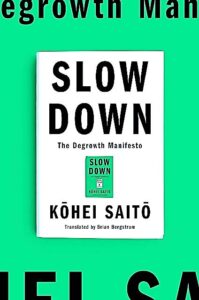 Why, in our affluent society, do many people live in poverty, without access to health care, working multiple jobs and are nevertheless unable to make ends meet, with no future prospects, while the planet is burning?
Why, in our affluent society, do many people live in poverty, without access to health care, working multiple jobs and are nevertheless unable to make ends meet, with no future prospects, while the planet is burning?
In his bestseller book, Kohei Saito has argued that while unfettered capitalism is often blamed for inequality and climate change, subsequent calls for “sustainable growth” and a “Green New Deal” are a dangerous compromise. Capitalism creates artificial scarcity by pursuing profit based on the value of products rather than their usefulness and by putting perpetual growth above all else. It is therefore impossible to reverse climate change in a capitalist society — more: the system that caused the problem in the first place cannot be an integral part of the solution.
Instead, Saito advocates for degrowth and de-celeration, which he conceives as the slowing of economic activity through the democratic reform of labour and production. In practical terms, he argues for:
1. the end of mass production and mass consumption;
2. decarbonization through shorter working hours;
3. the prioritization of essential labour over corporate profits.
By returning to a system of social ownership, he argues, we can restore abundance and focus on those activities that are essential for human life, effectively reversing climate change and saving the planet.
A proposal for achieving full employment
The Case for a Job Guarantee (Polity Press, 2020 Pavlina R. Tcherneva)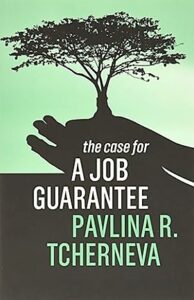
One of the earliest discussions of work relief was by the great Indian economist Kautilya (375–283 B.C.E.). In his treatise Arthashasra, he recommended public works projects that are aimed at alleviating poverty. Work relief programs of a more recent origin include the Civilian Conservation Corps and the Works Progress Administration of the 1930s-1940s within the U.S., South Africa’s Expanded Public Works Programme which started in 2004, and the Mahatma Gandhi National Rural Employment Guarantee Act enacted in India in 2005. In The Case for a Job Guarantee, Pavlina R. Tcherneva discusses job guarantees as recent policy iterations of work relief. Job-guarantee proposals are distinctive because they assume that full employment is achievable only if there is a public employment opportunity for all people who seek paid work.
The Case for a Job Guarantee, Tcherneva makes five main arguments. First, involuntary unemployment is commonplace and correlated with detriments for the unemployed and others. Second, the prevailing theory of full employment is not supported by empirical research. Third, full employment can only be maintained with the use of a job guarantee. Fourth, a job guarantee provides goods and services not currently produced by the private and public sectors, and a job guarantee would reduce the detriments correlated with involuntary unemployment. Fifth, a job guarantee can contribute to price stability by expanding the supply of experienced workers and by minimizing wage fluctuations.
Tcherneva reviews research that documents the existence of involuntary unemployment even during times of low unemployment rates. This area of research, which covers employment before the COVID-19 pandemic, was able to show that the number of involuntarily employed people had exceeded the number of available jobs. And based on the evidence presented in her review, Tcherneva has concluded that traditional employment policies have failed to achieve full employment.
Tcherneva’s research indicates that involuntary unemployment harms the unemployed and others. Unemployment is correlated with reduced mortality, reduced lifetime earnings, increased poverty rates, higher rates of alcoholism, a greater incidence of depression, and an overall decline in physical health. Children in families with unemployed adults are more likely to suffer from malnutrition, mental health problems, stunted growth, and reduced educational success. Unemployment is associated with the social ills of urban blight, crime, inequality, and reduced technological innovation, and its consequences include higher income transfers, prison costs, and healthcare costs. Finally, because the unemployed are not working, there is forgone productive output.
Tcherneva argues that these individual and social costs of unemployment call into question the cogency of the prev-ailing theory of full employment structured around the assumption of a natural rate of unemployment. The natural rate of unemployment is commonly called the non-accelerating inflation rate of unemployment. This rate is a hypothesized amount of unemployment corresponding to a stable price level that economies tend toward in the long run. Tcherneva argues that the existence of a natural rate of unemployment is not substantiated by empirical research. If the natural rate is not a supported hypothesis and if unemployment has detrimental effects, a new definition of full employment is needed.

A job guarantee produces full employment because its purpose is to employ all people who wish to work. Using research on past direct public employment programs, Tcherneva shows the promise of a job guarantee, noting that job-guarantee work would complement work that is already being performed by private firms and government agencies. The author finds that job-guarantee work can be performed in the general areas of care services, environmental conservation services, and in community services. These areas have been recommended on the basis of research that identifies unmet public needs. In particular, a job guarantee can be situated as part of a broader policy aiming to move the economy toward environmental sustainability. The positions created by a job guarantee would be offered at a fixed wage set above the official poverty threshold and also would provide the benefits of health insurance, paid leave, and childcare.
Tcherneva further argues that, besides providing a defined form of full employment, a job guarantee would help stabilize prices. First, it would increase the pool of trained workers, reducing wage pressures in labour markets. Second, the set wage of the job guarantee would act as a price buffer stock. Buffer stocks stabilize the price of a given commodity by ensuring that the commodity is bought and sold in any amount at a publicized price. A job guarantee acts as a buffer stock for labour by employing all people who wish to do job-guarantee work at the set wage. Also, this wage would not be indexed to any price series, which would minimize its inflationary or disinflationary effects. The number of people employed through a job guarantee would increase (decrease) during economic contractions (expansions). This changing number would help minimize price fluctuations, all else held equal.
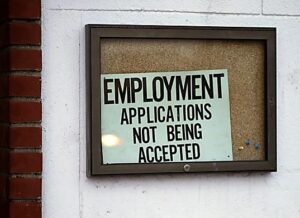
The job guarantee scheme proposed by Tcherneva would be financed by a central or federal state. Local governments and nonprofits would submit proposals for employment projects. Tcherneva argues that the funding of a job guarantee should be considered in real terms (i.e. increased number of people employed, reduced detrimental effects of unemployment, tempered price fluctuations) and not as a financial cost. Thereby, she argues that the outcomes of a job guarantee are a net social benefit. In support of her view, Tcherneva cites a research paper she coauthored that uses macroeconomic modelling and finds that a job guarantee would create private-sector jobs, increase state-level revenue, and reduce poverty (in addition to providing a form of full employment). Although she argues that it is best to consider a job guarantee in real rather than financial terms, she does provide a financial estimate of the cost of a job guarantee scheme. She finds that such a scheme would cost approximately one percent of gross domestic product in the United States, but this estimate does not consider any reductions in other government social spending due to unemployment. The Case for a Job Guarantee has been written for a general audience. It can be an appropriate reading in introductory courses on employment, as well as macroeconomics, and public policy. Social scientists who are interested in the theoretical assumptions and research that underpin proposals for a job guarantee will find the book to be useful. The book is short, so the amount of space devoted to the presentation and appraisal of different economic theories, social statistics, and other employment policies is limited.
Source:
Monthly Labor Review, November 2023
https://www.bls.gov/opub/mlr/2023/book-review/a-proposal-for-achieving-full-employment.htm
This publication has creative commons status.
Dr Pavlina R. Tcherneva is a Professor of Economics at Bard College, the Director of OSUN’s Economic Democracy Initiative, and a Research Scholar at the Levy Economics Institute, NY. She is a macroeconomist specializing in monetary economics and stabilization policy.
The Big Myth: How American business taught us to loathe government and love the free market, by Naomi Oreskes and Erik Conway (Bloomsbury, 2003)
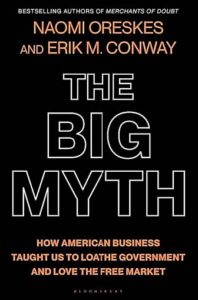 The great enemy of truth is very often not the lie – deliberate, contrived, and dishonest – but the myth – persistent, persuasive, and unrealistic. [John F. Kennedy, Commencement Address, Yale University 1962]
The great enemy of truth is very often not the lie – deliberate, contrived, and dishonest – but the myth – persistent, persuasive, and unrealistic. [John F. Kennedy, Commencement Address, Yale University 1962]
The bestselling authors of Merchants of Doubt offer a profound, startling history of one of the United States’ most tenacious – and destructive – false ideas: the myth of the “free market.”
In the early 20th century, business elites, trade associations, wealthy powerbrokers, and media allies set out to build a new American orthodoxy – i.e. down with “big government” and up with unfettered markets. With startling archival evidence, Oreskes and Conway document campaigns to rewrite textbooks, combat unions, and defend child labour. They detail the ploys that turned hardline economists Friedrich von Hayek and Milton Friedman into household names; recount the libertarian roots of the Little House on the Prairie books; and tune into the General Electric-sponsored TV show that beamed free-market doctrine to millions and launched the career of Ronald Reagan. By the 1970s, this propaganda was succeeding. Free market ideology would define the next half-century across Republican and Democratic administrations, giving us a housing crisis, the opioid scourge, climate destruction, and a baleful response to the Covid-19 pandemic. Only by understanding this history can we imagine a future where markets will serve, not stifle, democracy.
The Poverty of Fictional Storytelling
in Mainstream Economics by Lars P. Syll (WEA books, 2023) “No one does more than Lars Syll to identify and communicate the limitations of modern economics. An impassioned call and compelling sustained argument for economists to stop dwelling on the intricacies of irrelevant models and concern themselves with the rest of the social reality.” – Tony Lawson, Cambridge University, UK.
“No one does more than Lars Syll to identify and communicate the limitations of modern economics. An impassioned call and compelling sustained argument for economists to stop dwelling on the intricacies of irrelevant models and concern themselves with the rest of the social reality.” – Tony Lawson, Cambridge University, UK.
“This is a timely update of the debate of methodological issues in economics. It demonstrates that despite 30 years of critical-realist critiquing, little if any-thing with regard to economic methodology has changed in mainstream models and textbooks, with the consequence that mainstr-eam economists have been unable to predict or explain the major economic crises of the 21st century.”
– Jesper Jespersen, Roskilde
University, Denmark
Power and Progress: Our Thousand-Year Struggle Over Technology and Prosperity – D Acemoglu and S Johnson (Publ: PublicAffairs, 16 May 2023)
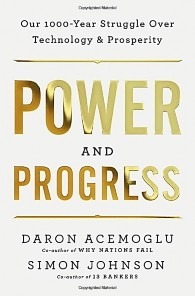
The bestselling co-author of Why Nations Fail and the bestselling co-author of 13 Bankers deliver a bold reinterpretation of economics and history that will fundamentally change how you see the world. A thousand years of history and contemporary evidence make one thing clear: progress depends on choices made about technology. New ways of organizing production and communication can either serve the narrow interests of an elite or become the foundation for wide-spread prosperity.
The wealth generated by technological improvements in agriculture during the European Middle Ages was captured by the nobility and used to build grand cathedrals, while peasants remained on the edge of starvation. The first hundred years of industrialization in England delivered stagnant incomes for working people. Throughout the world today, digital technologies and artificial intelligence undermine jobs and democracy through excessive automation, massive data collection, and intrusive surveillance.
It doesn’t have to be this way. This book demonstrates that the path of technology was once – and may again – be brought under control. Cutting-edge advances can become empowering and democratizing tools, but not if all major decisions remain controlled by a few hubristic tech leaders.

Technological, Socioeconomic and Political Change by Mark Diesendorf and Rod Taylor (Springer)
This book (a) shows how to transition to a new civilisation that is sustainable, socially just, healthy and less militarised; (b) offers strategies & policies for avoiding a business- as-usual path to disaster; (c) communicates the recent science in a clear and accessible way.
The Path to a Sustainable Civilisation shows that we have unwittingly fallen into an existential crisis of our own making. We have allowed large corporations, the military and other vested interests to capture governments and influence public opinion excessively. We have created a god called ‘the market’ and allowed our most important decisions to be made by this imaginary entity, which is in fact a human system controlled by vested interests. The result has been the exploitation of our life support system, our planet, and most of its inhabitants, to the point of collapse.
This book argues that the way out of our black hole is to build social movements to apply overwhelming pressure on government and big businesses, weaken the power of vested interests and strengthen the role of democratic decision-making. This must be done simultaneously with action on the specific issues of climate, energy, natural resources and social justice, in order to transition to a truly sustainable civilisation.

Dr Mark Diesendorf is an Honorary Associate Professor, University of NSW Sydney
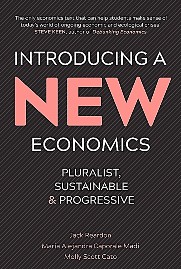
Introducing a New Economics: Pluralist, Sustainable and Progressive by Jack Reardon; Maria Alejandra Caporale Madi; Molly Scott Cato (Pluto Press, 15 Jan 2018)
Introducing a New Economics is a ground- breaking textbook that heralds a revolution in the teaching of economics. Students and lecturers alike are rejecting the narrow curr- icula and lack of intellectual diversity that characterise the mainstream. They demand that the real world should be brought back into the classroom, insisting that this is the only way to confront the current crisis.
With a firm commitment to theoretical, meth- odological and disciplinary pluralism, the renowned authors of this book challenge the current hegemony head-on. This unique textbook reflects a new ethos of economics education, highlighting sustainability and justice in its discussion of work, employ- ment, power, capital, markets, money and debt.
 Paying ourselves to save the planet, by J.D. Alt
Paying ourselves to save the planet, by J.D. Alt
(ASIN: B088WC28DM, 88 pages, Kindle edition)
A large part of this article has been extracted from a posting in the Facebook site Real Progress in Action on 25 July 2020, in conjunction with a smaller part from the J.D. Alt website.
J.D. ALT is an architect who has spent much of his career researching, inventing, and visualizing things that he hoped might improve the quality-of-life and prosperity of collective society.
Gradually, he came to two realizations: first, the kinds of things he was envisioning (free-to-ride downtown peoplemovers and affordable housing strategies) would never be undertaken by a profit-oriented corporate business model and, second, the only other possible financier -the federal government -was “broke” and hopelessly in debt.
Alarmed and discouraged by these realizations, he stopped thinking about new things to build and started investigating how and why it could possibly be true that collective society was, “for lack of money,” so helplessly unable to build things it both needed and could dramatically benefit from.
So begins J.D. Alt’s biography on the Amazon website. His recent book -Paying Ourselves to Save the Planet: A Layman’s Explanation of Modern Monetary Theory -explains why the “standard money theory” we insist on applying to the world is incapable of confronting the needs of modern society, most notably the challenges of the global climate crisis. It then explores how a simple change in perspective transforms the standard theory into “modern money theory” (MMT) a new perspective enabling us, as a collective society, to pay ourselves whatever it takes to proactively confront all the challenges we face. The layman’s explanation of MMT is provided twice: first, in easy to follow narrative format and, second, using 26 diagrams which bring the explanation to a visualized focus.
J.D. Alt describes the insights he gained once he understood that fiat money actually refers to banking reserves and that the other money we use, bankcreated money and physical currency, are claims on those reserves, which are held in the reserve banking system and never leave. They are digital entries on a score sheet.
One method for creating reserves is when banks make loans (by creating bank-money). This is a claim on that bank’s reserves at the central bank. This is how money for private enterprise is created. Since private corporations only engage in producing goods and services generating profits, it’s safe to say that bank-money is only created for profitable endeavours.
Therefore, the myriad of things we need as a society that don’t bring in a profit must be created by public enterprise. But where does the money for public enterprise come from? This leads to the heart of MMT, and J.D. breaks down the distinction between it and the standard theory of money.
In his book, J.D. Alt tallies up the public enterprise goods and services we require and puts together a projection of what they’ll cost. When compared to how much the standard money theory believes the government can either collect in taxes or borrow, it becomes clear that we must look at a different way to finance the public needs.
The cost of the climate crisis. Much of it involves paying people to mitigate and adapt to climate change, which includes the expense for farmers to sequester carbon in their soil and workers to build machines that scrub carbon out of the atmosphere.
Ironically, the bottom line is instead of costing the people a lot of money, a lot of people will be getting paid.
John D. Alt is an architect who writes about the economy, the climate crisis, housing, and the needs of humanity.
 The future is degrowth: a guide to a world beyond capitalism
The future is degrowth: a guide to a world beyond capitalism
(Paperback; Matthias Schmelzer, Andrea Vetter and Aaron Vansintjan)
We need to break free from the capitalist economy. Degrowth gives us the tools to bend its bars.
Economic growth isn’t working, and it cannot be made to work. Offering a counter-history of how economic growth emerged in the context of colonialism, fossil-fueled industrialization, and capitalist modernity, The Future Is Degrowth argues that the ideology of growth conceals the rising inequalities and ecological destructions associated with capitalism, and points to desirable alternatives to it.
Not only in society at large, but also on the left, we are held captive by the hegemony of growth. Even proposals for emancipatory Green New Deals or postcapitalism base their utopian hopes on the development of productive forces, on redistributing the fruits of economic growth and technological progress. Yet growing evidence shows that continued economic growth cannot be made compatible with sustaining life and is not necessary for a good life for all.
This book provides a vision for postcapitalism beyond growth. Building on a vibrant field of research, it discusses the political economy and the politics of a non-growing economy. It charts a path forward through policies that can democratise the economy –“now-topias” that create free spaces for experimentation, and counter-hegemonic movements that make it possible to break with the logic of growth.
Degrowth perspectives offer a way to step off the treadmill of an alienating, expansionist, and hierarchical system.
A handbook and a manifesto, The Future Is Degrowth is a must-read for all interested in charting a way beyond the current crises.
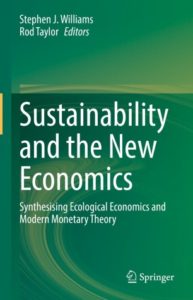 Sustainability and the New Economics
Sustainability and the New Economics
Synthesising Ecological Economics and Modern Monetary Theory
Eds: Stephen J. Williams, Rod Taylor (Springer)
This multidisciplinary book provides new insights and hope for sustainable prosperity given recent developments in economics – but only if swift and strong actions consistent with Earth’s biophysical limits and principles of justice are universally taken.
It is one thing to put limits on resource throughput and waste generation to conform with the ecosphere’s biocapacity. It is another thing to efficiently allocate a sustainable rate of resource throughput and ensure it is equitably distributed in the form of final goods and services. While the separate but interdependent decisions regarding throughput, distribution, and allocation are the essence of ecological economics, dealing with them in a world that needs to cure its growth addiction requires a realistic understanding of macroeconomics and the fiscal capacity of currency-issuing central governments. Sustainable prosperity demands that we harness this understanding to carefully regulate the rate of resource throughput and manipulate macroeconomic outcomes to facilitate human flourishing.
The book begins by outlining humanity’s current predicament of gross ecological overshoot and laments the half-century of missed opportunities since The Limits to Growth (1972).
What was once economic growth has become, in many high-income countries, uneconomic growth (additional costs exceeding additional benefits), which is no longer advancing well- being. Meanwhile, low-income nations need a dose of efficient and equitable growth to escape poverty while protecting their environments and the global commons.
The book argues for a synthesis of our increasing knowledge about the ecosphere’s limited carrying capacity and the power of governments to harness, transform, and distribute resources for the common good. Central to this syn- thesis must be a correct understanding of the difference between financial constraints and real resource constraints. While the latter apply to every- one, the former do not apply to currency-issuing central governments, which have much more capacity for corrective action than mainstream thinking perceives.
The book joins the growing chorus of authoritative voices calling for a complete overhaul of the dominant economic system. We conclude with policy recommendations based on a new economics that, if implemented, would come close to guaranteeing a sustainable and prosperous future.
Upon reading this book, at least one thing should be crystal clear: business as usual is not a viable option.
 The New Economics: A Manifesto
The New Economics: A Manifesto
by Steve Keen (1st Ed, Publ Date 18 Oct 2021, ISBN 9781509545285)
In 1517, Martin Luther nailed 95 theses to the wall of Wittenberg church. He argued in them that the Church’s internally consistent but absurd doctrines had pickled into a dogmatic structure of untruth. It was time for a Reformation.
Half a millennium later, Steve Keen argues that economics needs its own Reformation. In Debunking Economics, he eviscerated an intellectual church – neoclassical economics – that systematically ignores its own empirical untruths and logical fallacies, and yet is still mysteriously worshipped by its scholarly high priests.
In this book, he presents his Reformation: a New Economics, which tackles serious issues that today’s economic priesthood ignores, such as money, energy and ecological sustainability. It gives us hope that we can save our economies from collapse and the planet from ecological catastrophe.
Performing this task with his usual wit and panache, Steve Keen’s new book is unmissable to anyone who has noticed that the economics Emperor is naked and would like him to put on some clothes.
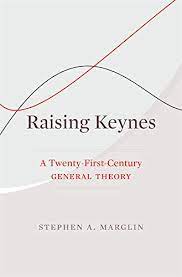 Raising Keynes: A twenty-First-Century General Theory B
Raising Keynes: A twenty-First-Century General Theory B
by Stephen A. Marglin (Harvard University Press, 2021)
The following extract from a book review by James Galbraith entitled Dismal Economics [1] relate to Stephen A. Marglin’s book Raising Keynes: A Twenty-First- Century General Theory (Harvard University Press, 2021), and formed part of the article by Lars Syll “Raising Keynes” which appeared in Real World Economic Review blogs [2].
“The defeat and suppression of the classical perspective – with its evolutionary, institutionalist, and developmental descendants – cleared the way for a dogmatic economics that exalted self-regulating competitive markets …
“As we have seen, this perspective soon ran into serious – but temporary – difficulties with the Great Depression, mass unemployment, and the rise of Keynes, whose theory is revived in Harvard University economist Stephen
“Marglin’s basic argument is stated in two parts. First, he focuses on the “Keynesian first-pass model” in the context of the static, general equilibrium framework favored by John Hicks (this is known in textbooks as the IS- LM model). He concludes that within that framework, Keynes’s theory is reduced to dealing with “frictions and rigidities,” implying that “if only” the markets were competitive in the neoclassical mode, mass unemployment could not exist …
“In his “second-pass model,” Marglin resets Keynes in a dynamic frame, dealing with events and changes that occur through time … Like Keynes, Marglin argues, correctly, that in this world, persistent involuntary unemployment cannot be resolved by cutting wages and breaking unions, even if you can get away with doing these things. Here, Marglin is in effect restating what Keynes’s closest collaborators always argued. My first encounter with [Joan] Robinson came in a University of Cambridge lecture hall in 1974. She had been sitting in to heckle Frank Hahn, one of the leading neoclassicists there at the time. As undergraduates fled the scene, I introduced myself and she invited me to lunch. Once seated in the buttery of the University Library, she started in: “You can’t put time onto the IS-LM diagram. Time comes out of the black- board.” I had no idea what she was talking about, but she certainly did (and now so do I) …
“Marglin has taken 80 years of neo-classical distortions of Keynes, presented them with great clarity in their own language, and then pounded them into dust, pushing the detritus back into the faces of the high priests of the neoclassical synthesis, the New Keynesians, and the New Classical Economists. Raising Keynes issues a challenge that they would be cowardly to refuse – which is not to suggest that they won’t do their best to ignore it. “
James K. Galbraith
 Killing the Host: How Financial Parasites and Debt Bondage Destroy the Global Economy (Kindle Edition, August 2015) by Michael Hudson
Killing the Host: How Financial Parasites and Debt Bondage Destroy the Global Economy (Kindle Edition, August 2015) by Michael Hudson
Hudson’s book has to be the definitive book about what went wrong in 2008 as well as since the beginning of the 20th century. Hudson exposes the whole farce of the ‘heroic’ measures taken by Wall Street’s men in Washington since 2008, i.e. the bailouts and ‘quantitative easings’ etc. for what they are: systematic policies designed to protect and to extend the reach of a neo-feudal aristocracy based on control of the country’s government, particularly its ability to create money.
These policies were not just an honest mistake by desperate leaders trying to avoid the consequences of the wholesale looting of the economy that began in earnest in the 1980s and culminated with the detonation of Warren Buffet’s “financial weapons of mass destruction” in 2008. They are measures designed to keep in place the ‘free lunch’ enjoyed by a new money-based social order, one under which power and privilege are derived from the creation of yet more “debts that can’t be repaid (and) won’t be”.
As Hudson notes, the ‘miracle of compound interest’ ultimately exists to insure financial crises as the big fish get bigger by eating the little fish, until the whole system collapses under the weight of a mathematical impossibility, i.e. the perpetual operation of the exponential function on which it is based.
“Killing the Host” can be viewed as a sequel, a sort of plot denouement, to Hudson’s “Super Imperialism” (SI) published almost a half century ago. In SI he details the historical roots of a new post-Bretton Woods international monetary system under which both Wall Street’s banks and the US government were freed from the constraints imposed by having to maintain the fiction of gold-backed money.

The Tyranny of Merit: What’s Become of the Common Good? by Michael J. Sandel (10 Sept 2020 by Allen Lane)
These are dangerous times for democracy. We live in an age of winners and losers, where the odds are stacked in favour of the already fortunate. Stalled social mobility and entrenched inequality give the lie to the promise that “you can make it if you try”.
And the consequence is a brew of anger and frustration that has fuelled populist protest, with the triumph of Brexit and the election of Donald Trump.
Michael J. Sandel argues that to overcome the polarized politics of our time, we must rethink the attitudes toward success and failure that have accompanied globalisation and rising inequality. Sandel highlights the hubris a meritocracy generates among the winners and the harsh judgement it imposes on those left behind. He offers an alternative way of thinking about success – more attentive to the role of luck in human affairs, more conducive to an ethic of humility, and more hospitable to a politics of the common good.
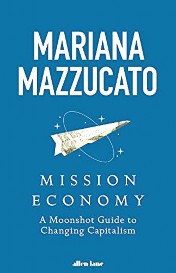 Mission Economy – A Moonshot Guide to Changing Capitalism by Mariana Mazzucato (Kindle)
Mission Economy – A Moonshot Guide to Changing Capitalism by Mariana Mazzucato (Kindle)
Even before the Covid-19 pandemic appeared in 2020, capitalism was stuck. It had no answers to a host of problems, including disease, inequality, the digital divide and, perhaps most blatantly, the environmental crisis.
Taking her inspiration from the ‘moonshot’ programmes which successfully co-ordinated public and private sectors on a massive scale, Mariana Mazzucato calls for the same level of boldness and experimentation to be applied to the biggest problems of our time.
We must, she argues, rethink the capacities and role of government within both the economy and society, and above all recover a sense of public purpose. Mission Economy, whose ideas are already being adopted around the world, offers a way out of our impasse to a more optimistic future.
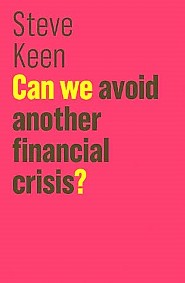 Can We Avoid Another Financial Crisis? by Steve Keen (May 2017, Polity)
Can We Avoid Another Financial Crisis? by Steve Keen (May 2017, Polity)
The Great Financial Crash had cataclysmic effects on the global economy, and took conventional economists completely by surprise. Many leading commentators declared shortly before the crisis that the magical recipe for eternal stability had been found. Less than a year later, the biggest economic crisis since the Great Depression erupted.
In this book, Steve Keen, one of the very few economists who anticipated the crash, shows why the self-declared experts were wrong and how ever–rising levels of private debt ensure the inevitability of yet another financial crisis unless politicians tackle the real dynamics causing financial instability. He also identifies the global economies that have become ‘The Walking Dead of Debt’, and those that are next in line – including Australia, Belgium, China, Canada and South Korea.
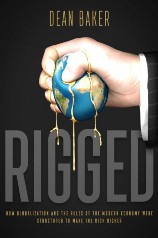 Rigged: How Globalization and the Rules of the Modern Economy Were Structured to Make the Rich Richer by Dean BakerPublished October 6th 2016 by the Center for Economic and Policy Research
Rigged: How Globalization and the Rules of the Modern Economy Were Structured to Make the Rich Richer by Dean BakerPublished October 6th 2016 by the Center for Economic and Policy Research
There has been an enormous upward redistribution of income in the United States in the last four decades.
In his most recent book, Dr Dean Baker shows that this upward redistribution was not the result of globalization and the natural workings of the market.
Rather it was the result of conscious policies that were designed to put downward pressure on the wages of ordinary workers while protecting and enhancing the incomes of those at the top.
Baker explains how rules on trade, patents, copy- rights, corporate governance, and macroeconomic policy were rigged to make income flow upward.

The Great Reversal: How America Gave Up on Free Markets, by Thomas Philippon (HUP, 2019)
In this much-anticipated book, a leading economist argues that many key problems of the American economy are due not to the flaws of US capitalism or the inevitabilities of globalization but to the concentration of corporate power. By lobbying against competition, we know that the biggest firms drive profits higher while depressing wages and limiting opportunities for investment, innovation and development.
Why are cell-phone plans much more expensive in the United States than in Europe? It seems a simple question. But the search for an answer has taken Thomas Philippon on an unexpected journey through some of the most complex and hotly debated issues in modern economics. And he come to a surprising conclusion: the US markets, once a model for the world, are giving up on healthy competition. Sector after economic sector is more concentrated than it was twenty years ago, dominated by fewer and bigger players who lobby politicians aggressively to protect and expand their profit margins. Across
the country, this drives up prices while driving down investment, productivity,
development and wages, resulting in more inequality. Meanwhile one finds that Europe, long dismissed for competitive sclerosis and weak antitrust, is now beating America at its own game.
Philippon, one of the world’s leading economists, did not expect these conclusions in the age of Silicon Valley startups and millennial millionaires. But the data from his cutting-edge research proved undeniable. In this compelling tale of economic detective work, we follow him as he works out the basic facts and consequences of industry
concentration in the U.S. and Europe, shows how lobbying and campaign contributions have defanged antitrust regulators, and considers what all this means for free trade, technology, and innovation.
For the sake of ordinary Americans, he concludes, government needs to return to what it once did best: keeping the playing field level for competition. It’s time to make American markets great – and free – again.
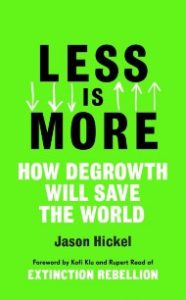 Less is More: how degrowth will save the world by Jason Hickel (London, Penguin Random House, 2020)
Less is More: how degrowth will save the world by Jason Hickel (London, Penguin Random House, 2020)
“A powerfully disruptive book for disrupted times. If you’re looking for transformative ideas, this book is for you.” — Kate Raworth, author of Doughnut Economics
“A masterpiece… Less is More covers centuries and continents, spans academic disciplines, and connects contemporary and ancient events in a way which cannot be put down until it’s finished.” — Danny Dorling, University of Oxford
“Jason Hickel shows that recovering the commons and decolonizing nature, cultures, and humanity are necessary conditions for hope of a common future in our common home.” — Vandana Shiva
“Jason is able to personalise the global and swarm the mind with ideas. Heed his beautifully rendered warning.” — Russell Brand
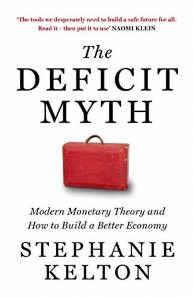 The Deficit Myth: Modern Monetary Theory and How to Build a Better Economy by Stephanie Kelton
The Deficit Myth: Modern Monetary Theory and How to Build a Better Economy by Stephanie Kelton
Stephanie Kelton shows how mis- guided the question “How will the government pay for it?” really is by using the bold ideas provided by modern monetary theory (MMT), the radically different approach to using our resources to maximize our potential as a society.
Everything that we have been led to believe about deficits and the role of money and government spending in the economy is wrong, especially the fear that deficits will endanger our long-term prosperity.
Rather than asking the self-defeating question of how to pay for the crucial improvements our society needs, Kelton guides us to instead ask: which deficits actually matter?
What is the best way to balance the risk of inflation against the benefits of a society that is more broadly prosperous, safer, cleaner, and secure?
Kelton is one of the leading thinkers and most visible public advocate of MMT – the most important new idea about economics in decades – and delivers a fundamentally different, bold, new understanding for how to build a just and prosperous society.
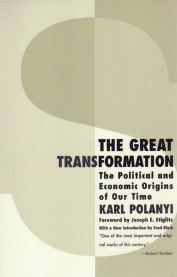 The Great Transformation – The Political and Economic Origins of Our Time
The Great Transformation – The Political and Economic Origins of Our Time
by Karl Polanyi
In this classic work of economic history and social theory, Karl Polanyi analyses the economic and social changes brought about by the Industrial Revolution’s “great transformation”.
His analysis explains deficiencies of the self-regulating market and also the potentially dire social consequences of untempered market capitalism. New introductory material reveals the renewed importance of Polanyi’s analysis in an era of globalization and free trade.
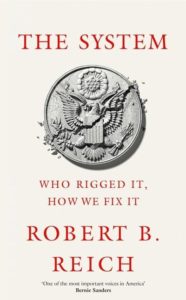 The System: Who Rigged It, How We Fix It – by Robert Reich (Knopf Doubleday, 24 March 2020)
The System: Who Rigged It, How We Fix It – by Robert Reich (Knopf Doubleday, 24 March 2020)
Millions of people have lost confidence in our political and economic system. After years of stagnant wages, volatile job markets, and an unwillingness by those in power to deal with profound threats such as climate change, there is a mounting sense that the system is fixed, serving only the select few with enough money to secure a controlling stake. With the characteristic clarity and passion that has made him a central civil voice, Robert Reich shows how wealth and power have interacted to install an elite oligarchy, eviscerate the middle class, and undermine democracy. Using Jamie Dimon, the chairman and CEO of JPMorgan Chase as an example, Reich exposes how the elite at the top propagate myths about meritocracy, national competitiveness, corporate social responsibility, and the “free market” designed to distract most people from the elite’s accumulation of extraordinary wealth, and power over the system. Instead of answering the call to civic duty, they have chosen to uphold self- serving policies that line their own pockets and benefit their bottom line. The author’s objective is not to foster cynicism, but rather to demystify the system so that we might instil fundamental change and demand that democracy works for the majority once again.
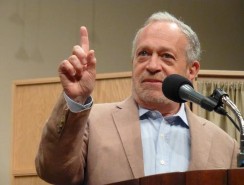
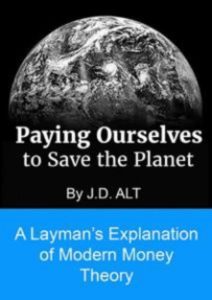 Paying ourselves to save the planet
Paying ourselves to save the planet
by J.D. Alt
For the last two and a half months I’ve been at work on a new book. As it has evolved, I found that I was approaching modern monetary economics from a new direction — one which made an explanation of it much less counter- intuitive and, perhaps, less controversial. The approach is relatively simple and straightforward: follow what I began calling “standard money theory” step by step until one reaches a perspective that has, almost seamlessly, become “modern money theory.”
The book firstly considers why the “standard theory” that many insist on applying to the world is incapable of addressing the climate-change crisis. (The exact same arguments could now be applied to confronting and mitigating the pandemic crisis!) And secondly, it explains how a simple shift in perspective transforms standard money theory – which CAN confront the crisis.
The explanation of the modern money perspective is given twice: firstly in a narrative that explains the Reserve/ bank-dollar system that both private and public enterprise use to buy goods and services; the second rendering of the explanation is more concise and is illustrated with diagrams. This diagrammatic explanation is completely different than what was presented a few years ago in the ebook “Diagrams & Dollars.”

This new book, for me, is a definitive “layman’s explanation” of the modern money theory – and why it is so important, at this moment in time, for it to be understood by the general public. The new diagrams appearing lend themselves to seminar presentations, and to that end I will be making them freely available for download on my website www.jdalt.com. It is my hope they’ll be used by knowledgeable laymen to get serious conversations about it going in local communities. That’s a big hope, I know, but the times call for big hopes. The book is now available at Amazon.
Born on Third Base by Chuck Collins (Chelsea Green Publishing, 2016) Why the Rich Should Reverse Inequality
 All of humanity is now wound together, our fate linked to our ability to respond to a planetary challenge bigger than anything we’ve faced before.
All of humanity is now wound together, our fate linked to our ability to respond to a planetary challenge bigger than anything we’ve faced before.
A class war is brewing in the U.S. and in many other countries. The wealthy possess many advantages and also exercise power which serves to keep the social and economic system operating in their favour. They also tend to isolate themselves in enclaves that separate them from poor people and working families. And those who find it difficult to maintain a decent standard of living are engaged in a rhetorical war against the wealthy. Unfortunately their anger and resentment, while justifiable, often gets in the way of devising new potential solutions.
According to the author, a pause needs to be made on both sides of the class war to allow a new way forward to be given air. He contends that it does not serve the interests of either side to keep our societies operating on the basis of economic apartheid, with most of their wealth continuing to pool at the top of the social ladder. He invites the wealthy to invest themselves and their wealth in struggling communities, and also urges alliances to be constructed between the different social sectors of society.
Source: https://www.chelseagreen.com/product/born-on-third-base/
The Political Economy of Inequality by Frank Stilwell
(Polity, 1st Ed., May 2109)
 Frank Stilwell is Emeritus Professor in the Department of Political Economy at the University of Sydney.
Frank Stilwell is Emeritus Professor in the Department of Political Economy at the University of Sydney.
During the last few decades, the gap between the incomes, wealth and living standards of rich and poor people has risen in most countries. Economic inequality has become a defining issue of our age.
In this book, leading political economist Prof Frank Stilwell provides a comprehensive overview of the nature, causes, and consequences of this growing divide. He shows how we can understand inequalities of wealth and incomes, globally and nationally, examines the scale of the problem and explains how it affects our wellbeing. He also shows that, although governments are often committed to ‘growth at all costs’ and ‘trickle down’ economics, there are alternative public policies that could be used to narrow the gap between rich and poor.
Stilwell’s engaging and clear guide to the issues will be indispensable reading for all students, general readers and scholars interested in inequality in political economy, economics, public policy and beyond.
Economy, Society, Nature: An introduction to the new systems-based, life-friendly economics (World Economics Association Books) Paperback – September 17, 2019 — by Geoff Davies
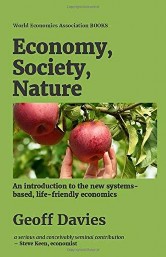 A conception is sketched out that can accommodate not only economic phenomena but the social and natural processes with which they are inextricably entwined. This book – Economy, Society, Nature – is a concise and accessible reformulation of the study of economies, starting from instability and self organisation and requireing minimal mathematics. Systems, money and social interaction are fundamental. The operations of banking, finance, accounting, trade and investment, ownership, rewards and responsibilities, and governance are concisely integrated. The distinctive nature of land is clarified. The potential to reduce material throughput while increasing wellbeing without limit is highlighted. “… we need a much broader debate on economic systems and their place in human and natural systems. This may require many voices and points The study of economies needs to be fundamentally reworked. We need to return to fundamental questions.
A conception is sketched out that can accommodate not only economic phenomena but the social and natural processes with which they are inextricably entwined. This book – Economy, Society, Nature – is a concise and accessible reformulation of the study of economies, starting from instability and self organisation and requireing minimal mathematics. Systems, money and social interaction are fundamental. The operations of banking, finance, accounting, trade and investment, ownership, rewards and responsibilities, and governance are concisely integrated. The distinctive nature of land is clarified. The potential to reduce material throughput while increasing wellbeing without limit is highlighted. “… we need a much broader debate on economic systems and their place in human and natural systems. This may require many voices and points The study of economies needs to be fundamentally reworked. We need to return to fundamental questions.
What is the nature of an economy? What is the purpose of an economy? How does an economy relate to the larger society and to the natural world within which it is embedded? In this book of view, but Davies’ latest contribution is likely to be a serious and conceivably seminal contribution to this debate.” – Professor Steve Keen, author of Debunking Economics
“… comprehensive, accessible, and coherent … a significant contribution to the debate about how our social and economic institutions should be reformed …” – Dr. Steven Hail, University of Adelaide, author of Economics for Sustainable Prosperity
Banking Bad – Whistleblowers, Corporate coverups. One journalist’s fight for the truth — by Adele Ferguson (HarperCollins)
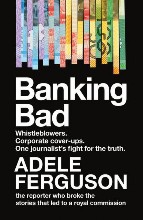
Banking Bad – Whistleblowers, Corporate coverups. One journalist’s fight for the truth — by Adele Ferguson (HarperCollins)
Against all the odds, Australia held a royal commission into the banking and financial services industries. Its revelations rocked the nation. Even defenders of the banks were blindsided. Few people were more instrumental in bringing about the royal commission than journalist Adele Ferguson. Through her exposes in print and on television, she pursued the truth about funds mismanagement, fraud, lack of probity, and the hard-sell culture that took over the finance industry after deregulation in the 1980s. But it wasn’t just light-touch regulators and crooked bankers growing fat on bonuses she put under the spotlight. It was also their victims – both men and women, who had lost everything, and had no recourse when they discovered empty accounts, egregious fees, forged documents and broken promises.
In Banking Bad, Adele Ferguson tells the full story of the power imbalance, toxic culture and cover-ups. She describes the long fight for justice by whistle-blowers, victims and the political mavericks, and she looks at the outcomes of the royal commission – the falls from grace, the damaging hubris, the scathing assessment of the regulators, and the colossal compensation bill – an estimated $10 billion.
Finally, she asks whereto from here? This is a book for every person with a bank account.
Economics, ideological orientation and democracy for sustainable development, by Peter Söderbaum, 2nd Edn (WEA)
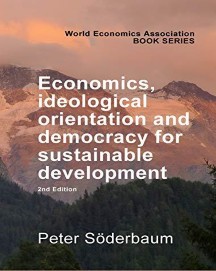
Sustainable development is a challenge for individuals in their various roles, for organizations, and for communities at local, national and global levels. How can we deal with climate change, bio- logical diversity loss or pollution of land and water? How can social inequality be reduced and democracy strengthened? Can mainstream (neoclassical) economics be further developed to deal with these issues? While not excluding positive contributions from mainstream economics within a pluralist perspective, the main strategy in this book is based on a judgment that some new conceptual frameworks and a new economics language are needed. It is even argued that the close to monopoly position of neoclassical theory at university departments of economics at a global level may be part of the sustain- ability problems faced. When compared with neoclassical theory ‘economics’ and ‘the economy’ are understood in alternative ways. A ‘political economic person’ replaces the ‘Economic Man’ assumptions. Similarly, the neoclassical profit-maximizing firm is replaced by a ‘political economic organization’ guided by its ‘mission’. Decision-making is seen as a “matching” process where optimization becomes a special case. Positional analysis (PA) is proposed as a more open alternative to cost-benefit analysis (CBA). Democracy is looked upon as an essential part of economics. Value-neutrality is not possible. Instead ideological orientations will have to be articulated and discussed openly. For example, a specific interpretation of ‘sustainable development’ exemplifies an ideological orientation to be compared with ‘market and economic growth’ ideology. To get closer to sustainable development, institutional changes of a more radical kind must be considered
Peter Söderbaum is professor emeritus in ecological economics at Mälardalen University, Västerås, Sweden and is the author of books such as Ecological Economics (Earth- scan, 2000) and Understanding Sustainability Economics (Earthscan, 2008). He is an editorial advisory board member of Ecological Economics and the International Journal of Pluralism and Economics Education.
Economics and Reality (1997) by Tony Lawson
Lars SyllThe study of ‘modern’ economics has become increasingly irrelevant to the understanding of the real world. In his seminal book Economics and Reality
(1997), Tony Lawson traced this irrelevance to the failure of most economists to match their deductive-axiomatic methods with their subject.
It is – sad to say – as relevant today as it was twenty years ago.
It is still a fact that within mainstream economics internal validity is everything and external validity nothing. Why anyone should be interested in that kind of theorising and modelling is beyond imagination. As long as mainstream economists do not come up with any export licenses for their theories and models to the real world in which we live, they really should not be surprised if people say that this is not science, but autism!
Studying mathematics and logic is interesting and fun. It sharpens the mind. In pure mathematics and logic, we do not have to worry about external validity. But economics is not pure mathematics or logic. It’s about society. The real world.
Economics and Reality was a great inspiration to me twenty years ago, and still is.
Source: Real World Econ Rev, 1 Feb 2019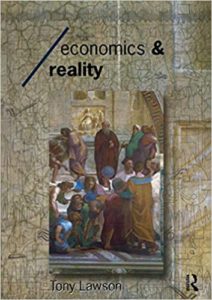
The study of ‘modern’ economics has become increasingly irrelevant to the understanding of the real world. In his seminal book Economics and Reality
(1997), Tony Lawson traced this irrelevance to the failure of most economists to match their deductive-axiomatic methods with their subject.
It is – sad to say – as relevant today as it was twenty years ago.
It is still a fact that within mainstream economics internal validity is everything and external validity nothing. Why anyone should be interested in that kind of theorising and modelling is beyond imagination. As long as mainstream economists do not come up with any export licenses for their theories and models to the real world in which we live, they really should not be surprised if people say that this is not science, but autism!
Studying mathematics and logic is interesting and fun. It sharpens the mind. In pure mathematics and logic, we do not have to worry about external validity. But economics is not pure mathematics or logic. It’s about society. The real world.
Economics and Reality was a great inspiration to me twenty years ago, and still is.
Source: Real World Econ Rev, 1 Feb 2019
https://rwer.wordpress.com/2019/02/01/economics-and-reality/
This Changes Everything– Capitalism vs the Climate by Naomi Klein (Publ 4th Aug 2015, Simon & Schuster)
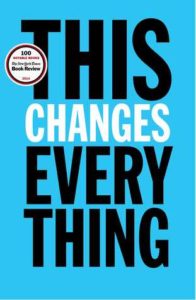
Naomi Klein argues in this book that climate change is not just another issue to be neatly filed between taxes and health care. It’s an alarm that calls us to fix an economic system that is already failing us in many ways. Klein carefully builds the case for how massively reducing greenhouse emissions is our best chance to simultaneously reduce gaping inequalities, re-imagine our broken democracies, and rebuild our gutted local economies. She also exposes the ideological desperation of the climate-change deniers, the delusions of would-be geo-engineers, and the tragic defeatism of far too many mainstream green initiatives. And she shows precisely why the market has not – and cannot – fix the climate crisis but will instead make things worse
Resolving the Climate Change Crisis The Ecological Economics of Climate Change, by Philip Lawn (Springer, 2016)
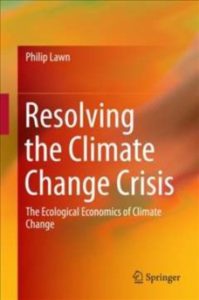
This book by Philip Lawn explains why the climate change crisis is a symptom of a much larger underlying problem – namely, humankind’s predilection with continuous GDP-growth. Given this as a starting point, the world’s high-income nations must begin the transition to a qualitatively-improving steady-state economy and low-income nations must follow suit at some stage over the next 20- 40 years. Unless they do this, a well- designed emissions protocol will be as useless as the paper it is written on.
Adopting an ecological economic approach, this book sets out to show why we must abandon the goal of continuous growth; how we can do so in a way that improves human wellbeing; what constitutes a safe atmospheric concentration of greenhouse gases; and what type of emissions protocol and emissions-trading framework is likely to achieve a desirable climate change outcome.
Failure of the world’s leaders to achieve these goals will not only put future human well-being at risk, it will threaten freedom in the liberal-democratic tradition and international
peace.
Economics for Sustainable Prosperity
Stephen Hail Global Institute for Sustainable Prosperity, st ed. 2018

The central argument of this new book by Steven Hail is that the foundations for sustainable prosperity lie in an approach to economic management based on modern monetary theory and a job guarantee. This approach builds on the work of Keynes, Kalecki, Minsky, Davidson, Godley and other post- Keynesian economists – as well as on research by behavioural economists including Simon, Kahneman and Loewenstein – to explore the role that a permanent, equitable job guarantee can play in building an inclusive, participatory and just society. Orthodox (also known as neoclassical) economics, in its various forms, has failed to deliver sustainable prosperity. An important reason for this failure is its lack of realistic foundations. It misrepresents both human nature and economic institutions, and its use as a frame for the development and assessment of economic policy proposals has been disastrous for social inclusion and the quality of life of millions of people. This book discusses an alternative, more realistic and more useful set of economic foundations, which could deliver a decent quality of life with dignity to all.
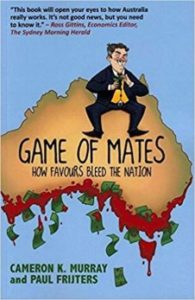 Game of Mates – how favours bleed the nation by Cameron Murray and Paul Frijters
Game of Mates – how favours bleed the nation by Cameron Murray and Paul Frijters
James is our most mundane villain. His victim is Bruce, our typical Aussie, who bleeds from the hip pocket because of James’ actions. Game of Mates tells a tale of economic theft across major sectors of Australia’s economy, showing how James and his group of well-connected Mates siphon off billions of dollars from the economy to line their own pockets.
In property, banking, mining, transport, superannuation and other sectors, James and his Mates cooperate to steal huge chunks of the economic pie. It takes a rigorous economic lens to unpick what it takes for well-connected insiders to siphon off our wealth. The game of grey corrupt- ion – unethical, yet often very legal – is a play for an unearned part of our shared wealth (economic rent) that takes place in Australia’s companies and parliaments.If you want to know how much this costs the nation, how it is done, and what we can do about it, Game of Mates is the book for you.
Seeds of Destruction: Hijacking of the World’s Food System, by F. William Engdahl Published by Global Research, available in paperback and PDF format
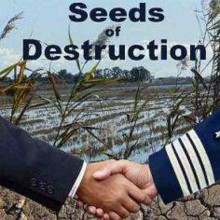 As F. William Engdahl wrote in “Death of the Birds and the Bees Across America“: Birds and bees are something most of us take for granted as part of nature. The expression “teaching about the birds and the bees” to explain the process of human reproduction to young people is not an accidental expression. Bees and birds contribute to the essence of life on our planet. A study by the US Department of Agriculture estimated that “…perhaps one- third of our total diet is dependent, directly or indirectly, upon insect- pollinated plants.”
As F. William Engdahl wrote in “Death of the Birds and the Bees Across America“: Birds and bees are something most of us take for granted as part of nature. The expression “teaching about the birds and the bees” to explain the process of human reproduction to young people is not an accidental expression. Bees and birds contribute to the essence of life on our planet. A study by the US Department of Agriculture estimated that “…perhaps one- third of our total diet is dependent, directly or indirectly, upon insect- pollinated plants.”
The honey bee, Apis mellifera, is the most important pollinator of agricultural crops. Honey bees pollinate over 70 out of 100 crops that in turn provide 90% of the world’s food. They pollinate most fruits and vegetables – including apples, oranges, strawberries, onions and carrots. But while managed honey bee populations have increased over the last 50 years, bee colony populations have decreased significantly in many European and North American nations. Simultaneously, crops that are dependent on insects for pollination have increased.
The phenomenon has received the curious designation of Colony Collapse Disorder (CCD), implying it could be caused by any number of factors. Serious recent scientific studies how- ever point to a major cause: use of new highly toxic systemic pesticides in agriculture since about 2004. If governments in the EU, USA and other countries fail to impose a total ban on certain chemical insecticides, not only could bees become a thing of the past. The human species could face staggering new challenges merely to survive.
The immediate threat comes from the widespread proliferation of commercial insecticides containing the highly toxic chemical with the improbable name, neonicotinoids. Neonicotinoids are a group of insecticides chemically similar to nicotine. They act on the central nervous system of insects. But also on bees and small song birds. Recent evidence suggests they could also affect human brain development in newborn.
Some five to six years back, reports began to circulate from around the world, especially out of the U.S., and then increasingly from around the EU, especially in the U.K., that entire bee colonies were disappearing. Since 2004 over a million beehives have died across the United States and beekeepers in 25 states report what is called Colony Collapse Disorder. In winter of 2009 an estimated one fifth of bee hives in the U.K. were lost, double the natural rate. Government authorities claimed it was a mystery. Read “Death of the Birds and the Bees Across America” [1] by F. William Engdahl.
Today more than ever, the world’s food resources are being hijacked by giant corporations that are turning farms into factories and replacing our natural resources with genetically modified “food-like” substances.
1. https://www.globalresearch.ca/death-of-the-birds-and-the-bees-across-america/31699
F. William Engdahl is a leading researcher on the destruction of the planet’s food system and the profit-driven enterprises that are driving this devastating process.
Finance as warfare – by Michael Hudson (WEA eBooks, 1 July 2015)

The financial sector has the same objective as military conquest: to gain control of land and basic infra-structure and collect tribute. To update von Clausewitz, finance has become war by other means. It is not necessary to conquer a country or even to own its land, natural resources and infrastructure, if its economic surplus can be taken financially. What formerly took blood and arms is now obtain- ed by debt leverage. The creditor’s objective is to obtain wealth by indebting populations and even governments, and forcing them to pay by relinquishing their property or its income. Direct ownership is not necessary. Fully as powerful as military force, debt pressure saves the cost of having to mount an invasion and suffer casualties. Who needs an expensive occupation against unwilling hosts when you can obtain assets willingly by financial means – as long as debt-strapped nations permit bankers and bondholders to dictate their laws and control their planning and politics?
Reclaiming the State: a progressive vision of sovereignty for a post- neoliberal world by William Mitchell and Thomas Fazi (Pluto Press 2017)
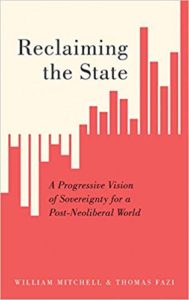
The crisis of the neoliberal order has resuscitated a political idea widely believed to be consigned to the dustbin of history. Brexit, Donald Trump’s election, and the neo-nationalist, anti-globalisation and anti- establishment backlash all involve a yearning for a relic of the past: national sovereignty.
In response to these challenging times, the authors reconceptualise the nation state as a vehicle for progressive change. They show how despite the ravages of neoliberalism, the state still contains resources for democratic control of a nation’s economy and finances. The populist turn provides an opening to develop a feasible political strategy.
This book offers an urgent and prescient political analysis of our current predicament, and lays out a comprehensive strategy for revitalising progressive economics in the 21st century.
Seven Ways to Think Like a 21st-Century Economist (Cornerstone, April 2017) by Kate Raworth
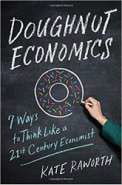
I read this book with the excitement that the people of his day must have read John Maynard Keynes’ General Theory. It is brilliant, thrilling and revolutionary. Drawing on a deep well of learning, wisdom and deep thinking, Kate Raworth has comprehensively reframed and redrawn economics. It is entirely accessible, even for people with no knowledge of the subject. I believe that Doughnut Economics will change the world. — George Monbiot
Defiant earth: the fate of humans in the Anthropocene by Clive Hamilton
Reviewed by John Coulter
 This book is about THE most important issue; humanity’s power to disrupt the Earth System. Population growth and technologically facilitated resource exploitation now threatens humanity’s future. So pervasive and long-lasting have the effects of this shift become that our age should be reclassified from the Holocene to the Anthropocene. No longer can we
This book is about THE most important issue; humanity’s power to disrupt the Earth System. Population growth and technologically facilitated resource exploitation now threatens humanity’s future. So pervasive and long-lasting have the effects of this shift become that our age should be reclassified from the Holocene to the Anthropocene. No longer can we
say ‘remove humans and Nature will bounce back to its Holocene tranquillity’; the effects of changes in the CO2 content of the atmosphere will last for thousands of years as will the mass extinction of species and a host of other environmental impacts. We have entered a
new age. Clive summarises his message in a few words early in the book ‘So today the greatest tragedy is the absence of a sense of the tragedy’
But this is really two books that may have been better separated. The first is well summarised in Clive’s own article in The Guardian [1] and in a recorded interview [2] Neither of these mentions book two which occupies the major portion of Defiant Earth: a dissection of the history, philosophy, religion, politics and economics which, embedded within the growing power of industrial technology has brought us to the edge of this abyss. The disruption of The Earth System contains a number of paradoxes. Evolution did not ‘intend’ to produce a pinnacle species whose powers would rival those of Nature but Clive argues, such is the gulf between us and other living creatures, that we are special. The task is to exercise our power so as to protect the further course of species evolution. Clive speaks of an Earth System ‘fighting back’ yet really the Earth System is only doing what it has always done: respond to impacts in ways determined by its inherent laws. These laws which were and are understandable by humans should have been taken into account. The Swedish scientist Svante Arrhenius predicted and calculated the extent to which increased CO2 could increase global temperature more than 120 years ago.
Much of this ‘book 2’ revolves around discussion of ‘freedom’ and ‘necessity’, terms which Clive does not define. His context implies an unfettered and at times irresponsible freedom, irresponsible when judged by its consequences. Necessity appears to be that which appears necessary ‘at the time’. He rejects in a single sentence the notion that ‘consistency’ (non-contradiction) can provide a direction for humanity.
But despite a large part of the book arguing about the exercise of freedom and necessity he fails to mention Hegel’s aphorism made famous in Garrett Hardin’s 1967 Tragedy of the Commons, ‘Freedom is the recognition of necessity’ (emphasis added). I think this means that one could only ever be truly free if one recognised the bounds within which that freedom can be exercised. Behaviour outside those knowable and understandable bounds will inevitably end in the kind of mess in which humans are now immersed.
The Enlightenment grew from a belief that everything in and about the world was knowable; that the laws governing the world were consistent and understandable. Science has been built on that belief. Surely carrying that principle of comprehensive consistency over into our present predicament could provide a direction if not an ethical motivation. Is it that our leaders do not understand this comprehensive consistency principle or do they deliberately choose to ignore it? Is it inevitable that evolution should produce a destructive pinnacle species? If humans were to disappear might another primate arrive at the same conflicted crossroad in another 6 million years? I don’t know and neither does Clive.
Where might we find the motivation to behave in this comprehensively consistent way? Clive points to the marvellous creativity of humans, their technical brilliance, insights into themselves, and music and science itself. All this could be lost; what wanton vandalism. There is another source. Stephen Boyden has pointed out that of the 6 million years of human evolution for 99.99% we lived in small groups in close contact with Nature. Nature framed our physiology and our psychology. Fulfilling these atavistic needs is an important part of a fully human destiny. Therein lies a major impediment to healing the rift with the Earth System. Increasingly humans are born into a non-Nature world. Is this the source of the ‘absence of a sense of the tragedy’? The challenge of the Anthropocene and this book is to recognise and exercise our comprehensively informed responsibility for the functioning of the Earth System.
Summaries:
https://www.theguardian.com/environment/2017/may/05/the-great-climate-silence-we- are-on-the-edge-of-the-abyss-but-we-ignore-it
https://fuzzylogicon2xx.podbean.com/e/planet-interrupted/
 J is for Junk Economics, by Michael Hudson
J is for Junk Economics, by Michael Hudson
From Dr Paul Craig Roberts: If you want to learn real economics, instead of neoliberal junk economics, read Michael Hudson’s books. What you will learn is that neoliberal economics is an apology for the rentier class and the large banks that have succeeded in financializing the economy . . . “
Capital in the 21st Century by Thomas Piketty – ERA Review Editor
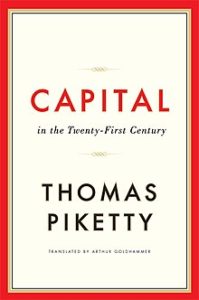
Capital in the Twenty-First Century is a 2013 book written by French economist Thomas Piketty. It focuses on wealth and income inequality and their variation and distribution since the 18th century, using datasets from many countries. It was initially published in French, with an English translation released in April 2014. The central thesis of the book is that inequality is not an accident, but rather a feature of capitalism, and can only be reversed through state intervention. The book thus argues that unless capitalism is reformed in a major way, the very democratic order will be threatened.
Source: http://en.wikipedia.org/wiki/Capital_in_the_Twenty-First_Century
What about me? by Paul Verhaughe The Struggle for Identity in a Market-Based Society
Scribe Publications, 2014; review by Anna Fishzon)
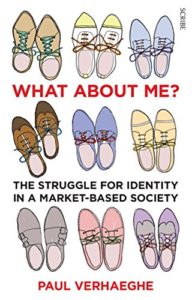 Feeling exhausted, hopeless, and anxious? You might be suffering from symptoms of neoliberalism, according to Prof Paul Verhaeghe. In this book he takes on “Enron society”, demonstrating how the core insights and principles of clinical psychology can be brought to bear on social relations, history, and ideology. The last 50 years have witnessed a staggering proliferation of psychiatric disorders – and a bloated Diagnostic and Statistical Manual for Mental Disorders (DSM) that has both reflected and caused over-diagnosis, disciplining, and medication of individuals afflicted with social rather than mental problems.
Feeling exhausted, hopeless, and anxious? You might be suffering from symptoms of neoliberalism, according to Prof Paul Verhaeghe. In this book he takes on “Enron society”, demonstrating how the core insights and principles of clinical psychology can be brought to bear on social relations, history, and ideology. The last 50 years have witnessed a staggering proliferation of psychiatric disorders – and a bloated Diagnostic and Statistical Manual for Mental Disorders (DSM) that has both reflected and caused over-diagnosis, disciplining, and medication of individuals afflicted with social rather than mental problems.
How can you not feel dejected and panic-stricken, asks Verhaeghe, when you live in a “meritocracy” that ensures some an obvious advantage? When you are evaluated incessantly and told you are not trying hard enough? When your work environment and community lack authority figures who take responsibility and set limits, leaving you to compete with coworkers and friends for scarce resources; and your creativity and passionate labor are immediately quantified and assessed for market value? You might even be relieved, argues Verhaeghe, to be diagnosed with an illness – and to incorporate it into your identity in order to excuse your inability to measure up. With so few options and so much pressure to fill the very limited number of slots designated for “winners”, having a neurologically determined ailment often feels better than being a failure. Using a psychiatric disorder as a shield from guilt is not malingering since the pervasiveness of neoliberal logic really has made you sick!
What About Me? traces notions of identity historically, providing an instructive overview of the shifts in Western thinking about the self. The story proceeds from Aristotelian immanence to Christian transcendence: the ancient Greek view that ethics are innate and need to be cultivated through self-care to the Christian belief that ethics are external and divine and inherently sinful humans can only aspire to goodness through spiritual communion. Since the latter half of the twentieth century, European and American neoliberal norms again have turned to the individual but without the classical period’s interest in citizenship or religious references to authority and God. Neoliberalism instead promotes a hyper-individualism supported by narrow positivism (quantitative measurement) and meritocracy (for the privileged classes) applied across a wide range of disciplines and professions, including academia and healthcare. Neoliberal success is equated with profit and human beings are understood “naturally” to be competitive, selfish, and unethical (hence the avalanche of evaluation and rules). But, following behavioral biologist Frans de Waal, Prof Verhaeghe suggests that altruism as well as aggression in here to higher primates and the cultural environment determines whether empathy or egotism predominates. The neoliberal obsession with the individual at the expense of the community ignores the fundamental human craving for love and hospitality – affecting the behavior that is necessary for our wellbeing.
Dr Paul Verhaeghe is a Belgian professor of clinical psychology and psychoanalysis.
Green Capitalism: The God that Failed (WEA eBook Library) by Richard Smith
Capitalism is, overwhelmingly, the main driver of planetary ecological collapse
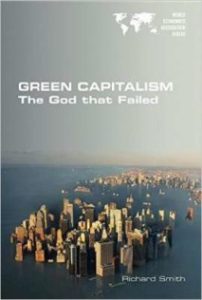 From climate change to resource over-consumption to pollution, the engine that has powered three centuries of accelerating economic development revolutionizing technology, science, culture, and human life itself is, today, a roaring out- of-control locomotive mowing down continents of forests, sweeping oceans of life, clawing out mountains of minerals, drilling, pumping out lakes of fuels, devouring the planet’s last accessible resources to turn them all into “product” while destroying fragile global ecologies built up over eons of time. Between 1950 and 2000 the global human population more than doubled from 2.5 to 6 billion, but in these same decades consumption of major natural resources soared more than 6 fold on average, some much more. Natural gas consumption grew nearly 12 fold, bauxite (aluminium ore) 15 fold. And so on. At current rates, Harvard biologist E.O Wilson says that: “half the world’s great forests have already been levelled and half the world’s plant and animal species may be gone by the end of this century.”
From climate change to resource over-consumption to pollution, the engine that has powered three centuries of accelerating economic development revolutionizing technology, science, culture, and human life itself is, today, a roaring out- of-control locomotive mowing down continents of forests, sweeping oceans of life, clawing out mountains of minerals, drilling, pumping out lakes of fuels, devouring the planet’s last accessible resources to turn them all into “product” while destroying fragile global ecologies built up over eons of time. Between 1950 and 2000 the global human population more than doubled from 2.5 to 6 billion, but in these same decades consumption of major natural resources soared more than 6 fold on average, some much more. Natural gas consumption grew nearly 12 fold, bauxite (aluminium ore) 15 fold. And so on. At current rates, Harvard biologist E.O Wilson says that: “half the world’s great forests have already been levelled and half the world’s plant and animal species may be gone by the end of this century.”
Corporations aren’t necessarily evil, though plenty are diabolically evil, but they can’t help themselves. They’re just doing what they’re supposed to do for the benefit of their shareholders. Shell Oil can’t help but loot Nigeria and the Arctic and cook the climate. That’s what shareholders demand. BHP Billiton, Rio Tinto and other mining giants can’t resist mining Australia’s abundant coal and exporting it to China and India.
Mining accounts for 19% of Australia’s GDP and substantial employment even as coal combustion is the single worst driver of global warming. IKEA can’t help but level the forests of Siberia and Malaysia to feed the Chinese mills building its flimsy disposable furniture (IKEA is the third largest consumer of lumber in the world).
Apple can’t help it if the cost of extracting the “rare earths” it needs to make millions of new iThings each year is the destruction of the eastern Congo – violence, rape, slavery, forced induction of child soldiers, along with poisoning local waterways. Corporations like Monsanto and DuPont and Syngenta and Bayer Crop Science have no choice but to wipe out bees, butterflies, birds, small farmers and extinguish crop diversity to secure their grip on the
world’s food supply while drenching the planet with their Roundups, Atrazines and neonicotinoids. This is how giant corporations are wiping out life on earth in the course of a routine business day. And the bigger the corporations grow, the worse the problems become.
Econobabble: How to decode political spin and economic nonsense, by Richard Denniss
(John Coulter)
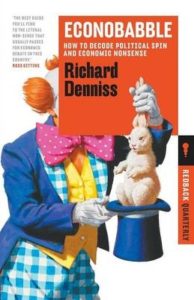 This book delves into an important matter, how pervasively we are deliberately and misguidedly misled by most of the economic debate and policy which daily surrounds us. However, I believe the book is too kind to economists and to economics more generally, and is pervaded with a left slant that may unfortunately stop some readers from hearing its message.
This book delves into an important matter, how pervasively we are deliberately and misguidedly misled by most of the economic debate and policy which daily surrounds us. However, I believe the book is too kind to economists and to economics more generally, and is pervaded with a left slant that may unfortunately stop some readers from hearing its message.
In the earlier chapters I found too many of the examples provided were drawn from contemporary Australian Coalition speeches and reports. And though the quotes do show some flaws in the use of economics (flaws often exploited for self-interest) the same flaws can be found more widely and over a much longer time scale. Every evening on ABC TV News we find examples of the same gobbledegook. Quoting from these would have been more neutral. Thus it would have been better to dissociate the flaws from who currently benefits until further into the book. For this reason I would recommend that the very good last chapter be read first.
I thought Richard excuses economists and economics too much for their part in this mess and lays the blame most heavily on politicians and economic commentators, ignoring the very long history of deliberate distortion among academic economists.
Economics as a discipline began as a description of how the production and distribution of wealth was practised in the early days of the emergence of capitalism, and then morphed into a belief that this description was the natural order of things, and thence into a defence of that order because it happened to serve the interests of the most powerful – leading to the doctrine of ‘the invisible hand’.
It is worth looking closely at the rise of Georgian (Henry George, ‘Progress and Poverty’ 1879) thinking, which sought to place taxation primarily on land (or in today’s terms, the profits extracted from natural resources — especially non- renewable resources). Classical economics took land, capital and labour as the three primary inputs to the economic engine. For a time George was more widely recognised than was Marx, but his beliefs and his policy proposals were strongly resisted by the U.S. land and industrial barons of the time who went about creating university faculties of economics around persons who espoused that capital and labour were the primary inputs, capital and land being interchangeable. Thus nature and biophysical reality were written out of economics, and this omission continues to dominate most economic discourse today.
Yes, econobabble infects almost all economic discussion but it can be found as much in the mouths of Labor and Coalition pollies, as with journalists and economic commentators. Its eradication requires a radical shift in mainstream academic economics.
Keynes had no formal training in economics yet came closest to changing its direction. It’s a pity he had no formal training in thermodynamics or the shift may have been more radical. His remark that formal education was ‘the inculcation of the incomprehensible into the indifferent by the incompetent’ is most relevant in this situation. Economics needs to be reinvented by those with thermodynamic, biophysical and anthropological understanding.
 Dr John Coulter is a scientist, former senator for SA, former vice president of Australians for a Sustainable Population, and an ERA member living in S A.
Dr John Coulter is a scientist, former senator for SA, former vice president of Australians for a Sustainable Population, and an ERA member living in S A.
Science and the Economic Crisis – Francesco Sylos Labini (by Lars Syll)
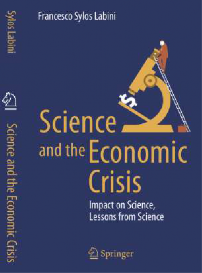
From the times of Galileo and Newton, physicists have learned not to confuse what is happening in the model with what instead is happening in reality. Physical models are compared with observations to prove if they are able to provide precise explanations. Can one argue that the use of mathematics in neoclassical economics serves similar purposes? Gillies‘s conclusion is that, while in physics mathematics was used to obtain precise explanations and successful predictions, one cannot draw the same conclusion about the use of mathematics in neoclassical economics in the last half century. This analysis reinforces the conclusion about the pseudo-scientific nature of neoclassical economics … given the systematic (and socially catastrophic) failure of its predictions.
Source: Real-World Econ Rev 17 Apr 2016 https://rwer.wordpress.com/2016/04/17/
Francesco Sylos Labini is a researcher in physics. His book is to be highly recommended reading to anyone with an interest in understanding the pseudo-scientific character of modern mainstream economics. Turning economics into a ‘pseudo-natural- science’ is – as Keynes made very clear in a letter to Roy Harrod already back in 1938 – something that has to be firmly ‘repelled’.
The seven deadly innocent frauds of economic policy – by Warren Mosler

This heterodox economics primer by Warren Mosler [1] discusses, in jargon- free terms, some of the economic misconceptions and misunderstandings (innocent frauds) that have led goverents and central banks in modern times to commit economic vandalism, leading to immense human suffering and unhappiness.
The following is a succinct overview of the seven fraudulent viewpoints alluded to in the title (each fraud merits its own chapter):
- The government must raise funds through taxation or borrowing in order to spend. In other words, government spending is limited by its ability to tax or borrow.
- With government deficits, we are leaving our debt burden to our children.
- Government budget deficits take away savings.
- Social Security is broken.
- The trade deficit is an unsustainable imbalance that takes away jobs and output.
- We need savings to provide the funds for investment.
- It’s a bad thing that higher deficits today mean higher taxes tomorrow.
This book was published in 2010 by Valance Co., Inc., by arrangement with the author – www.moslereconomics.com
Source: 1. http://moslereconomics.com/wp-content/powerpoints/7DIF.pdf
Warren Mosler has a strong background in finance and fixed income trading, and he has played a major role in developing a heterodox school of economics called Modern Monetary Theory (MMT). Here is his own explanation:
” Unemployment is totally unnecessary. A hour of unemployment is an hour of productivity lost forever. This should not happen. I would offer a job to everyone who wanted a job with no ‘ifs and buts’. My financial back- ground is extensive. I was a founder of the III investment companies, which had been
the number one ranked fund by MAR in risk adjusted returns for the 10 years previous to when I turned control over to my partners in 1997. I originated the ‘mortgage swap’ and in 1996 orchestrated the largest futures delivery to date (over $20 billion notional) in Japan. I have developed the only trading interest rate swap futures contract (in operational terms). I say in operational terms because my product and process was to eliminate the risk and lack of transparency of the existing market by having a centralized clearing system.
Since I was a kid I have always loved speed. I love to build and race cars. Those of you from South Florida will know me from making bets with anyone who believed that they had a car that could beat mine. I designed my cars with the simple solution which was to make it lighter. My car has evolved into the MT900 which has been a very successful racing car in Europe.
Today, I spend my time educating people on economics and how monetary and fiscal policy really operates. My background led to a true understanding about what is money, how it is created, about banking and how the Federal Reserve controls interest rates – not the money supply.”
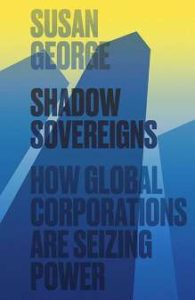
Shadow Sovereigns: How Global Corporations are Seizing Power
Susan George
The Rise of the Illegitimate Authority of Transnational Corporations
Everywhere you look you find masses, droves, gangs of unelected, unaccountable, profit-oriented individuals, corporations and new institutions surfacing, making official policy. Transnational corporations are demanding the right to what they call “competitiveness”: lower taxes, control over lawmaking, and the right to sue governments for affecting profits. In her new book, Shadow Sovereigns: How Global Corporations are Seizing Power, Susan George shines a light on the secret corporate coalitions that are influencing critical government decisions and posing a direct threat to democracy.
Sources: Susan George Dec 6, 2015
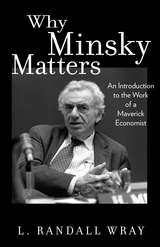 Why Minsky Matters: An introduction to the work of a maverick economist
Why Minsky Matters: An introduction to the work of a maverick economist
The author of this eBook is L. Randall Wray, professor of economics at the University of Missouri, Kansas City, and senior scholar at the Levy Economics Institute of Bard College. Perhaps no economist was more vindicated by the global financial crisis than Hyman P. Minsky (1919–96). Although a handful of economists raised alarms as early as 2000, Minsky’s warnings began a half-century earlier, with writings that set out a compelling theory of financial instability. Minsky’s most important idea is that “stability is destabilizing”: to the degree that the economy achieves what looks to be robust and stable growth, it is setting up the conditions in which a crash becomes ever more likely.
 Resolving the Climate Change Crisis: The Ecological Economics of Climate Change
Resolving the Climate Change Crisis: The Ecological Economics of Climate Change
(To be published by Springer) by Philip Lawn
Many people regard climate change as an impending problem. I don’t. Given the need to take immediate and drastic action to reduce greenhouse gas emissions, the threat posed by climate change has already reached a crisis point. However, a successful resolution to the crisis will require more than an effective emissions protocol. Unless the world’s high-income nations begin the transition to a qualitatively-improving steady-state economy, and low-income nations follow suit at some stage over the next 20-40 years, trying to avoid catastrophic climate change will be akin to putting a square peg in a round hole. To put it another way, if the world continues its predilection with continuous GDP growth, a well-designed emissions protocol will be as useless as the paper it is written on.
This book sets out why we must abandon the goal of continuous growth; how we can do so in a way that improves human well-being; what constitutes a safe atmospheric concentration of greenhouse gases; and what type of emissions protocol and emissions-trading framework is likely to achieve a desirable climate change outcome as well as promote the broader goal of sustainable development.
During the preparation of this book, a number of crucial United Nations climate change conferences were convened, including the highly publicised Copenhagen meeting in 2009. The initial aim of the Copenhagen conference was to establish a legally-binding emissions protocol to take effect at the end of the first Kyoto commitment period in 2012. Sadly, no such accord emerged. At the 2012 meeting in Doha, an agreement was reached to further extend the Kyoto Protocol and to develop a new emissions protocol in Paris by 2015 to take effect in 2021. As promising as this sounds, deep emissions cuts must begin in 2016 if the rise in average global temperatures is to be restricted to 2oC above pre- industrial levels. Thus, even if a strict new protocol is established, more must be done to kick-start the reduction in global greenhouse gas emissions during the 2016-2020 period.
Unfortunately, as I write this summary, there is little sign that a new emissions protocol will achieve the emissions cuts necessary to prevent dangerous if not catastrophic climate change. Nor, given the need to quell GDP growth to realise greenhouse gas emissions targets, does an international agreement look like surfacing to deal adequately with population growth, biodiversity loss, and the rising rate of natural resource use — a sad reality attested by the abject failure of the 2012 United Nations Conference on Sustainable Development in Rio de Janeiro (Rio+20).
With the Paris conference fast approaching and the IPCC’s Fifth Assessment Report having reconfirmed humankind’s contribution to global warming, the world’s leaders must take the ‘bull by the horns’ and put long-term concerns ahead of short-term political interests. Should they fail to do so, humanity not only faces a climatically tempestuous future, but one where human well-being, freedom in the liberal-democratic tradition, and international peace will be gravely jeopardised.
Dr Philip Lawn is Associate Professor at the Finders University Business School, is one of Australia’s best known ecological economists, and is a member of ERA.
Eurozone Dystopia: Groupthink and Denial on a Grand Scale (Edward Elgar Publishing) by Prof Bill Mitchell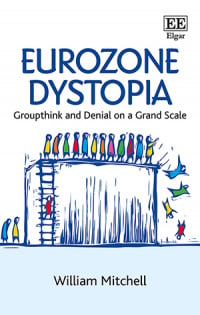
Eurozone Dystopia traces the origin of the Eurozone and shows how the historical Franco-German rivalry combined with the growing dominance of neo-liberal economic thinking to create a monetary system that was deeply flawed and destined to fail. It argues that the political class in Europe is trapped in a destructive groupthink which prevents it from seeing their own policy failures. Millions are unemployed as a result and the member states are caught in a cycle of persistent stagnation and rising social instability.
Providing a detailed historical analysis of the evolution of the Eurozone and its failings from the 1940s to the present day, the book argues that the Eurozone lacks the necessary monetary architecture, particularly the existence of a federal fiscal function which could have resolved the economic crisis quickly.
The author examines the options available to Europe and concludes that an orderly abandonment of the euro and a return to national currencies is the superior option available. The justification for this conclusion is exhaustively argued within a Modern Monetary Theory framework.
This thoughtful and accessible account of Europe’s economic woes will appeal to all those who are seeking an explanation for the crisis and are receptive to sensible and credible alternatives to the current scenario.
Dr Bill Mitchell is Professor in Economics at Charles Darwin University, and is Director of the Centre of Full Employment and Equity, a research centre at the Univ. of Newcastle.
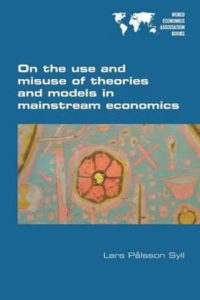 On the use and misuse of theories and models in mainstream economics
On the use and misuse of theories and models in mainstream economics
Author: Lars Pålsson Syll
A wonderful set of clearly written and highly informative essays by a scholar who is knowledgeable, critical and sharp enough to see how things really are in the discipline, and honest and brave enough to say how things are. A must read especially for those truly concerned and/or puzzled about the state of modern economics.
Table of Contents:
- Introduction.
- What is (wrong with) economic theory.
- Capturing causality in economics and the limits of statistical inference.
- Microfoundations – spectacularly useless and positively harmful.
- Economics textbooks – anomalies and transmogrification of truth.
- Rational expectations – a fallacious foundation for macroeconomics.
- Neoliberalism and neoclassical economics.
- The limits of marginal productivity theory.
- References
- About the author:
- Lars Pålsson Syll has a PhD in economic history (1991) and a PhD in economics (1997), both at Lund University, Sweden.
From 2004 he has been professor of social science at Malmö University, Sweden. His primary research areas are in the philosophy and methodology of economics, theories of distributive justice, and critical realist social science. As social scientist and economist he has been strongly influenced by J M Keynes and Hyman Minsky.
Bubble Economics: by Paul Egan and Philip Soos
World Economics Association (WEA)
 In Bubble Economics, Paul Egan and Philip Soos explore a depressed Australia in the 1840s,1890s and 1930s. They detail patterns of boom- bust credit and asset cycles which heralded financial instability, particularly following speculation in commercial and residential land markets.
In Bubble Economics, Paul Egan and Philip Soos explore a depressed Australia in the 1840s,1890s and 1930s. They detail patterns of boom- bust credit and asset cycles which heralded financial instability, particularly following speculation in commercial and residential land markets.
A financial stability model is put forward to predict economic down- turns which is based on Georgist, post-Keynesian and behavioural finance schools of economic thought, informed by data from 1830 to 2013.
The trends in Australia’s current trade settings, residential property market and banking sector are ominously similar to the key precursors to Australia’s ‘Great Depression’ of the 1890s – a recession or depression may now be imminent.
Egan and Soos expose ‘rentier economics’ in the land down under and discard the dominant neoclassical paradigm, bringing a fresh perspective to the intense debate about Australia’s economic future.
Sustainable energy solutions for climate change by Mark Diesendorf
John Coulter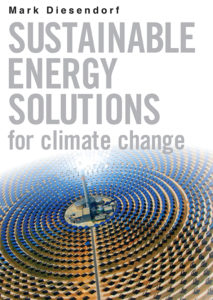 I first met Mark Diesendorf in the late 1970s when he worked for CSIRO and was modelling the WA and SA
I first met Mark Diesendorf in the late 1970s when he worked for CSIRO and was modelling the WA and SA
electricity grids exploring how wind generated electricity would fit. In 2014 Mark comes with a lifetime of work within the field of environmental sustainability with particular reference to renewable energy and this book is highly recommended.
The book is in three parts.
Mark begins by explaining energy fundamentals. That this is necessary is a sad reflection on the quality and content of Australia’s educational system. Everyone should understand that without energy flow nothing, absolutely nothing happens. Energy is the most basic of all resources; it makes all other resources available.
Mark’s introduction to the basics of energy is excellent and will be a good primer for all those who have not had a few years of high-school physics to guide them through life – and the rest of the book.
In the second half of the 20th century it has become increasingly obvious that energy use has become hedged by serious threats. For a century and a half humanity’s use of energy has been dominated by exploitation of fossil fuels: coal, oil and gas, which has had and will continue to have increasingly adverse effects on global climate indicating that the use of fossil fuels must be rapidly curtailed.
Fossil fuels are non-renewable resources and will run out well within this century if exponential expansion of their use were to continue. Most transport depends on petroleum, a resource, the conventional sources of which peaked in about 2006. A change in transport technology is urgent.
For both these reasons radical restructuring of our sources and uses of energy is imperative.
Part B of the book sets out the technologies which are sustainable dividing them into those that are already in widespread commercial use such as wind and photovoltaic electricity, those that sit between proof of concept or pilot stage and full commercialisation and those that may, in future prove useful and commercially viable. Mark applies the same division to the technologies that seek to continue the use of non-renewable resources showing that coal burning with carbon capture and storage is a commercially unproven technology and quotes the International Energy Agency which projects that nuclear may only reach one third of the renewable energy supply by 2050 – far too late to be useful.
Mark shows that significant savings in energy can be made through technical improvements and changes in social and work arrangements and practices. Solar photovoltaics and wind generated electricity are already commercially competitive, especially if the full externalised cost of fossil fuels is internalised. South Australia derived 28% of its electricity from wind in 2013 and PVs have shaved a significant bit off the air conditioning caused demand peak on hot summer days. Mark believes that a dispersed mix of renewable technologies can meet demand but not if population and per capita demand are allowed or encouraged to continue. He sees a necessary shift from car travel to electric public transport both within and between cities.
Part C deals with policies, strategies, politics and action.
An array of factors touching on many areas is covered here: recognising the serious defects in GDP as a useful measure, other measures of progress, removing subsidies for fossil and nuclear, carbon taxes and emission trading, curbing population growth by non-coercive means, tighter controls on advertising to discourage consumption growth, a Tobin Tax, resource based taxes and many more.
As I read through this section I was struck by the widening gap between what needs to be done and could be done on the one hand and what our governments are doing on the other. An example of this came to my attention in the last few days. The Federal Government’s Issues Paper which is a prelude to the development of, first a Green Paper and then a final White Paper, on Energy Policy.
The Issues Paper does not mention climate change at all and the promised 5% emission reduction by 2020 is dealt with as an impediment to a Business as Usual energy policy.
This book is filled with information, explanation and ideas for innovative and practical change. There are many useful tables and graphs. One thing which I would have liked to see included would have been a worked example based on actual grid data over a significant period showing how each technology/social/behavioural change would have bridged the energy demand.
Whether we like it or not energy policy will dominate all other considerations in the decades ahead. This book should be made compulsory reading for all starting first with our politicians and journalists.
Publication info: UNSW Press 2014, ISBN 9781742233901 (Paperback) pp 365
![]()
Dr John Coulter is a scientist, former senator, former vice president of Australians for a Sustainable Population, and is a member of ERA living in SA.
The Price of Inequality – How Today’s Divided Society Endangers Our Future by Joseph Stiglitz
 Prof Joseph Stiglitz was Chief Economist at the World Bank until Jan 2000. Currently he is at Columbia University Business School and is Chair of the Management Board and Director of Graduate Summer Programs, Brooks World Poverty Institute, University of Manchester. He won the ‘Nobel’ Economics Prize in 2001. He is author of Globalization and Its Discontents,The Roaring Nineties, Making Globalization Work, and Freefall – all published by Penguin.
Prof Joseph Stiglitz was Chief Economist at the World Bank until Jan 2000. Currently he is at Columbia University Business School and is Chair of the Management Board and Director of Graduate Summer Programs, Brooks World Poverty Institute, University of Manchester. He won the ‘Nobel’ Economics Prize in 2001. He is author of Globalization and Its Discontents,The Roaring Nineties, Making Globalization Work, and Freefall – all published by Penguin.
In regard to his latest book, Prof Stiglitz succinctly summarized his own argument in a recent online column: “Inequality leads to lower growth and less efficiency. Lack of opportunity means that its most valuable asset – its people – is not being fully used. Many at the bottom, or even in the middle, are not living up to their potential, because the rich, needing few public services and worried that a strong government might redistribute income, use their political influence to cut taxes and curtail government spending. This leads to underinvestment in infrastructure, education and technology, impeding the engines of growth . . . and most importantly, US inequality is undermining its values and identity. With inequality reaching such extremes, it is not surprising that its effects are manifest in every public decision, from conduct of monetary policy to budgetary allocations. America has become a country not ‘with justice for all,’ but rather with favoritism for the rich and justice for those who can afford it – so evident in the foreclosure crisis, in which the big banks believed that they were too big not only to fail, but also to be held accountable.”

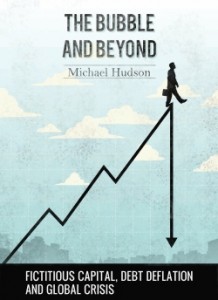 The Bubble and Beyond: Fictitious Capital, Debt Deflation and the Global Crisis – Michael Hudson
The Bubble and Beyond: Fictitious Capital, Debt Deflation and the Global Crisis – Michael Hudson
This is an overview by Prof Michael Hudson on his latest book, published in 2012.
This summary of my economic theory traces how industrial capitalism has turned into finance capitalism. The finance, insurance and real estate (FIRE) sector has emerged to create “balance sheet wealth” not by new tangible investment and employment, but financially in the form of debt leveraging and rent-extraction. This rentier overhead is overpowering the economy’s ability to produce a large enough surplus to carry its debts. As in radioactive decay, we are passing through a short-lived and unstable phase of “casino capitalism,” which now threatens to settle into leaden austerity and debt deflation.
This situation confronts society with a choice either to write down debts to a level that can be paid (or indeed, to write them off altogether with a Clean Slate), or to permit creditors to foreclose, concentrating property in their own hands (including whatever assets are in the public domain to be privatized) and imposing a combination of financial and fiscal austerity on the population. This scenario will produce a shrinking debt-ridden and tax-ridden economy.
The latter is the path on which the Western nations are pursuing today. It is the opposite path that classical economists advocated and which Progressive Era writers expected to occur, given the inherent optimism of focusing on technological potential rather than on the political stratagems of the vested rentier interests fighting back against the classical idea of free markets and economic reforms to free industrial capitalism from the surviving carry-overs of medieval and ancient privileges and essentially corrosive, anti-social behavior. Today’s post-industrial strategy of “wealth creation” is to use debt leveraging to bid up asset prices. From corporate raiders to arbitrageurs and computerized trading programs, this “casino capitalist” strategy works as long as asset prices rise at a faster rate than the interest that has to be paid. But it contains the seeds of its own destruction, because it builds up financial claims on the assets pledged as collateral – without creating new means of production. Instead of steering credit into tangible capital formation, banks find it easier to make money by lending to real estate and monopolies (and to other financial institutions). Their plan is to capitalize land rent, natural resource rent and monopoly privileges into loans, stocks and bonds.
This leads the banks to act as lobbyist for their rentier clients, to free them from taxes so that they will have more available to pay interest. The resulting tax shift onto labor and industry adds a fiscal burden to the debt overhead. This is not a natural and even inevitable form of evolution. It is a detour from
the kind of economy and indeed free market that classical writers sought to create. With roots in the 13th-century Schoolmen discussing Just Price, the labor theory of value was refined as a tool to isolate economic rent as that element of price that had no counterpart in actual or necessary costs of production. Banking charges, monopoly rent and land rent were the three types of economic rent analyzed in this long classical tradition. These rentier charges were seen as unnecessary and exploitative special privileges carried over from the military conquests that shaped medieval Europe. A free market was defined as one free of such overhead charges.
This classical view of free markets as being free of an unearned “free lunch” was embodied in the Progressive Era’s financial and tax reforms. But the rentiers have fought back. The financial sector seeks to justify today’s deepening indebtedness on the ground that it “creates wealth” by debt leveraging. Yet the banks’ product is a debt overhead, leaving debt deflation in its wake as debtors try to pay debts that can’t be paid without drastically reducing consumption and investment. A shrinking economy falls further into arrears in a debt spiral.
The question today is whether a new wave of reform will arise to restore and indeed complete the vision of classical political economy that seemed to be shaping evolution a century ago on the eve of World War I, or whether the epoch of industrial capitalism will be rolled back toward a neofeudal reaction defending rentier interests against reform. What is up for grabs is how society will resolve the legacy of debts that can’t be paid. Will it let the financial sector foreclose, and even force governments to privatize the public domain under distress conditions? Or will debts be written down to what can be paid without polarizing wealth and income, dismantling government, and turning tax policy over to financial lobbyists pretending to be objective technocrats?
To provide a perspective on the financial sector’s rise to dominance over the industrial economy, Part I reviews how classical economists developed the tools to measure how finance now plays role that landlords did in Physiocratic and Ricardian theory: as beneficiaries of feudal privileges that oblige society to pay them for access to credit as well as land. As land ownership has been democratized, new buyers obtain credit to purchase homes and office buildings by pledging the rental income to bankers. About 80 percent of bank loans in the United States, Britain and other English-speaking countries are real estate mortgages, making land the major bank collateral. The result is that mortgage bankers receive the rents formerly taken by a hereditary aristocracy in post-feudal Europe and the colonies it conquered.
Whatever the tax collector relinquishes is available for this end. This has led the financial sector to subsidize popular opposition to taxing property – reversing the ideology of free markets held by the classical economic reformers. And with the financialization of real estate providing the post- industrial model, corporate raiders since the 1980s have adopted the speculator’s motto, “Rent is for paying interest,” using corporate cash flow to make a deal with their backers to obtain loans to take over companies already in place – and bleed them.
This phenomenon is called financialization, and Part II of this book describes how it has transformed the economics of real estate, industry and pension fund saving into a Bubble Economy based on debt-leveraged asset- price inflation – leaving debt deflation in its wake. The banker’s business plan, after all, is to turn as much of the economic surplus as possible into a flow of interest payments. But this must be self-defeating. Paying debt service diverts revenue away from being spent on consumption and tangible capital investment. This causes debt deflation and imposes financial austerity. Capital and infrastructure are bled to squeeze out the revenue to pay bankers and other creditors, depleting the economy’s reproductive powers.
What is unique to the post-1980 Bubble Economy is the tactic by which austerity has been averted, by new credit creation to inflate asset prices in what is rightly termed a Ponzi scheme. (The appendix at the end of this volume defines the terms and concepts by which I describe this process.) Instead of interest rates rising to reflect the increasing risks of the debt-ridden economy, banks kept the financialization process going by easing credit terms: lowering interest rates and the amortization rate (culminating in “interest only loans), and also lowering down payments (for zero down payment loans) and credit standards (appropriately called “liars’ loans”).
The direct effect of collateral-based lending is to bid up prices for the real estate, stocks and bonds pledged as collateral for larger and larger loans. An asset is worth whatever a bank will lend against it, and easier credit terms serve to preserve the market price of assets pledged for debt. This is the case even as the economy diverts more of its income – and transfers more of its capital and future income – to the financial sector, which concentrates wealth in its own hands.
Federal Reserve Chairman Alan Greenspan encouraged mortgage borrowers to think of themselves as getting richer as the market price of their homes rose in the early 2000s. But the “wealth creation” was debt-leveraged, and easy credit obliged new buyers to take on a lifetime of debt to afford housing. After 2008 their mortgages had to paid even as a quarter of U.S. residential real estate fell into negative equity when market prices plunged below the level of the mortgages attached to it.
A similar phenomenon has occurred as education has been financialized. Students must take on decades of student-loan obligations and pay them regardless of whether the education enables them to get jobs in an economy shrinking from debt deflation. The magnitude of these loans now exceeds $1 trillion – larger even than credit-card debt. Instead of being treated as a public utility to prepare the population for gainful work, the educational system has been turned into an opportunity for banks to profiteer from a debt market guaranteed by the government. The economy’s circular flow becomes a vicious circle as paying debt service leads to smaller market demand for goods. Investment and employment are cut back, government budgets move into deficit, forcing cutbacks in revenue sharing with localities and subsidies for education. Schools raise their tuition levels, obliging students and families to take on more debt, creating yet more debt deflation.
Other public infrastructure is sold off to pay down debts, and the buyers raise access prices and tolls on roads and other privatized transportation – and so on throughout the economy. Debts mount up increasingly owing to arrears in making payments, losing all relationship with the realistic ability to pay.
What has gone relatively unremarked by economists is how financialization of the economy has transformed the idea of saving. In times past, saving was non-spending on goods and services – in the form of liquid assets. Typically on a national scale, between one-sixth and one-fifth of income would be saved – and invested in capital on the other side of the balance sheet. But since the 1980s, as banks loosened lending standards on real estate and made and the financial sector in general turned increasingly to financing corporate raiders, mergers and acquisitions, the way to create future wealth was not to save, but was to go into debt. The aim was capital gains more than current income. And after 2001 many families “made more” on rising market home prices than they made in salary (not to speak of being able to save out of their salary).
Under financialization, the strategy was to seek capital gains, riding the wave of asset-price inflation being fueled by Alan Greenspan at the Federal Reserve Board. Investment performance was measured in terms of “total returns,” defined as income yield plus capital gains. And the way to maximize these gains was to borrow at a relatively low interest rate, to buy assets whose price was rising at a higher rate. For the first time in recorded history, large numbers of people went into debt not out of need, not involuntarily and as a result of running arrears as a result of inability to pay, but voluntarily, believing that debt leveraging was the quickest and easiest way to get rich!
The national income accounts were not designed to trace this process. Using debt leveraging to obtain capital gains meant that bank loans found their counterpart in debt on the other side of the balance sheet, not new tangible investment. The result was a wash. So the nominal savings rate declined – to zero by 2008. Yet people thought of themselves as saving, as long as their net worth was rising. That is supposed to be the aim of saving, after all: to increase one’s net worth. The result was a financial “balance sheet boom,” not the kind of expansion or business cycle that industrial capitalism generated.
As this process unfolded “on the way up,” financial lobbyists applauded the asset-price inflation for real estate, stocks and bonds as “wealth creation”. But it was making the economy less competitive, as seen most clearly in the de- industrialization of the United States. Debt-leveraged real estate required families to pay higher prices for housing – in the form of mortgage interest – and pension funds to pay higher prices for the stocks and bonds they buy to pay retirement incomes. That is the problem with the Bubble Economy. It is debt-driven. This debt is the “product” of the banking and financial sector.
When asset prices finally collapse to reflect the debtor’s ability to pay (and the falling market price of collateral bought on credit), these debts remain in place. The “final stage” of the Bubble Economy occurs when foreclosure time arrives and debt-ridden economies shrink into Negative Equity. That is the stage in which the U.S. and European economies are mired today. Economic jargon has called it a “balance sheet recession” – counterpart to the “balance sheet boom” that was the essence of the preceding Bubble Economy.
The process became political quite quickly. Banks and high finance sought to shift their losses onto the economy at large. As debts went bad in 2008, Wall Street turned to the government for bailouts, and demanded that the Federal Reserve and Treasury take their bad loans onto the public balance sheet. This has occurred from the United States to Ireland. The effect was to increase U.S. federal debt by over $13 trillion – without running a deficit of this magnitude, but simply by taking Fannie Mae and Freddie Mac onto the public balance sheet ($5.3 trillion), by the Federal Reserve swapping $2 trillion in newly created deposit liabilities in a “cash for trash” swap with Citibank, Bank of America and other banks that were the worst offenders in making junk mortgages, and with other policies confined to the balance sheet, not current spending.
This vast increase in money and credit was not inflationary. At least, it did not increase consumer prices, commodity prices or wages. The aim was indeed to increase asset prices, but the banks were not lending, given the fact that debt deflation was engulfing the entire economy. So the traditional monetary formula MV=PT became irrelevant. Asset prices were the key, not prices for goods and services – and asset prices could not rise as long as so many assets were in negative equity. So money creation became a pure giveaway to the financial sector – a “transfer payment,” not a payment for the purchase or sale of a consumer good or investment good.
Part III discusses the global dimension of “socializing” (or more to the point, oligarch-izing) unpayably high debts. The world’s money supply now rests ultimately on government debt – and the government’s acceptance of this debt as money in payment of taxes and public services. Yet there is something fictitious about all this: the debts can’t be paid!
The most obviously unpayable are those of the U.S. Government. This makes these debts “fictitious,” inasmuch as dollar holders are unable to convert their savings into tangible assets, goods or services. Gold convertibility ended in 1971 in response to the Vietnam War’s drain on the U.S. balance of payments. Yet the dollar has remained the foundation of most central bank reserves even as the U.S. trade deficit deepened as the economy was post- industrialized while overseas military spending has escalated. This military dimension grounds the global financial system in U.S. military hegemony. This has prompted the BRIC countries (Brazil, Russia, India and China) to seek an alternative payments and debt-settlement system so as not to base their international savings on a system that finances their military encirclement. As it stands the dollar standard provides a free lunch for the U.S. economy (“debt imperialism”), above all for its government to create money without regard for the ability (not to mention the will) to pay.
If the dollar deficit were used to promote peaceful economic development in an atmosphere of global disarmament, the rest of the world would be more willing to see the U.S. Treasury act as global money creator on its electronic computer keyboards. But when this is done for national self-interest that other countries see as being at odds with their own aspirations, the system becomes politically as well as financially unstable. That is the position in which the world economy finds itself today.
It became even less stable when the Federal Reserve provided $800 billion in credit to U.S. banks in 2011 under the Quantitative Easing (QE2), which the banks used to make easy money on international interest-rate and foreign currency arbitrage. Given the refusal of Congress to permit China or other countries to buy major American industrial assets (e.g., as when CNOOK was blocked from buying Unocal), and financial deregulation leading to decriminalization of financial frauds (as in the “toxic waste” of subprime mortgage packages), the world’s monetary system is in the process of fracturing into regional blocks.
What is not clear is what kind of regulatory, financial and tax philosophy will guide these blocs. At best, the world will return to the debates that marked economic discussion a century ago on the eve of World War I. At issue is whether the financial sector will translate its recent gains into the political power to take debt and financial policy out of the hands of elected government representatives and agencies and shift economic planning and tax policy into the hands of an international central bank authority controlled by bank lobbyists.
The lesson of history is that this would be a disaster of historic proportions, because the financial time frame is short-term and its business strategy is extractive, not productive. I hope the papers in this volume will serve as an antidote to the head start that financial lobbyists have achieved in sacrificing economies to austerity in what must be a vain attempt to pay debts under adverse financial conditions that make them less and less payable. By distinguishing tangible wealth creation from debt overhead and other rentier overhead – the task of classical political economy, after all – the policy debate can be cast in a manner that reverses the financial sector’s attempt to replace realistic analysis with euphemistic lobbying efforts and what best can be characterized as junk economics rather than empirical science.
Source: http://michael-hudson.com/2012/08/overview-the-bubble-and-beyond/
Michael Hudson is President of The Institute for the Study of Long-Term Economic Trends (ISLET), a Wall Street Financial Analyst, Distinguished Research Professor of Economics at the University of Missouri (Kansas City), and author of many scholarly works including The Bubble and Beyond (2012).
Supply Shock by Brian Czech – Ed Deak

As a lifelong student of history, searching for the reasons of history’s regularly repeated tragedies, I have long held the suspicion that future generations will refer to our times as the Age of Gullibility. Ignorance and the unquestioned submission to the demands of history’s perennial rulers might have been accepted in long gone times, but there’s no excuse for their acceptance now, in an age of instant information and communication.
Of course, there’s always hope that humanity may just wake up one day and realize the causes of history’s boringly repetitious tragedies. The most welcome and hopeful signs for an awakening are the daily growing number of books, articles and news items, loaded with facts and information on what really is going on in the world, countering the propaganda barrage we’re constantly subjected to. One of these recent publications is Brian Czech’s book “Supply Shock”. Dr Czech got into economics, after having experienced real life, as a wildlife ranger and biologist. With that kind of background he was probably wondering how a certain strictly faith-based theory, called “economics “, was and still is permitted do terrible damage to the human race, future generations and the Earth itself.
While the textbook definition of economics claims to be concerned with the management and distribution of scarce resources, it has now become the racket of so called “wealth creation”, causing incredible hardships and environmental destruction around the world. The most interesting and valuable parts of Dr Czech’s book are his meticulous dissection of the economic theories of recent centuries and his conclusions on why and where they have gone wrong? His long and detailed examination of the falsehoods and the resulting human and ecological disasters, caused by the presently ruling neoclassical theory, are of the greatest importance, considering that our present political parties and governments are still forcing the world to submit to the demands of its proponents.
Dr Czech correctly points out the simple fact that neoclassical economists simply ignore the physical and environmental limits of economic growth, because such recognition would interfere with their imagination based theories. They can’t even define what their constant references to “growth” really means. The growth of what? All we can see are shrinking living standards and growing environmental destruction. All economic actions are physical, and there is an endless number of logical, scientific proofs that nothing in nature can grow endlessly and forever. Which means that the constant demands and promises for endless growth by economists and politicians are ignorance-based nonsense, while causing incredible harm to humanity and the Earth.
The author correctly points out the simple reality that any form of sustainable, steady-state economy must be based on physical laws, because there is no other way for survival. Therefore his support and promotion of the index known as the Gross Domestic Product (GDP) constantly quoted by economists and politicians is contradictory and most surprising. Also surprising is his claim that today’s money is not created from thin air by banks, but is the result, or product, of agricultural surplus.
There was a time, more than 30 years ago, when banks could loan out something like $25 for every Dollar on deposit. It was President Reagan who deregulated the US banks, followed in Canada by Prime Minister Mulroney in 1991, permitting them to create vast amounts of money from thin air. This, now universal, deregulation licensed the takeover of the world’s economies by special interests, who can now use the perceived values of that money which exists only as computer figures for world control and colonization, now called globalization. With their increased leverage, banks have now created and loaned out many hundreds, or even thousands, of Dollars against every Dollar on deposit, based on the promise that the borrowers will repay those loans with interest, regardless of the irreparable damage they may be causing, to maintain the imaginary value of that money.
There are now movements all over the world, working on ways to replace the imaginary monetary figures and accounting system of the GDP, that uses no debit or liability columns, with scientifically and ecologically acceptable systems, ensuring overall wellbeing and sustainability. And that can’t come soon enough.
In spite of this criticism, the main importance of Dr Czech’s book is his extremely detailed research, documenting the damage caused by hundreds of years of misused and misapplied economic theories and the physical realities based solutions on how to avoid them in the future.
Source: From Ed Deak’s contributions to the Canada-based MAI-Not email network
This review appeared in the October 2013 issue of the Nova Scotia farming magazine Rural Delivery, under the title “The Economics of Swindling”.
Review by John Coulter
Brian Czech is the founder of CASSE, the Centre for the Advancement of the Steady State Economy, an organisation that has spread world-wide with Dr Geoff Mosley, former Executive Director of the ACF, the Australian anchor and others such as Richard Sanders being actively involved in Queensland. My organisation SPA, Sustainable Population Australia, linked itself to CASSE several years ago recognising, as we always have, that both population and environmental demand must be stabilised at environmentally sustainable levels if humanity and Nature are to survive.
I first became aware of the notion of a steady state society when in 1973 I read Herman Daly’s collection of essays under the title of ‘Toward a Steady- State Economy’. Herman Daly writes both an introductory paragraph and the foreword to this book. But in 1973 the notion was not new, Daly points out in his own essay in the ‘Toward…’ volume. J.S. Mill writing in the middle of the 19th century said, ‘.. the increase in wealth is not boundless I cannot .. regard the stationary state of capital and wealth with the unaffected aversion so generally manifested toward it by political economists of the old school. I am inclined to believe that it would be, on the whole, a very considerable improvement on our present condition ..’
Unlike Daly, Czech is not an economist but a wildlife ecologist and as Daly points out in his foreword the two of them have worked toward similar conclusions from opposite directions: Daly incorporating more understanding of the natural world and especially thermodynamics into his economic thinking and Czech starting in the natural world and working toward economics which has come to dominate so much of industrialised-world thinking and motivation. Czech could see the effects of continual economic growth on the Natural world which he sought strongly to protect.
I’m sure all of you have picked up a book wanting so much that its reading will bear out the promises of the author’s name, his/her known associations and philosophy, reviewer’s praises, only to be disappointed. Here, I thought, would be the book I could recommend to all those doubters who believed that continuing growth was inevitable and/or desirable or who could not accept that the transition to the steady-state was inevitable and learn how the transition could be managed. When the subject matter is the steady-state economy and the promise is how we might transition from the present unsustainable growth oriented economy to the steady-state, the disappointment is upsetting. The book is prescripted with a number of praising reviews. One by Hermann Daly recommends that it be put in all classrooms, boardrooms, town halls and policy circles, indeed all will be convinced to accept its message. Unfortunately, I cannot share this endorsement. I suspect that most who do not already share the view and enthusiasm of the author will not be convinced by this book. The reason is not to do with its content but the author’s somewhat rambling style. There is too much about the historical reasons for the dominance of the growth model. I fear that the uncommitted will switch off before grasping enough of the essential message. The book reads more like a transcript of a very long interview with an intelligent very knowledgeable person who frequently brings in things somewhat peripheral to the immediate context. So this is not a book with which to proselytise the cause of the steady state. Two recent books both of which I have reviewed are more readable and comprehensible: ‘The End of Growth’ by Richard Heinberg and ‘Enough is Enough’ by Rob Dietz & Dan O’Neill also from CASSE.
That being said there is much in this book which readers will find valuable. How is it that economics has come to believe that resources are infinite? Czech takes us through classical economics which accepted that the inputs to production were land (natural resources), capital and labour to the point late in the 19th century when Henry George (Progress and Poverty, 1879) exerted considerable influence on political economy. George recognised rent on land as unearned income. As land supply was limited, population growth made land more valuable causing rents to rise, thus raising the unearned income of the land owning class to the detriment of the labourer. George suggested a 100% tax on unearned income.
Czech points out that ‘George once had far more world-wide support than Marx …… philosophers, the likes of Leo Tolstoy, prime ministers including David Lloyd George and revolutionaries like Alexander Kerensky were among the champions of “Georgist” political economy.’
Henry George and his following thus threatened very powerful interests: the land-owning class whose income from rents rose steadily as populations increased. Czech shows how this vested interest class set the foundation for the economic growth-oriented system we find ourselves in today. Land (resources) were removed from the classical production trio so that only labour and capital were required and taxes on these two, especially labour should be the basis of government revenue. Thus we find today many economists and not a few politicians claiming that ‘throw enough money and labour at a resource constraint and the constraint will disappear’. Resources are infinite and endlessly substitutable.
Czech quotes Mason Gaffney, economics professor at University of California, Riverside, co-author of a book ‘Corruption of Economics, 1994’ who says ‘To stop Henry George the fortune hunters hired professors to corrupt economics and halt democratic dialogue. The use of that corrupted economics continues to this day’. And ‘Few people realise to what degree the founders of neoclassical economics changed the discipline for the express purpose of deflecting George and frustrating future students seeking to follow his arguments’. Czech goes on to quote Gaffney at length spelling out in detail who the powerful were and who they appointed to key positions in departments of economics as well as some of the content of debates between George and these newly appointed professors. Among the economists named are some of the most revered names in the present text books of neoclassical economics.
The lengths to which Czech goes to explain the history of the present, almost unquestioned, growth economic paradigm is the crux of my complaint about this book. It’s terrific for those of us already committed to questioning growth to have this explanation. It adds a further layer of justification for our rejection of growth economics even though growth economics falls over by direct comparison with the real biophysical world. But it seems to me that a reader not already on this wavelength is very likely to get bogged down in this detail and not continue reading. The essential message from this considerable portion of the book is simple. Growth economics was founded in corruption. Corruption maintains it today. What we need to transition from growth to steady state is how best we can overcome this corruption. In the final chapter I did not find suggestions as to how this endemic corruption may be tackled.
Daly says in his foreword, ‘We live in a full world – and full world economics requires that empty-world economic growth policies be radically changed’. This volume will give you a good idea of how we have come to be so dominated by the growth paradigm and convince you (yet again if that is necessary) that we need to change and change quickly. But we need a lot more about the transitional steps to shift us from growth to the steady state.
Kindle Edition: eISBN: 978-1-55092-526-5 2013 $14.29
Dr John Coulter, a member of ERA living in SA, is a former senator and medical scientist, and is currently a committee member of Sustainable Population Australia.

The End of Growth, by Richard Heinberg (New Society Publishers, 2011)
Economics has failed us, but there is life after growth – Lindsay Curren
Meet Richard Heinberg, the most mild mannered thrasher you’ll ever encounter. Heinberg, the geeky brains behind the energy and culture think tank Post Carbon Institute, has toiled away over the past few decades crunching the numbers on energy depletion. In the process, he has come to some some pretty grim conclusions.
It’s a wonder, then, that the guy seems so peppy. Perhaps it’s a survival mechanism to keep us from shooting the messenger. Because the truth is Heinberg seldom has good news on the reality of our energy situation. And he knows that situation back and forth, having penned such blunt tomes as Powerdown: Options and Actions for a Post Carbon World; Peak Everything: Waking Up to the Century of Declines; and Blackout: Coal, Climate and the Last Energy Crisis.
He’s kind of the contemporary wonkish father of the peak oil movement here in the States, inheriting the legacy from its first spokesperson, M. King Hubbert, from whose foundation he received the namesake’s award for excellence in energy education.
Now Heinberg’s got as much downer news to share on the economy. A regular trove of thestuff is revealed in his latest book, The End of Growth; Adapting to Our New Economic Reality. (Also on Kindle.)
It’s the economy, stupid
For a while, popular peak oil observers such as Nicole Foss, Michael Ruppert, James Howard Kunstler and Dmitry Orlov have linked energy to the economy, citing peak oil as the precursor to a major economic crisis.
Each has also opined on the simultaneous debt crisis as an equal problem, one likely to come before energy depletion really hits. They expect an unforgiving financial crash that would make the 2008 downturn look like chicken feed. Foss’s lecture “A Century of Challenges: Peak Oil And Economic Crisis” and Ruppert’s book Confronting Collapse: The Crisis of Energy and Money in a Post Peak Oil World, particularly hammer home this point.
Now, Heinberg joins their ranks with a full-length book specifically predicting the end of economic growth as a result of the convergence of peak energy, unsustainable debt and climate chaos. But it mostly centers its case around economic factors, fingering fractional reserve banking, escalating sovereign and consumer debt, currency jiu jitsu, Wall Street shenanigans and government fecklessness as complicit contributors to a runaway crisis about to implode.
Indeed the first few chapters go into extreme detail on just how convoluted, incestuous and wily the various pieces of the debt and banking crisis are, whether as a result of bad-faith players, the Fed’s hand, cultural presumptions about the need for endless growth and its role in corporate culture, or because of the weak stance of federal regulators and absentee enforcers of law.
In all honesty, all this back story was, for me, TMI, laden as it was in technical minutiae. My brain glazed over after all the deficits, foreclosures, bailouts, financial instruments, credit default swaps, mortgage-backed securities, quantitative easings, deflation and inflation and whatnot. I just understand enough of it to know that I want to hogtie the bastards behind it all.
Heinberg, however, is much more evenhanded than me, explaining in patient detail how all these factors combine into one helluva recipe for disaster. And that’s before considering the impact of volatile oil prices, which did precede the 2008 near-death economic crisis. In the meantime, he says we’re hanging on, but only tenuously, and not without a lot of contortions:
In general, what we are actually seeing so far is neither dramatic deflation nor hyperinflation. Despite the evaporation of trillions of dollars of wealth during the past four years, and despite government and central bank interventions with a potential nameplate value also running in the trillions of dollars, prices (which most economists regard as the signal of inflation or deflation) have remained fairly stable. (While at the time of this writing food and oil prices are soaring, this is due not to monetary policy but to weather events on one hand, and political turmoil in petroleum exporting nations on the other.) That is not to say that the economy is doing well: the ongoing problems of unemployment, declining tax revenues, and business and bank failures are obvious to everyone….Rather, what seems to be happening is that the efforts of the US federal government and the Federal Reserve have temporarily more or less succeeded in balancing out the otherwise massively deflationary impacts of defaults, bankruptcies, and falling property values.
And all in the name of so-called growth, that increasingly elusive chimera.
Who should care?
When I interviewed Heinberg earlier this month (stay tuned later this week for that piece, and read my interview with him from earlier this year in the meantime), he said he hoped the book would influence thoughtful leaders and policymakers, and make the jump to the general reader. On the first two scores, there’s no doubt this is the must-read of 2011. Heinberg’s got the bona fides to back up every case he makes – from Wall Street’s role to Washington’s – in a logical, clear, and non-partisan manner.
General readers will enjoy the book too, immensely, if they already have a penchant for teasing out economic and banking intricacies. But some may find this part a bit tedious, as did I. You’ll be rewarded, however, once you’re past all the quadrillion in credit default swapping talk and the Fed’s song and dance and move on to what it means in the larger context of the expectation by America’s elites that such a major financial debacle was just a bump in the road on the way to getting back to growth as usual.
But returning to past levels of growth will never happen, argues Heinberg, qualifying that statement always with the realistic acknowledgement that, yeah, we may see one quarter’s GDP or earnings higher than a previous one. But don’t think you have a trend there, friend, warns Heinberg. No way. And that’s because of peak oil, he says, which the International Energy Agency said hit in 2006, though with a few mitigating statements that Heinberg doesn’t really buy.
Quibbling over the exact meaning of the word “peak,” or the exact timing of the event, or what constitutes “oil” is fairly pointless. The oil world has changed. And this powerful shock to the global energy system has just happened to coincide with a seismic shift in the world’s economic and financial systems.
Reneging
Debt is all about future promises to pay. Knitting together the factors that moved the industrial world into a credit-based economy run on fractional- reserve banking, Heinberg ties economic growth to that thing so almost totally forgotten that it seems quaint to bring it up: Nature. Natural resources that is. Or what the ecological economist geeks like to call “the primary economy.”
Though the financial sector has dragged the rest of us along into their delusional stupor over the possibilities of ghost wealth, paper assets and huge accumulations of enormous earnings tied to…well, to nothing…Heinberg reminds us once again that, uh, yeah, in the end it’s our natural resources, the work done by God, or Time, or chemistry and geology that yields to our inheritance the vast stores that allow us to build, do, make, become. Debts are all promises of future payment, and unless you’re content with getting paid in notional money mined from thin air, you’re likely to expect your payout in reliable stock, backed by a real ability to pay—to make good on what’s owed.
And there’s the gum in the works, when almost every key resource today is stretched to the breaking point due to overuse, overpopulation, declining resource quality and the law of diminishing returns. This is a problem not just for now, but into the future as our kids inherit this compound, dysfunctional mess.
Given that cheap, abundant fossil fuels have been the real-world key driver of economy during the industrial age, its peak, and the ensuing precipitous decline, means the inability to pay back debts, which is crisis enough. But it also puts the kabosh on the entire paradigm of endless growth. That’s a good thing for the commons and climate change and our grandkids. But try telling that to Eric Cantor or Lloyd Blankfein, who are emblematic of those who remain focused on the paradigm of growth that Heinberg says is dying before our eyes.
Perhaps the meteoric rise of the finance economy in the past couple of decades resulted from a semi-conscious strategy on the part of society’s managerial elite to leverage the last possible increments of growth from a physical, resource-based economy that was nearing its capacity. In any case, the implications of the current economic crisis cannot be captured by unemployment statistics and real estate prices. Attempts to restart growth will inevitably collide with natural limits that don’t respond to stimulus packages or bailouts. Or the end of taxes.
His white hat
Heinberg’s not the kind of guy to just give you one-two sucker punches of depressing news without offering clear examples of how communities, NGOs, think tanks and even governments are looking at ways to avert the worst outcomes from the inevitable decline in credit and resources. The close of his book gives insight into where relocalization meets profit and prosperity through resilient, human-scale endeavors as well as through redefining socio- economic success with metrics other than GDP, suggesting Gross National Happiness as a better overall barometer.
He gives many resources to plumb, singling out the Transition Movement, Common Security Clubs and Community Economic Laboratories as proven, successful ways to meet decline – with workable plans at the individual, family, community and municipal levels. But will it work for everyone? Not easily.
There’s no guarantee that the participants in this evolutionary and revolutionary transformation will view it as an extension of human progress, rather than the ending of civilization as we have known it. Unless we completely fail to rise to the occasion, in which case the human project will simply cease, there will probably be both elements of collapse and renewal.
On aesthetics
One final note speaks to Heinberg’s place as a researcher, a role which his book amply reflects with its copious grids, box explanations and citations. But in this, the book loses some accessibility from time to time, at least in reference to his stated hope for it to filter out to the general reader.
Stark, bright white paper, and a bevy of tables at first flip might turn off some readers before they dig deeper.
The book almost cries out for a companion piece, The End of Growth for Everyman or Dummies or something. In this it would be preferable for Heinberg to operate from the presumption that the end of growth is a done deal, offering only a cursory glance, and instead tipping toward more heart and soul in teasing out the alternatives. His ranging intellect, balanced perspective, ability to contextualize and toolbox of do-able options for the future would benefit from his unleashing some inspiration so that one need not be a closet wonk to get the benefit of his unparalleled insight into the critical challenges of our times.

Lindsay Curren is Editor-in-Chief of Transition Voice, the online magazine on peak oil. She also writes Lindsay’s List, the women’s conservation blog, and co-founded Occupy Parenting. Follow her on Twitter @LindsaysList.
Source: http://transitionvoice.com/2011/08/economics-has-failed-us-but-there-is-life-after-growth/endofg/
 The Economic Crisis: Notes from the Underground – Thomas I. Palley
The Economic Crisis: Notes from the Underground – Thomas I. Palley
The Economic Crisis: Notes from the Underground provides a collection of short essays detailing the causes of the economic crisis and the failure of the economics profession to foresee and explain it. An old adage is “The winners get to write history” and that is proving true in the current moment. Open any major newspaper and the op-ed page contains articles by the same economists and policymakers as before the financial crash of 2008. One myth the winners are looking to promulgate is the crisis was not predicted and not predictable. This claim has a purpose as it excuses the economics profession from its catastrophic intellectual failure. The book challenges this “winners’ version of history” by showing the crisis was predictable and foreseen. The articles provide easy access to both theoretical and policy controversies that continue to be important, and they also show little has been done to fix the root problems. The academy is a club and it resists change because club members benefit from their intellectual monopoly. This monopoly means politicians are all fed roughly the same policy diet. Politicians are also subject to the pull of money and money likes the existing mainstream economic paradigm. Together, this constitutes a powerful sociological system that is hard to crack. Part of cracking it is exposing the failure of economists by showing the crisis was foretold and predicted.
This book is available on Amazon.
What’s the big idea? Australia Institute Press, March 2025 (Eds Anna Chung, Alice Grundy)
 Leading thinkers from around the world outline how we can make change for the better
Leading thinkers from around the world outline how we can make change for the better
To mark The Australia Institute’s 30 years of big ideas, some good friends and leading thinkers from Australia and around the world have been asked to share a big idea for a better way to Australia.
The Australia Institute has spent the last 30 years producing research that matters, and this anthology offers fresh thinking about climate action, ho to safeguard our democracy, the importance of bravery in policymaking, and how to address some of the biggest issues today – including genderbased discrimination, the housing crisis, and keeping cities cooler.
In its first 30 years, The Australia Institute has shown how to make the impossible feel inevitable, and the radical seem reasonable. The works in this volume serve as a reminder that the solutions are there, and that Australia just needs the courage to implement them.
Recommended chapters:
Wage Growth Is Good – Greg Jericho
Worker Voice – Sally McManus
The Right Kind of Action: Tackling the Housing Crisis – Maiy Azize
No Backbone – Richard Denniss
Caution Is Killing Us – Polly Hemming
If Australia Could Be Brave – Amy Remeikis
First Nations Powering the Energy Transition – Karrina Nolan
Titans of Capital, by Peter Phillips (Seven Stories Press) Forward by Dan Kovalik
 Political sociologist Peter Phillips, former director of Project Censored, shows how fewer and larger investment companies now manage the wealth of the world’s super-rich, to the detriment of everyone else and the global environment. Phillips takes us deep into the world of transnational finance companies whose outsize influence undermines every-thing from our environment to our democracy to our
Political sociologist Peter Phillips, former director of Project Censored, shows how fewer and larger investment companies now manage the wealth of the world’s super-rich, to the detriment of everyone else and the global environment. Phillips takes us deep into the world of transnational finance companies whose outsize influence undermines every-thing from our environment to our democracy to our
basic human rights.
The book offers precise (and staggering) figures for just how much wealth these firms control and how they invest it in projects that enrich the few at the expense of the many. Phillips examines the networks, investments, political activity and propaganda efforts of 117 board members of these firms – a new global elite who wield nearly unchecked power and whose wealth only grew with the pandemic
Equality: What It Means and Why It Matters by Thomas Piketty and Michael J. Sandel (Polity, 1st Edition)
 In this compelling dialogue, two of the world’s most influential thinkers reflect on the value of equality and debate what citizens and governments should do to narrow the gaps that separate us. Ranging across economics, philosophy, history, and current affairs, the authors Thomas Piketty and Michael Sandel consider how far humanity has come in achieving greater equality. At the same time, they confront head-on the extreme divides that remain in wealth, income, power, and status nationally and globally. What can be done at a time of deep political instability and environmental crisis? Piketty and Sandel agree on much: more inclusive investment in health and education, higher progressive taxation, curbing the political power of the rich and the overreach of markets. But how far and how fast can we push? Should we prioritize material or social change?
In this compelling dialogue, two of the world’s most influential thinkers reflect on the value of equality and debate what citizens and governments should do to narrow the gaps that separate us. Ranging across economics, philosophy, history, and current affairs, the authors Thomas Piketty and Michael Sandel consider how far humanity has come in achieving greater equality. At the same time, they confront head-on the extreme divides that remain in wealth, income, power, and status nationally and globally. What can be done at a time of deep political instability and environmental crisis? Piketty and Sandel agree on much: more inclusive investment in health and education, higher progressive taxation, curbing the political power of the rich and the overreach of markets. But how far and how fast can we push? Should we prioritize material or social change?
What are the prospects for any change at all with nationalist forces resurgent? How should the left relate to values like patriotism and local solidarity where they collide with the challenges of mass migration and global climate change?
To see the authors grapple with these and other problems is to glimpse new possibilities for change and justice but also the stubborn truth that progress towards greater equality never comes quickly or without deep social conflict and political struggle.
The Spirit of Hope by Byung-Chul Han (Polity, Ed 1, 15 January 2025) Byung-Chun Han is a philosopher who was born in Korea and is now located in Germany. His work on the psychological devastation caused by neoliberalism – and its unbridled craving for productivity – has had an influence on many people. His latest book available in Jan 2025 titled “The Spirit of Hope” promises to be a rewarding read.
Byung-Chun Han is a philosopher who was born in Korea and is now located in Germany. His work on the psychological devastation caused by neoliberalism – and its unbridled craving for productivity – has had an influence on many people. His latest book available in Jan 2025 titled “The Spirit of Hope” promises to be a rewarding read.
“A spectre is haunting us: fear. We are constantly confronted with apocalyptic scenarios: pandemics, world war, the climate catastrophe. Images of the end of the world and the end of human civilization are conjured up with ever greater urgency. Anxiously, we face a bleak future. Preoccupied with crisis management, life becomes a matter of survival.
“But it is precisely at such moments of fear and despair that hope arises like a phoenix from the ashes. Only hope can give us back a life that is more than mere survival. Fear isolates many people and closes them off from one another; hope, by contrast, is able to unite people and forms communities. It opens up a meaningful horizon that re-invigorates and inspires life. It nurtures fantasy and enables us to think about what is yet to come. It makes action possible because it infuses our world with purpose and meaning. Hope is the spring that liberates us from our collective despair and gives us a future.”
In this short essay on hope, Byung-Chul Han gives us the perfect antidote to the climate of fear that pervades our world.
Modern Money Theory – A Simple Guide to the Monetary System by Dirk Ehnts (Springer, April 2024) Part of: Professional Practice in Governance and Public Organizations This book explains money creation by central banks, banking institutions and governments. Written in an accessible style, this book provides an introduction to modern monetary theory without requiring any prior knowledge of economics. It covers the most important aspects of monetary theory, including inflation targeting, government spending, and international trade, as well as economic policy to achieve macroeconomic goals, such as price stability, full employment and sustainable use of resources. Accordingly, it offers a valuable asset for students of economics, central bankers, banking professionals, and academics alike.
This book explains money creation by central banks, banking institutions and governments. Written in an accessible style, this book provides an introduction to modern monetary theory without requiring any prior knowledge of economics. It covers the most important aspects of monetary theory, including inflation targeting, government spending, and international trade, as well as economic policy to achieve macroeconomic goals, such as price stability, full employment and sustainable use of resources. Accordingly, it offers a valuable asset for students of economics, central bankers, banking professionals, and academics alike.
“I very much enjoyed working with Dirk on a variety of segments of his latest book. It’s one of the very few that is fundamentally grounded in an under- standing of monetary operations as practiced by all central banks, which gives the reader a sound basis for the analysis of today’s monetary economies.” – Warren Mosler, creator of Modern Monetary Theory.
“Ehnts’ no-nonsense introduction to MMT gets into the most up-to-date consequences of the Covid 19 crisis and government responses.” – Maren Poitras, director “Finding the Money”. “This compact introduction to all aspects of modern monetary theory is an exemplary work of popular science. The author, Dirk Ehnts, is a brilliant communicator, Europe’s answer to Stephanie Kelton, and the book is an accessible and comprehensive guide to the first major challenge to main-stream macroeconomics in 70 years.” – Steven Hail, Torrens University Australia.
“Offering a rigorous analysis of the monetary system, this book should be on the desk of every public and government employee.” – Stephanie Kelton, author of “The Deficit Myth”.
The Big Myth – How American Business Taught Us to Loathe Government and Love the Free Market
by Naomi Oreskes and Erik M Conway (Kindle Edition., 2023)

In the early 20th century, business elites, trade associations, wealthy powerbrokers, and media allies set out to build a new American orthodoxy: down with “big government” and up with unfettered markets. With startling archival evidence, Oreskes and Conway document campaigns to rewrite textbooks, combat unions, and defend child labour.
They detail the ploys that turned hardline economists von Hayek and Friedman into house-hold names; recount the libertarian roots of the Little House on the Prairie books; and tune into the General Electric-sponsored TV show that beamed free-market doctrine to millions and launched Reagan’s political career.
By the 1970s, this propaganda was succeeding. Free market ideology would define the next half-century across all administrations, creating the housing crisis, the opioid scourge, climate destruction, and a baleful response to the Covid-19 pandemic.
Modern Monetary Theory & Distributive Justice by Justin P. Holt (Palgrave Macmillan; 1st ed. 2023)
 Modern Monetary Theory and Distributive Justice shows how the macroeconomic frame-work called modern money theory (MMT) is relevant to the field of political philosophy called distributive justice.
Modern Monetary Theory and Distributive Justice shows how the macroeconomic frame-work called modern money theory (MMT) is relevant to the field of political philosophy called distributive justice.
Many of the macroeconomic assumptions of distributive justice are unstated and unexamined. The framework of MMT illuminates these assumptions and provides an alternative vision of distributive justice analysis and prescriptions. In particular, MMT holds that modern money is a nominal state issued token (fiat), there is a distinction between nominal assets and real assets, that state money as a nominal token can cause changes in real terms, and that the macroeconomy has historically not operated at capacity. The upshot of these assumptions held by MMT is that state spending can bring about changes in persons’ well-being without requiring traditional redistributive measures via taxation.
This is in contradistinction to standard assumptions within the distributive justice literature, which holds that the macroeconomy is at capacity and, thus, re-distribution is the necessary mechanism for enacting improvements in well-being. This is a fundamental shift in how distributive justice can be conceived.
Slow Down: The Degrowth Manifesto
by Kohei Saito (translator Brian Bergstrom; Astra House, 2024)
 Why, in our affluent society, do many people live in poverty, without access to health care, working multiple jobs and are nevertheless unable to make ends meet, with no future prospects, while the planet is burning?
Why, in our affluent society, do many people live in poverty, without access to health care, working multiple jobs and are nevertheless unable to make ends meet, with no future prospects, while the planet is burning?
In his bestseller book, Kohei Saito has argued that while unfettered capitalism is often blamed for inequality and climate change, subsequent calls for “sustainable growth” and a “Green New Deal” are a dangerous compromise. Capitalism creates artificial scarcity by pursuing profit based on the value of products rather than their usefulness and by putting perpetual growth above all else. It is therefore impossible to reverse climate change in a capitalist society — more: the system that caused the problem in the first place cannot be an integral part of the solution.
Instead, Saito advocates for degrowth and de-celeration, which he conceives as the slowing of economic activity through the democratic reform of labour and production. In practical terms, he argues for:
1. the end of mass production and mass consumption;
2. decarbonization through shorter working hours;
3. the prioritization of essential labour over corporate profits.
By returning to a system of social ownership, he argues, we can restore abundance and focus on those activities that are essential for human life, effectively reversing climate change and saving the planet.
A proposal for achieving full employment
The Case for a Job Guarantee (Polity Press, 2020 Pavlina R. Tcherneva)
One of the earliest discussions of work relief was by the great Indian economist Kautilya (375–283 B.C.E.). In his treatise Arthashasra, he recommended public works projects that are aimed at alleviating poverty. Work relief programs of a more recent origin include the Civilian Conservation Corps and the Works Progress Administration of the 1930s-1940s within the U.S., South Africa’s Expanded Public Works Programme which started in 2004, and the Mahatma Gandhi National Rural Employment Guarantee Act enacted in India in 2005. In The Case for a Job Guarantee, Pavlina R. Tcherneva discusses job guarantees as recent policy iterations of work relief. Job-guarantee proposals are distinctive because they assume that full employment is achievable only if there is a public employment opportunity for all people who seek paid work.
The Case for a Job Guarantee, Tcherneva makes five main arguments. First, involuntary unemployment is commonplace and correlated with detriments for the unemployed and others. Second, the prevailing theory of full employment is not supported by empirical research. Third, full employment can only be maintained with the use of a job guarantee. Fourth, a job guarantee provides goods and services not currently produced by the private and public sectors, and a job guarantee would reduce the detriments correlated with involuntary unemployment. Fifth, a job guarantee can contribute to price stability by expanding the supply of experienced workers and by minimizing wage fluctuations.
Tcherneva reviews research that documents the existence of involuntary unemployment even during times of low unemployment rates. This area of research, which covers employment before the COVID-19 pandemic, was able to show that the number of involuntarily employed people had exceeded the number of available jobs. And based on the evidence presented in her review, Tcherneva has concluded that traditional employment policies have failed to achieve full employment.
Tcherneva’s research indicates that involuntary unemployment harms the unemployed and others. Unemployment is correlated with reduced mortality, reduced lifetime earnings, increased poverty rates, higher rates of alcoholism, a greater incidence of depression, and an overall decline in physical health. Children in families with unemployed adults are more likely to suffer from malnutrition, mental health problems, stunted growth, and reduced educational success. Unemployment is associated with the social ills of urban blight, crime, inequality, and reduced technological innovation, and its consequences include higher income transfers, prison costs, and healthcare costs. Finally, because the unemployed are not working, there is forgone productive output.
Tcherneva argues that these individual and social costs of unemployment call into question the cogency of the prev-ailing theory of full employment structured around the assumption of a natural rate of unemployment. The natural rate of unemployment is commonly called the non-accelerating inflation rate of unemployment. This rate is a hypothesized amount of unemployment corresponding to a stable price level that economies tend toward in the long run. Tcherneva argues that the existence of a natural rate of unemployment is not substantiated by empirical research. If the natural rate is not a supported hypothesis and if unemployment has detrimental effects, a new definition of full employment is needed.

A job guarantee produces full employment because its purpose is to employ all people who wish to work. Using research on past direct public employment programs, Tcherneva shows the promise of a job guarantee, noting that job-guarantee work would complement work that is already being performed by private firms and government agencies. The author finds that job-guarantee work can be performed in the general areas of care services, environmental conservation services, and in community services. These areas have been recommended on the basis of research that identifies unmet public needs. In particular, a job guarantee can be situated as part of a broader policy aiming to move the economy toward environmental sustainability. The positions created by a job guarantee would be offered at a fixed wage set above the official poverty threshold and also would provide the benefits of health insurance, paid leave, and childcare.
Tcherneva further argues that, besides providing a defined form of full employment, a job guarantee would help stabilize prices. First, it would increase the pool of trained workers, reducing wage pressures in labour markets. Second, the set wage of the job guarantee would act as a price buffer stock. Buffer stocks stabilize the price of a given commodity by ensuring that the commodity is bought and sold in any amount at a publicized price. A job guarantee acts as a buffer stock for labour by employing all people who wish to do job-guarantee work at the set wage. Also, this wage would not be indexed to any price series, which would minimize its inflationary or disinflationary effects. The number of people employed through a job guarantee would increase (decrease) during economic contractions (expansions). This changing number would help minimize price fluctuations, all else held equal.

The job guarantee scheme proposed by Tcherneva would be financed by a central or federal state. Local governments and nonprofits would submit proposals for employment projects. Tcherneva argues that the funding of a job guarantee should be considered in real terms (i.e. increased number of people employed, reduced detrimental effects of unemployment, tempered price fluctuations) and not as a financial cost. Thereby, she argues that the outcomes of a job guarantee are a net social benefit. In support of her view, Tcherneva cites a research paper she coauthored that uses macroeconomic modelling and finds that a job guarantee would create private-sector jobs, increase state-level revenue, and reduce poverty (in addition to providing a form of full employment). Although she argues that it is best to consider a job guarantee in real rather than financial terms, she does provide a financial estimate of the cost of a job guarantee scheme. She finds that such a scheme would cost approximately one percent of gross domestic product in the United States, but this estimate does not consider any reductions in other government social spending due to unemployment. The Case for a Job Guarantee has been written for a general audience. It can be an appropriate reading in introductory courses on employment, as well as macroeconomics, and public policy. Social scientists who are interested in the theoretical assumptions and research that underpin proposals for a job guarantee will find the book to be useful. The book is short, so the amount of space devoted to the presentation and appraisal of different economic theories, social statistics, and other employment policies is limited.
Source:
Monthly Labor Review, November 2023
https://www.bls.gov/opub/mlr/2023/book-review/a-proposal-for-achieving-full-employment.htm
This publication has creative commons status.
Dr Pavlina R. Tcherneva is a Professor of Economics at Bard College, the Director of OSUN’s Economic Democracy Initiative, and a Research Scholar at the Levy Economics Institute, NY. She is a macroeconomist specializing in monetary economics and stabilization policy.
The Big Myth: How American business taught us to loathe government and love the free market, by Naomi Oreskes and Erik Conway (Bloomsbury, 2003)
 The great enemy of truth is very often not the lie – deliberate, contrived, and dishonest – but the myth – persistent, persuasive, and unrealistic. [John F. Kennedy, Commencement Address, Yale University 1962]
The great enemy of truth is very often not the lie – deliberate, contrived, and dishonest – but the myth – persistent, persuasive, and unrealistic. [John F. Kennedy, Commencement Address, Yale University 1962]
The bestselling authors of Merchants of Doubt offer a profound, startling history of one of the United States’ most tenacious – and destructive – false ideas: the myth of the “free market.”
In the early 20th century, business elites, trade associations, wealthy powerbrokers, and media allies set out to build a new American orthodoxy – i.e. down with “big government” and up with unfettered markets. With startling archival evidence, Oreskes and Conway document campaigns to rewrite textbooks, combat unions, and defend child labour. They detail the ploys that turned hardline economists Friedrich von Hayek and Milton Friedman into household names; recount the libertarian roots of the Little House on the Prairie books; and tune into the General Electric-sponsored TV show that beamed free-market doctrine to millions and launched the career of Ronald Reagan. By the 1970s, this propaganda was succeeding. Free market ideology would define the next half-century across Republican and Democratic administrations, giving us a housing crisis, the opioid scourge, climate destruction, and a baleful response to the Covid-19 pandemic. Only by understanding this history can we imagine a future where markets will serve, not stifle, democracy.
The Poverty of Fictional Storytelling
in Mainstream Economics by Lars P. Syll (WEA books, 2023) “No one does more than Lars Syll to identify and communicate the limitations of modern economics. An impassioned call and compelling sustained argument for economists to stop dwelling on the intricacies of irrelevant models and concern themselves with the rest of the social reality.” – Tony Lawson, Cambridge University, UK.
“No one does more than Lars Syll to identify and communicate the limitations of modern economics. An impassioned call and compelling sustained argument for economists to stop dwelling on the intricacies of irrelevant models and concern themselves with the rest of the social reality.” – Tony Lawson, Cambridge University, UK.
“This is a timely update of the debate of methodological issues in economics. It demonstrates that despite 30 years of critical-realist critiquing, little if any-thing with regard to economic methodology has changed in mainstream models and textbooks, with the consequence that mainstr-eam economists have been unable to predict or explain the major economic crises of the 21st century.”
– Jesper Jespersen, Roskilde
University, Denmark
Power and Progress: Our Thousand-Year Struggle Over Technology and Prosperity – D Acemoglu and S Johnson (Publ: PublicAffairs, 16 May 2023)

The bestselling co-author of Why Nations Fail and the bestselling co-author of 13 Bankers deliver a bold reinterpretation of economics and history that will fundamentally change how you see the world. A thousand years of history and contemporary evidence make one thing clear: progress depends on choices made about technology. New ways of organizing production and communication can either serve the narrow interests of an elite or become the foundation for wide-spread prosperity.
The wealth generated by technological improvements in agriculture during the European Middle Ages was captured by the nobility and used to build grand cathedrals, while peasants remained on the edge of starvation. The first hundred years of industrialization in England delivered stagnant incomes for working people. Throughout the world today, digital technologies and artificial intelligence undermine jobs and democracy through excessive automation, massive data collection, and intrusive surveillance.
It doesn’t have to be this way. This book demonstrates that the path of technology was once – and may again – be brought under control. Cutting-edge advances can become empowering and democratizing tools, but not if all major decisions remain controlled by a few hubristic tech leaders.

Technological, Socioeconomic and Political Change by Mark Diesendorf and Rod Taylor (Springer)
This book (a) shows how to transition to a new civilisation that is sustainable, socially just, healthy and less militarised; (b) offers strategies & policies for avoiding a business- as-usual path to disaster; (c) communicates the recent science in a clear and accessible way.
The Path to a Sustainable Civilisation shows that we have unwittingly fallen into an existential crisis of our own making. We have allowed large corporations, the military and other vested interests to capture governments and influence public opinion excessively. We have created a god called ‘the market’ and allowed our most important decisions to be made by this imaginary entity, which is in fact a human system controlled by vested interests. The result has been the exploitation of our life support system, our planet, and most of its inhabitants, to the point of collapse.
This book argues that the way out of our black hole is to build social movements to apply overwhelming pressure on government and big businesses, weaken the power of vested interests and strengthen the role of democratic decision-making. This must be done simultaneously with action on the specific issues of climate, energy, natural resources and social justice, in order to transition to a truly sustainable civilisation.

Dr Mark Diesendorf is an Honorary Associate Professor, University of NSW Sydney

Introducing a New Economics: Pluralist, Sustainable and Progressive by Jack Reardon; Maria Alejandra Caporale Madi; Molly Scott Cato (Pluto Press, 15 Jan 2018)
Introducing a New Economics is a ground- breaking textbook that heralds a revolution in the teaching of economics. Students and lecturers alike are rejecting the narrow curr- icula and lack of intellectual diversity that characterise the mainstream. They demand that the real world should be brought back into the classroom, insisting that this is the only way to confront the current crisis.
With a firm commitment to theoretical, meth- odological and disciplinary pluralism, the renowned authors of this book challenge the current hegemony head-on. This unique textbook reflects a new ethos of economics education, highlighting sustainability and justice in its discussion of work, employ- ment, power, capital, markets, money and debt.
 Paying ourselves to save the planet, by J.D. Alt
Paying ourselves to save the planet, by J.D. Alt
(ASIN: B088WC28DM, 88 pages, Kindle edition)
A large part of this article has been extracted from a posting in the Facebook site Real Progress in Action on 25 July 2020, in conjunction with a smaller part from the J.D. Alt website.
J.D. ALT is an architect who has spent much of his career researching, inventing, and visualizing things that he hoped might improve the quality-of-life and prosperity of collective society.
Gradually, he came to two realizations: first, the kinds of things he was envisioning (free-to-ride downtown peoplemovers and affordable housing strategies) would never be undertaken by a profit-oriented corporate business model and, second, the only other possible financier -the federal government -was “broke” and hopelessly in debt.
Alarmed and discouraged by these realizations, he stopped thinking about new things to build and started investigating how and why it could possibly be true that collective society was, “for lack of money,” so helplessly unable to build things it both needed and could dramatically benefit from.
So begins J.D. Alt’s biography on the Amazon website. His recent book -Paying Ourselves to Save the Planet: A Layman’s Explanation of Modern Monetary Theory -explains why the “standard money theory” we insist on applying to the world is incapable of confronting the needs of modern society, most notably the challenges of the global climate crisis. It then explores how a simple change in perspective transforms the standard theory into “modern money theory” (MMT) a new perspective enabling us, as a collective society, to pay ourselves whatever it takes to proactively confront all the challenges we face. The layman’s explanation of MMT is provided twice: first, in easy to follow narrative format and, second, using 26 diagrams which bring the explanation to a visualized focus.
J.D. Alt describes the insights he gained once he understood that fiat money actually refers to banking reserves and that the other money we use, bankcreated money and physical currency, are claims on those reserves, which are held in the reserve banking system and never leave. They are digital entries on a score sheet.
One method for creating reserves is when banks make loans (by creating bank-money). This is a claim on that bank’s reserves at the central bank. This is how money for private enterprise is created. Since private corporations only engage in producing goods and services generating profits, it’s safe to say that bank-money is only created for profitable endeavours.
Therefore, the myriad of things we need as a society that don’t bring in a profit must be created by public enterprise. But where does the money for public enterprise come from? This leads to the heart of MMT, and J.D. breaks down the distinction between it and the standard theory of money.
In his book, J.D. Alt tallies up the public enterprise goods and services we require and puts together a projection of what they’ll cost. When compared to how much the standard money theory believes the government can either collect in taxes or borrow, it becomes clear that we must look at a different way to finance the public needs.
The cost of the climate crisis. Much of it involves paying people to mitigate and adapt to climate change, which includes the expense for farmers to sequester carbon in their soil and workers to build machines that scrub carbon out of the atmosphere.
Ironically, the bottom line is instead of costing the people a lot of money, a lot of people will be getting paid.
John D. Alt is an architect who writes about the economy, the climate crisis, housing, and the needs of humanity.
 The future is degrowth: a guide to a world beyond capitalism
The future is degrowth: a guide to a world beyond capitalism
(Paperback; Matthias Schmelzer, Andrea Vetter and Aaron Vansintjan)
We need to break free from the capitalist economy. Degrowth gives us the tools to bend its bars.
Economic growth isn’t working, and it cannot be made to work. Offering a counter-history of how economic growth emerged in the context of colonialism, fossil-fueled industrialization, and capitalist modernity, The Future Is Degrowth argues that the ideology of growth conceals the rising inequalities and ecological destructions associated with capitalism, and points to desirable alternatives to it.
Not only in society at large, but also on the left, we are held captive by the hegemony of growth. Even proposals for emancipatory Green New Deals or postcapitalism base their utopian hopes on the development of productive forces, on redistributing the fruits of economic growth and technological progress. Yet growing evidence shows that continued economic growth cannot be made compatible with sustaining life and is not necessary for a good life for all.
This book provides a vision for postcapitalism beyond growth. Building on a vibrant field of research, it discusses the political economy and the politics of a non-growing economy. It charts a path forward through policies that can democratise the economy –“now-topias” that create free spaces for experimentation, and counter-hegemonic movements that make it possible to break with the logic of growth.
Degrowth perspectives offer a way to step off the treadmill of an alienating, expansionist, and hierarchical system.
A handbook and a manifesto, The Future Is Degrowth is a must-read for all interested in charting a way beyond the current crises.
 Sustainability and the New Economics
Sustainability and the New Economics
Synthesising Ecological Economics and Modern Monetary Theory
Eds: Stephen J. Williams, Rod Taylor (Springer)
This multidisciplinary book provides new insights and hope for sustainable prosperity given recent developments in economics – but only if swift and strong actions consistent with Earth’s biophysical limits and principles of justice are universally taken.
It is one thing to put limits on resource throughput and waste generation to conform with the ecosphere’s biocapacity. It is another thing to efficiently allocate a sustainable rate of resource throughput and ensure it is equitably distributed in the form of final goods and services. While the separate but interdependent decisions regarding throughput, distribution, and allocation are the essence of ecological economics, dealing with them in a world that needs to cure its growth addiction requires a realistic understanding of macroeconomics and the fiscal capacity of currency-issuing central governments. Sustainable prosperity demands that we harness this understanding to carefully regulate the rate of resource throughput and manipulate macroeconomic outcomes to facilitate human flourishing.
The book begins by outlining humanity’s current predicament of gross ecological overshoot and laments the half-century of missed opportunities since The Limits to Growth (1972).
What was once economic growth has become, in many high-income countries, uneconomic growth (additional costs exceeding additional benefits), which is no longer advancing well- being. Meanwhile, low-income nations need a dose of efficient and equitable growth to escape poverty while protecting their environments and the global commons.
The book argues for a synthesis of our increasing knowledge about the ecosphere’s limited carrying capacity and the power of governments to harness, transform, and distribute resources for the common good. Central to this syn- thesis must be a correct understanding of the difference between financial constraints and real resource constraints. While the latter apply to every- one, the former do not apply to currency-issuing central governments, which have much more capacity for corrective action than mainstream thinking perceives.
The book joins the growing chorus of authoritative voices calling for a complete overhaul of the dominant economic system. We conclude with policy recommendations based on a new economics that, if implemented, would come close to guaranteeing a sustainable and prosperous future.
Upon reading this book, at least one thing should be crystal clear: business as usual is not a viable option.
 The New Economics: A Manifesto
The New Economics: A Manifesto
by Steve Keen (1st Ed, Publ Date 18 Oct 2021, ISBN 9781509545285)
In 1517, Martin Luther nailed 95 theses to the wall of Wittenberg church. He argued in them that the Church’s internally consistent but absurd doctrines had pickled into a dogmatic structure of untruth. It was time for a Reformation.
Half a millennium later, Steve Keen argues that economics needs its own Reformation. In Debunking Economics, he eviscerated an intellectual church – neoclassical economics – that systematically ignores its own empirical untruths and logical fallacies, and yet is still mysteriously worshipped by its scholarly high priests.
In this book, he presents his Reformation: a New Economics, which tackles serious issues that today’s economic priesthood ignores, such as money, energy and ecological sustainability. It gives us hope that we can save our economies from collapse and the planet from ecological catastrophe.
Performing this task with his usual wit and panache, Steve Keen’s new book is unmissable to anyone who has noticed that the economics Emperor is naked and would like him to put on some clothes.
 Raising Keynes: A twenty-First-Century General Theory B
Raising Keynes: A twenty-First-Century General Theory B
by Stephen A. Marglin (Harvard University Press, 2021)
The following extract from a book review by James Galbraith entitled Dismal Economics [1] relate to Stephen A. Marglin’s book Raising Keynes: A Twenty-First- Century General Theory (Harvard University Press, 2021), and formed part of the article by Lars Syll “Raising Keynes” which appeared in Real World Economic Review blogs [2].
“The defeat and suppression of the classical perspective – with its evolutionary, institutionalist, and developmental descendants – cleared the way for a dogmatic economics that exalted self-regulating competitive markets …
“As we have seen, this perspective soon ran into serious – but temporary – difficulties with the Great Depression, mass unemployment, and the rise of Keynes, whose theory is revived in Harvard University economist Stephen
“Marglin’s basic argument is stated in two parts. First, he focuses on the “Keynesian first-pass model” in the context of the static, general equilibrium framework favored by John Hicks (this is known in textbooks as the IS- LM model). He concludes that within that framework, Keynes’s theory is reduced to dealing with “frictions and rigidities,” implying that “if only” the markets were competitive in the neoclassical mode, mass unemployment could not exist …
“In his “second-pass model,” Marglin resets Keynes in a dynamic frame, dealing with events and changes that occur through time … Like Keynes, Marglin argues, correctly, that in this world, persistent involuntary unemployment cannot be resolved by cutting wages and breaking unions, even if you can get away with doing these things. Here, Marglin is in effect restating what Keynes’s closest collaborators always argued. My first encounter with [Joan] Robinson came in a University of Cambridge lecture hall in 1974. She had been sitting in to heckle Frank Hahn, one of the leading neoclassicists there at the time. As undergraduates fled the scene, I introduced myself and she invited me to lunch. Once seated in the buttery of the University Library, she started in: “You can’t put time onto the IS-LM diagram. Time comes out of the black- board.” I had no idea what she was talking about, but she certainly did (and now so do I) …
“Marglin has taken 80 years of neo-classical distortions of Keynes, presented them with great clarity in their own language, and then pounded them into dust, pushing the detritus back into the faces of the high priests of the neoclassical synthesis, the New Keynesians, and the New Classical Economists. Raising Keynes issues a challenge that they would be cowardly to refuse – which is not to suggest that they won’t do their best to ignore it. “
James K. Galbraith
 Killing the Host: How Financial Parasites and Debt Bondage Destroy the Global Economy (Kindle Edition, August 2015) by Michael Hudson
Killing the Host: How Financial Parasites and Debt Bondage Destroy the Global Economy (Kindle Edition, August 2015) by Michael Hudson
Hudson’s book has to be the definitive book about what went wrong in 2008 as well as since the beginning of the 20th century. Hudson exposes the whole farce of the ‘heroic’ measures taken by Wall Street’s men in Washington since 2008, i.e. the bailouts and ‘quantitative easings’ etc. for what they are: systematic policies designed to protect and to extend the reach of a neo-feudal aristocracy based on control of the country’s government, particularly its ability to create money.
These policies were not just an honest mistake by desperate leaders trying to avoid the consequences of the wholesale looting of the economy that began in earnest in the 1980s and culminated with the detonation of Warren Buffet’s “financial weapons of mass destruction” in 2008. They are measures designed to keep in place the ‘free lunch’ enjoyed by a new money-based social order, one under which power and privilege are derived from the creation of yet more “debts that can’t be repaid (and) won’t be”.
As Hudson notes, the ‘miracle of compound interest’ ultimately exists to insure financial crises as the big fish get bigger by eating the little fish, until the whole system collapses under the weight of a mathematical impossibility, i.e. the perpetual operation of the exponential function on which it is based.
“Killing the Host” can be viewed as a sequel, a sort of plot denouement, to Hudson’s “Super Imperialism” (SI) published almost a half century ago. In SI he details the historical roots of a new post-Bretton Woods international monetary system under which both Wall Street’s banks and the US government were freed from the constraints imposed by having to maintain the fiction of gold-backed money.

The Tyranny of Merit: What’s Become of the Common Good? by Michael J. Sandel (10 Sept 2020 by Allen Lane)
These are dangerous times for democracy. We live in an age of winners and losers, where the odds are stacked in favour of the already fortunate. Stalled social mobility and entrenched inequality give the lie to the promise that “you can make it if you try”.
And the consequence is a brew of anger and frustration that has fuelled populist protest, with the triumph of Brexit and the election of Donald Trump.
Michael J. Sandel argues that to overcome the polarized politics of our time, we must rethink the attitudes toward success and failure that have accompanied globalisation and rising inequality. Sandel highlights the hubris a meritocracy generates among the winners and the harsh judgement it imposes on those left behind. He offers an alternative way of thinking about success – more attentive to the role of luck in human affairs, more conducive to an ethic of humility, and more hospitable to a politics of the common good.
 Mission Economy – A Moonshot Guide to Changing Capitalism by Mariana Mazzucato (Kindle)
Mission Economy – A Moonshot Guide to Changing Capitalism by Mariana Mazzucato (Kindle)
Even before the Covid-19 pandemic appeared in 2020, capitalism was stuck. It had no answers to a host of problems, including disease, inequality, the digital divide and, perhaps most blatantly, the environmental crisis.
Taking her inspiration from the ‘moonshot’ programmes which successfully co-ordinated public and private sectors on a massive scale, Mariana Mazzucato calls for the same level of boldness and experimentation to be applied to the biggest problems of our time.
We must, she argues, rethink the capacities and role of government within both the economy and society, and above all recover a sense of public purpose. Mission Economy, whose ideas are already being adopted around the world, offers a way out of our impasse to a more optimistic future.
 Can We Avoid Another Financial Crisis? by Steve Keen (May 2017, Polity)
Can We Avoid Another Financial Crisis? by Steve Keen (May 2017, Polity)
The Great Financial Crash had cataclysmic effects on the global economy, and took conventional economists completely by surprise. Many leading commentators declared shortly before the crisis that the magical recipe for eternal stability had been found. Less than a year later, the biggest economic crisis since the Great Depression erupted.
In this book, Steve Keen, one of the very few economists who anticipated the crash, shows why the self-declared experts were wrong and how ever–rising levels of private debt ensure the inevitability of yet another financial crisis unless politicians tackle the real dynamics causing financial instability. He also identifies the global economies that have become ‘The Walking Dead of Debt’, and those that are next in line – including Australia, Belgium, China, Canada and South Korea.
 Rigged: How Globalization and the Rules of the Modern Economy Were Structured to Make the Rich Richer by Dean BakerPublished October 6th 2016 by the Center for Economic and Policy Research
Rigged: How Globalization and the Rules of the Modern Economy Were Structured to Make the Rich Richer by Dean BakerPublished October 6th 2016 by the Center for Economic and Policy Research
There has been an enormous upward redistribution of income in the United States in the last four decades.
In his most recent book, Dr Dean Baker shows that this upward redistribution was not the result of globalization and the natural workings of the market.
Rather it was the result of conscious policies that were designed to put downward pressure on the wages of ordinary workers while protecting and enhancing the incomes of those at the top.
Baker explains how rules on trade, patents, copy- rights, corporate governance, and macroeconomic policy were rigged to make income flow upward.

The Great Reversal: How America Gave Up on Free Markets, by Thomas Philippon (HUP, 2019)
In this much-anticipated book, a leading economist argues that many key problems of the American economy are due not to the flaws of US capitalism or the inevitabilities of globalization but to the concentration of corporate power. By lobbying against competition, we know that the biggest firms drive profits higher while depressing wages and limiting opportunities for investment, innovation and development.
Why are cell-phone plans much more expensive in the United States than in Europe? It seems a simple question. But the search for an answer has taken Thomas Philippon on an unexpected journey through some of the most complex and hotly debated issues in modern economics. And he come to a surprising conclusion: the US markets, once a model for the world, are giving up on healthy competition. Sector after economic sector is more concentrated than it was twenty years ago, dominated by fewer and bigger players who lobby politicians aggressively to protect and expand their profit margins. Across
the country, this drives up prices while driving down investment, productivity,
development and wages, resulting in more inequality. Meanwhile one finds that Europe, long dismissed for competitive sclerosis and weak antitrust, is now beating America at its own game.
Philippon, one of the world’s leading economists, did not expect these conclusions in the age of Silicon Valley startups and millennial millionaires. But the data from his cutting-edge research proved undeniable. In this compelling tale of economic detective work, we follow him as he works out the basic facts and consequences of industry
concentration in the U.S. and Europe, shows how lobbying and campaign contributions have defanged antitrust regulators, and considers what all this means for free trade, technology, and innovation.
For the sake of ordinary Americans, he concludes, government needs to return to what it once did best: keeping the playing field level for competition. It’s time to make American markets great – and free – again.
 Less is More: how degrowth will save the world by Jason Hickel (London, Penguin Random House, 2020)
Less is More: how degrowth will save the world by Jason Hickel (London, Penguin Random House, 2020)
“A powerfully disruptive book for disrupted times. If you’re looking for transformative ideas, this book is for you.” — Kate Raworth, author of Doughnut Economics
“A masterpiece… Less is More covers centuries and continents, spans academic disciplines, and connects contemporary and ancient events in a way which cannot be put down until it’s finished.” — Danny Dorling, University of Oxford
“Jason Hickel shows that recovering the commons and decolonizing nature, cultures, and humanity are necessary conditions for hope of a common future in our common home.” — Vandana Shiva
“Jason is able to personalise the global and swarm the mind with ideas. Heed his beautifully rendered warning.” — Russell Brand
 The Deficit Myth: Modern Monetary Theory and How to Build a Better Economy by Stephanie Kelton
The Deficit Myth: Modern Monetary Theory and How to Build a Better Economy by Stephanie Kelton
Stephanie Kelton shows how mis- guided the question “How will the government pay for it?” really is by using the bold ideas provided by modern monetary theory (MMT), the radically different approach to using our resources to maximize our potential as a society.
Everything that we have been led to believe about deficits and the role of money and government spending in the economy is wrong, especially the fear that deficits will endanger our long-term prosperity.
Rather than asking the self-defeating question of how to pay for the crucial improvements our society needs, Kelton guides us to instead ask: which deficits actually matter?
What is the best way to balance the risk of inflation against the benefits of a society that is more broadly prosperous, safer, cleaner, and secure?
Kelton is one of the leading thinkers and most visible public advocate of MMT – the most important new idea about economics in decades – and delivers a fundamentally different, bold, new understanding for how to build a just and prosperous society.
 The Great Transformation – The Political and Economic Origins of Our Time
The Great Transformation – The Political and Economic Origins of Our Time
by Karl Polanyi
In this classic work of economic history and social theory, Karl Polanyi analyses the economic and social changes brought about by the Industrial Revolution’s “great transformation”.
His analysis explains deficiencies of the self-regulating market and also the potentially dire social consequences of untempered market capitalism. New introductory material reveals the renewed importance of Polanyi’s analysis in an era of globalization and free trade.
 The System: Who Rigged It, How We Fix It – by Robert Reich (Knopf Doubleday, 24 March 2020)
The System: Who Rigged It, How We Fix It – by Robert Reich (Knopf Doubleday, 24 March 2020)
Millions of people have lost confidence in our political and economic system. After years of stagnant wages, volatile job markets, and an unwillingness by those in power to deal with profound threats such as climate change, there is a mounting sense that the system is fixed, serving only the select few with enough money to secure a controlling stake. With the characteristic clarity and passion that has made him a central civil voice, Robert Reich shows how wealth and power have interacted to install an elite oligarchy, eviscerate the middle class, and undermine democracy. Using Jamie Dimon, the chairman and CEO of JPMorgan Chase as an example, Reich exposes how the elite at the top propagate myths about meritocracy, national competitiveness, corporate social responsibility, and the “free market” designed to distract most people from the elite’s accumulation of extraordinary wealth, and power over the system. Instead of answering the call to civic duty, they have chosen to uphold self- serving policies that line their own pockets and benefit their bottom line. The author’s objective is not to foster cynicism, but rather to demystify the system so that we might instil fundamental change and demand that democracy works for the majority once again.

 Paying ourselves to save the planet
Paying ourselves to save the planet
by J.D. Alt
For the last two and a half months I’ve been at work on a new book. As it has evolved, I found that I was approaching modern monetary economics from a new direction — one which made an explanation of it much less counter- intuitive and, perhaps, less controversial. The approach is relatively simple and straightforward: follow what I began calling “standard money theory” step by step until one reaches a perspective that has, almost seamlessly, become “modern money theory.”
The book firstly considers why the “standard theory” that many insist on applying to the world is incapable of addressing the climate-change crisis. (The exact same arguments could now be applied to confronting and mitigating the pandemic crisis!) And secondly, it explains how a simple shift in perspective transforms standard money theory – which CAN confront the crisis.
The explanation of the modern money perspective is given twice: firstly in a narrative that explains the Reserve/ bank-dollar system that both private and public enterprise use to buy goods and services; the second rendering of the explanation is more concise and is illustrated with diagrams. This diagrammatic explanation is completely different than what was presented a few years ago in the ebook “Diagrams & Dollars.”

This new book, for me, is a definitive “layman’s explanation” of the modern money theory – and why it is so important, at this moment in time, for it to be understood by the general public. The new diagrams appearing lend themselves to seminar presentations, and to that end I will be making them freely available for download on my website www.jdalt.com. It is my hope they’ll be used by knowledgeable laymen to get serious conversations about it going in local communities. That’s a big hope, I know, but the times call for big hopes. The book is now available at Amazon.
Born on Third Base by Chuck Collins (Chelsea Green Publishing, 2016) Why the Rich Should Reverse Inequality
 All of humanity is now wound together, our fate linked to our ability to respond to a planetary challenge bigger than anything we’ve faced before.
All of humanity is now wound together, our fate linked to our ability to respond to a planetary challenge bigger than anything we’ve faced before.
A class war is brewing in the U.S. and in many other countries. The wealthy possess many advantages and also exercise power which serves to keep the social and economic system operating in their favour. They also tend to isolate themselves in enclaves that separate them from poor people and working families. And those who find it difficult to maintain a decent standard of living are engaged in a rhetorical war against the wealthy. Unfortunately their anger and resentment, while justifiable, often gets in the way of devising new potential solutions.
According to the author, a pause needs to be made on both sides of the class war to allow a new way forward to be given air. He contends that it does not serve the interests of either side to keep our societies operating on the basis of economic apartheid, with most of their wealth continuing to pool at the top of the social ladder. He invites the wealthy to invest themselves and their wealth in struggling communities, and also urges alliances to be constructed between the different social sectors of society.
Source: https://www.chelseagreen.com/product/born-on-third-base/
The Political Economy of Inequality by Frank Stilwell
(Polity, 1st Ed., May 2109)
 Frank Stilwell is Emeritus Professor in the Department of Political Economy at the University of Sydney.
Frank Stilwell is Emeritus Professor in the Department of Political Economy at the University of Sydney.
During the last few decades, the gap between the incomes, wealth and living standards of rich and poor people has risen in most countries. Economic inequality has become a defining issue of our age.
In this book, leading political economist Prof Frank Stilwell provides a comprehensive overview of the nature, causes, and consequences of this growing divide. He shows how we can understand inequalities of wealth and incomes, globally and nationally, examines the scale of the problem and explains how it affects our wellbeing. He also shows that, although governments are often committed to ‘growth at all costs’ and ‘trickle down’ economics, there are alternative public policies that could be used to narrow the gap between rich and poor.
Stilwell’s engaging and clear guide to the issues will be indispensable reading for all students, general readers and scholars interested in inequality in political economy, economics, public policy and beyond.
Economy, Society, Nature: An introduction to the new systems-based, life-friendly economics (World Economics Association Books) Paperback – September 17, 2019 — by Geoff Davies
 A conception is sketched out that can accommodate not only economic phenomena but the social and natural processes with which they are inextricably entwined. This book – Economy, Society, Nature – is a concise and accessible reformulation of the study of economies, starting from instability and self organisation and requireing minimal mathematics. Systems, money and social interaction are fundamental. The operations of banking, finance, accounting, trade and investment, ownership, rewards and responsibilities, and governance are concisely integrated. The distinctive nature of land is clarified. The potential to reduce material throughput while increasing wellbeing without limit is highlighted. “… we need a much broader debate on economic systems and their place in human and natural systems. This may require many voices and points The study of economies needs to be fundamentally reworked. We need to return to fundamental questions.
A conception is sketched out that can accommodate not only economic phenomena but the social and natural processes with which they are inextricably entwined. This book – Economy, Society, Nature – is a concise and accessible reformulation of the study of economies, starting from instability and self organisation and requireing minimal mathematics. Systems, money and social interaction are fundamental. The operations of banking, finance, accounting, trade and investment, ownership, rewards and responsibilities, and governance are concisely integrated. The distinctive nature of land is clarified. The potential to reduce material throughput while increasing wellbeing without limit is highlighted. “… we need a much broader debate on economic systems and their place in human and natural systems. This may require many voices and points The study of economies needs to be fundamentally reworked. We need to return to fundamental questions.
What is the nature of an economy? What is the purpose of an economy? How does an economy relate to the larger society and to the natural world within which it is embedded? In this book of view, but Davies’ latest contribution is likely to be a serious and conceivably seminal contribution to this debate.” – Professor Steve Keen, author of Debunking Economics
“… comprehensive, accessible, and coherent … a significant contribution to the debate about how our social and economic institutions should be reformed …” – Dr. Steven Hail, University of Adelaide, author of Economics for Sustainable Prosperity
Banking Bad – Whistleblowers, Corporate coverups. One journalist’s fight for the truth — by Adele Ferguson (HarperCollins)

Banking Bad – Whistleblowers, Corporate coverups. One journalist’s fight for the truth — by Adele Ferguson (HarperCollins)
Against all the odds, Australia held a royal commission into the banking and financial services industries. Its revelations rocked the nation. Even defenders of the banks were blindsided. Few people were more instrumental in bringing about the royal commission than journalist Adele Ferguson. Through her exposes in print and on television, she pursued the truth about funds mismanagement, fraud, lack of probity, and the hard-sell culture that took over the finance industry after deregulation in the 1980s. But it wasn’t just light-touch regulators and crooked bankers growing fat on bonuses she put under the spotlight. It was also their victims – both men and women, who had lost everything, and had no recourse when they discovered empty accounts, egregious fees, forged documents and broken promises.
In Banking Bad, Adele Ferguson tells the full story of the power imbalance, toxic culture and cover-ups. She describes the long fight for justice by whistle-blowers, victims and the political mavericks, and she looks at the outcomes of the royal commission – the falls from grace, the damaging hubris, the scathing assessment of the regulators, and the colossal compensation bill – an estimated $10 billion.
Finally, she asks whereto from here? This is a book for every person with a bank account.
Economics, ideological orientation and democracy for sustainable development, by Peter Söderbaum, 2nd Edn (WEA)

Sustainable development is a challenge for individuals in their various roles, for organizations, and for communities at local, national and global levels. How can we deal with climate change, bio- logical diversity loss or pollution of land and water? How can social inequality be reduced and democracy strengthened? Can mainstream (neoclassical) economics be further developed to deal with these issues? While not excluding positive contributions from mainstream economics within a pluralist perspective, the main strategy in this book is based on a judgment that some new conceptual frameworks and a new economics language are needed. It is even argued that the close to monopoly position of neoclassical theory at university departments of economics at a global level may be part of the sustain- ability problems faced. When compared with neoclassical theory ‘economics’ and ‘the economy’ are understood in alternative ways. A ‘political economic person’ replaces the ‘Economic Man’ assumptions. Similarly, the neoclassical profit-maximizing firm is replaced by a ‘political economic organization’ guided by its ‘mission’. Decision-making is seen as a “matching” process where optimization becomes a special case. Positional analysis (PA) is proposed as a more open alternative to cost-benefit analysis (CBA). Democracy is looked upon as an essential part of economics. Value-neutrality is not possible. Instead ideological orientations will have to be articulated and discussed openly. For example, a specific interpretation of ‘sustainable development’ exemplifies an ideological orientation to be compared with ‘market and economic growth’ ideology. To get closer to sustainable development, institutional changes of a more radical kind must be considered
Peter Söderbaum is professor emeritus in ecological economics at Mälardalen University, Västerås, Sweden and is the author of books such as Ecological Economics (Earth- scan, 2000) and Understanding Sustainability Economics (Earthscan, 2008). He is an editorial advisory board member of Ecological Economics and the International Journal of Pluralism and Economics Education.
Economics and Reality (1997) by Tony Lawson
Lars SyllThe study of ‘modern’ economics has become increasingly irrelevant to the understanding of the real world. In his seminal book Economics and Reality
(1997), Tony Lawson traced this irrelevance to the failure of most economists to match their deductive-axiomatic methods with their subject.
It is – sad to say – as relevant today as it was twenty years ago.
It is still a fact that within mainstream economics internal validity is everything and external validity nothing. Why anyone should be interested in that kind of theorising and modelling is beyond imagination. As long as mainstream economists do not come up with any export licenses for their theories and models to the real world in which we live, they really should not be surprised if people say that this is not science, but autism!
Studying mathematics and logic is interesting and fun. It sharpens the mind. In pure mathematics and logic, we do not have to worry about external validity. But economics is not pure mathematics or logic. It’s about society. The real world.
Economics and Reality was a great inspiration to me twenty years ago, and still is.
Source: Real World Econ Rev, 1 Feb 2019
The study of ‘modern’ economics has become increasingly irrelevant to the understanding of the real world. In his seminal book Economics and Reality
(1997), Tony Lawson traced this irrelevance to the failure of most economists to match their deductive-axiomatic methods with their subject.
It is – sad to say – as relevant today as it was twenty years ago.
It is still a fact that within mainstream economics internal validity is everything and external validity nothing. Why anyone should be interested in that kind of theorising and modelling is beyond imagination. As long as mainstream economists do not come up with any export licenses for their theories and models to the real world in which we live, they really should not be surprised if people say that this is not science, but autism!
Studying mathematics and logic is interesting and fun. It sharpens the mind. In pure mathematics and logic, we do not have to worry about external validity. But economics is not pure mathematics or logic. It’s about society. The real world.
Economics and Reality was a great inspiration to me twenty years ago, and still is.
Source: Real World Econ Rev, 1 Feb 2019
https://rwer.wordpress.com/2019/02/01/economics-and-reality/
This Changes Everything– Capitalism vs the Climate by Naomi Klein (Publ 4th Aug 2015, Simon & Schuster)

Naomi Klein argues in this book that climate change is not just another issue to be neatly filed between taxes and health care. It’s an alarm that calls us to fix an economic system that is already failing us in many ways. Klein carefully builds the case for how massively reducing greenhouse emissions is our best chance to simultaneously reduce gaping inequalities, re-imagine our broken democracies, and rebuild our gutted local economies. She also exposes the ideological desperation of the climate-change deniers, the delusions of would-be geo-engineers, and the tragic defeatism of far too many mainstream green initiatives. And she shows precisely why the market has not – and cannot – fix the climate crisis but will instead make things worse
Resolving the Climate Change Crisis The Ecological Economics of Climate Change, by Philip Lawn (Springer, 2016)

This book by Philip Lawn explains why the climate change crisis is a symptom of a much larger underlying problem – namely, humankind’s predilection with continuous GDP-growth. Given this as a starting point, the world’s high-income nations must begin the transition to a qualitatively-improving steady-state economy and low-income nations must follow suit at some stage over the next 20- 40 years. Unless they do this, a well- designed emissions protocol will be as useless as the paper it is written on.
Adopting an ecological economic approach, this book sets out to show why we must abandon the goal of continuous growth; how we can do so in a way that improves human wellbeing; what constitutes a safe atmospheric concentration of greenhouse gases; and what type of emissions protocol and emissions-trading framework is likely to achieve a desirable climate change outcome.
Failure of the world’s leaders to achieve these goals will not only put future human well-being at risk, it will threaten freedom in the liberal-democratic tradition and international
peace.
Economics for Sustainable Prosperity
Stephen Hail Global Institute for Sustainable Prosperity, st ed. 2018

The central argument of this new book by Steven Hail is that the foundations for sustainable prosperity lie in an approach to economic management based on modern monetary theory and a job guarantee. This approach builds on the work of Keynes, Kalecki, Minsky, Davidson, Godley and other post- Keynesian economists – as well as on research by behavioural economists including Simon, Kahneman and Loewenstein – to explore the role that a permanent, equitable job guarantee can play in building an inclusive, participatory and just society. Orthodox (also known as neoclassical) economics, in its various forms, has failed to deliver sustainable prosperity. An important reason for this failure is its lack of realistic foundations. It misrepresents both human nature and economic institutions, and its use as a frame for the development and assessment of economic policy proposals has been disastrous for social inclusion and the quality of life of millions of people. This book discusses an alternative, more realistic and more useful set of economic foundations, which could deliver a decent quality of life with dignity to all.
 Game of Mates – how favours bleed the nation by Cameron Murray and Paul Frijters
Game of Mates – how favours bleed the nation by Cameron Murray and Paul Frijters
James is our most mundane villain. His victim is Bruce, our typical Aussie, who bleeds from the hip pocket because of James’ actions. Game of Mates tells a tale of economic theft across major sectors of Australia’s economy, showing how James and his group of well-connected Mates siphon off billions of dollars from the economy to line their own pockets.
In property, banking, mining, transport, superannuation and other sectors, James and his Mates cooperate to steal huge chunks of the economic pie. It takes a rigorous economic lens to unpick what it takes for well-connected insiders to siphon off our wealth. The game of grey corrupt- ion – unethical, yet often very legal – is a play for an unearned part of our shared wealth (economic rent) that takes place in Australia’s companies and parliaments.If you want to know how much this costs the nation, how it is done, and what we can do about it, Game of Mates is the book for you.
Seeds of Destruction: Hijacking of the World’s Food System, by F. William Engdahl Published by Global Research, available in paperback and PDF format
 As F. William Engdahl wrote in “Death of the Birds and the Bees Across America“: Birds and bees are something most of us take for granted as part of nature. The expression “teaching about the birds and the bees” to explain the process of human reproduction to young people is not an accidental expression. Bees and birds contribute to the essence of life on our planet. A study by the US Department of Agriculture estimated that “…perhaps one- third of our total diet is dependent, directly or indirectly, upon insect- pollinated plants.”
As F. William Engdahl wrote in “Death of the Birds and the Bees Across America“: Birds and bees are something most of us take for granted as part of nature. The expression “teaching about the birds and the bees” to explain the process of human reproduction to young people is not an accidental expression. Bees and birds contribute to the essence of life on our planet. A study by the US Department of Agriculture estimated that “…perhaps one- third of our total diet is dependent, directly or indirectly, upon insect- pollinated plants.”
The honey bee, Apis mellifera, is the most important pollinator of agricultural crops. Honey bees pollinate over 70 out of 100 crops that in turn provide 90% of the world’s food. They pollinate most fruits and vegetables – including apples, oranges, strawberries, onions and carrots. But while managed honey bee populations have increased over the last 50 years, bee colony populations have decreased significantly in many European and North American nations. Simultaneously, crops that are dependent on insects for pollination have increased.
The phenomenon has received the curious designation of Colony Collapse Disorder (CCD), implying it could be caused by any number of factors. Serious recent scientific studies how- ever point to a major cause: use of new highly toxic systemic pesticides in agriculture since about 2004. If governments in the EU, USA and other countries fail to impose a total ban on certain chemical insecticides, not only could bees become a thing of the past. The human species could face staggering new challenges merely to survive.
The immediate threat comes from the widespread proliferation of commercial insecticides containing the highly toxic chemical with the improbable name, neonicotinoids. Neonicotinoids are a group of insecticides chemically similar to nicotine. They act on the central nervous system of insects. But also on bees and small song birds. Recent evidence suggests they could also affect human brain development in newborn.
Some five to six years back, reports began to circulate from around the world, especially out of the U.S., and then increasingly from around the EU, especially in the U.K., that entire bee colonies were disappearing. Since 2004 over a million beehives have died across the United States and beekeepers in 25 states report what is called Colony Collapse Disorder. In winter of 2009 an estimated one fifth of bee hives in the U.K. were lost, double the natural rate. Government authorities claimed it was a mystery. Read “Death of the Birds and the Bees Across America” [1] by F. William Engdahl.
Today more than ever, the world’s food resources are being hijacked by giant corporations that are turning farms into factories and replacing our natural resources with genetically modified “food-like” substances.
1. https://www.globalresearch.ca/death-of-the-birds-and-the-bees-across-america/31699
F. William Engdahl is a leading researcher on the destruction of the planet’s food system and the profit-driven enterprises that are driving this devastating process.
Finance as warfare – by Michael Hudson (WEA eBooks, 1 July 2015)

The financial sector has the same objective as military conquest: to gain control of land and basic infra-structure and collect tribute. To update von Clausewitz, finance has become war by other means. It is not necessary to conquer a country or even to own its land, natural resources and infrastructure, if its economic surplus can be taken financially. What formerly took blood and arms is now obtain- ed by debt leverage. The creditor’s objective is to obtain wealth by indebting populations and even governments, and forcing them to pay by relinquishing their property or its income. Direct ownership is not necessary. Fully as powerful as military force, debt pressure saves the cost of having to mount an invasion and suffer casualties. Who needs an expensive occupation against unwilling hosts when you can obtain assets willingly by financial means – as long as debt-strapped nations permit bankers and bondholders to dictate their laws and control their planning and politics?
Reclaiming the State: a progressive vision of sovereignty for a post- neoliberal world by William Mitchell and Thomas Fazi (Pluto Press 2017)

The crisis of the neoliberal order has resuscitated a political idea widely believed to be consigned to the dustbin of history. Brexit, Donald Trump’s election, and the neo-nationalist, anti-globalisation and anti- establishment backlash all involve a yearning for a relic of the past: national sovereignty.
In response to these challenging times, the authors reconceptualise the nation state as a vehicle for progressive change. They show how despite the ravages of neoliberalism, the state still contains resources for democratic control of a nation’s economy and finances. The populist turn provides an opening to develop a feasible political strategy.
This book offers an urgent and prescient political analysis of our current predicament, and lays out a comprehensive strategy for revitalising progressive economics in the 21st century.
Seven Ways to Think Like a 21st-Century Economist (Cornerstone, April 2017) by Kate Raworth

I read this book with the excitement that the people of his day must have read John Maynard Keynes’ General Theory. It is brilliant, thrilling and revolutionary. Drawing on a deep well of learning, wisdom and deep thinking, Kate Raworth has comprehensively reframed and redrawn economics. It is entirely accessible, even for people with no knowledge of the subject. I believe that Doughnut Economics will change the world. — George Monbiot
Defiant earth: the fate of humans in the Anthropocene by Clive Hamilton
Reviewed by John Coulter
 This book is about THE most important issue; humanity’s power to disrupt the Earth System. Population growth and technologically facilitated resource exploitation now threatens humanity’s future. So pervasive and long-lasting have the effects of this shift become that our age should be reclassified from the Holocene to the Anthropocene. No longer can we
This book is about THE most important issue; humanity’s power to disrupt the Earth System. Population growth and technologically facilitated resource exploitation now threatens humanity’s future. So pervasive and long-lasting have the effects of this shift become that our age should be reclassified from the Holocene to the Anthropocene. No longer can we
say ‘remove humans and Nature will bounce back to its Holocene tranquillity’; the effects of changes in the CO2 content of the atmosphere will last for thousands of years as will the mass extinction of species and a host of other environmental impacts. We have entered a
new age. Clive summarises his message in a few words early in the book ‘So today the greatest tragedy is the absence of a sense of the tragedy’
But this is really two books that may have been better separated. The first is well summarised in Clive’s own article in The Guardian [1] and in a recorded interview [2] Neither of these mentions book two which occupies the major portion of Defiant Earth: a dissection of the history, philosophy, religion, politics and economics which, embedded within the growing power of industrial technology has brought us to the edge of this abyss. The disruption of The Earth System contains a number of paradoxes. Evolution did not ‘intend’ to produce a pinnacle species whose powers would rival those of Nature but Clive argues, such is the gulf between us and other living creatures, that we are special. The task is to exercise our power so as to protect the further course of species evolution. Clive speaks of an Earth System ‘fighting back’ yet really the Earth System is only doing what it has always done: respond to impacts in ways determined by its inherent laws. These laws which were and are understandable by humans should have been taken into account. The Swedish scientist Svante Arrhenius predicted and calculated the extent to which increased CO2 could increase global temperature more than 120 years ago.
Much of this ‘book 2’ revolves around discussion of ‘freedom’ and ‘necessity’, terms which Clive does not define. His context implies an unfettered and at times irresponsible freedom, irresponsible when judged by its consequences. Necessity appears to be that which appears necessary ‘at the time’. He rejects in a single sentence the notion that ‘consistency’ (non-contradiction) can provide a direction for humanity.
But despite a large part of the book arguing about the exercise of freedom and necessity he fails to mention Hegel’s aphorism made famous in Garrett Hardin’s 1967 Tragedy of the Commons, ‘Freedom is the recognition of necessity’ (emphasis added). I think this means that one could only ever be truly free if one recognised the bounds within which that freedom can be exercised. Behaviour outside those knowable and understandable bounds will inevitably end in the kind of mess in which humans are now immersed.
The Enlightenment grew from a belief that everything in and about the world was knowable; that the laws governing the world were consistent and understandable. Science has been built on that belief. Surely carrying that principle of comprehensive consistency over into our present predicament could provide a direction if not an ethical motivation. Is it that our leaders do not understand this comprehensive consistency principle or do they deliberately choose to ignore it? Is it inevitable that evolution should produce a destructive pinnacle species? If humans were to disappear might another primate arrive at the same conflicted crossroad in another 6 million years? I don’t know and neither does Clive.
Where might we find the motivation to behave in this comprehensively consistent way? Clive points to the marvellous creativity of humans, their technical brilliance, insights into themselves, and music and science itself. All this could be lost; what wanton vandalism. There is another source. Stephen Boyden has pointed out that of the 6 million years of human evolution for 99.99% we lived in small groups in close contact with Nature. Nature framed our physiology and our psychology. Fulfilling these atavistic needs is an important part of a fully human destiny. Therein lies a major impediment to healing the rift with the Earth System. Increasingly humans are born into a non-Nature world. Is this the source of the ‘absence of a sense of the tragedy’? The challenge of the Anthropocene and this book is to recognise and exercise our comprehensively informed responsibility for the functioning of the Earth System.
Summaries:
https://www.theguardian.com/environment/2017/may/05/the-great-climate-silence-we- are-on-the-edge-of-the-abyss-but-we-ignore-it
https://fuzzylogicon2xx.podbean.com/e/planet-interrupted/
 J is for Junk Economics, by Michael Hudson
J is for Junk Economics, by Michael Hudson
From Dr Paul Craig Roberts: If you want to learn real economics, instead of neoliberal junk economics, read Michael Hudson’s books. What you will learn is that neoliberal economics is an apology for the rentier class and the large banks that have succeeded in financializing the economy . . . “
Capital in the 21st Century by Thomas Piketty – ERA Review Editor

Capital in the Twenty-First Century is a 2013 book written by French economist Thomas Piketty. It focuses on wealth and income inequality and their variation and distribution since the 18th century, using datasets from many countries. It was initially published in French, with an English translation released in April 2014. The central thesis of the book is that inequality is not an accident, but rather a feature of capitalism, and can only be reversed through state intervention. The book thus argues that unless capitalism is reformed in a major way, the very democratic order will be threatened.
Source: http://en.wikipedia.org/wiki/Capital_in_the_Twenty-First_Century
What about me? by Paul Verhaughe The Struggle for Identity in a Market-Based Society
Scribe Publications, 2014; review by Anna Fishzon)
 Feeling exhausted, hopeless, and anxious? You might be suffering from symptoms of neoliberalism, according to Prof Paul Verhaeghe. In this book he takes on “Enron society”, demonstrating how the core insights and principles of clinical psychology can be brought to bear on social relations, history, and ideology. The last 50 years have witnessed a staggering proliferation of psychiatric disorders – and a bloated Diagnostic and Statistical Manual for Mental Disorders (DSM) that has both reflected and caused over-diagnosis, disciplining, and medication of individuals afflicted with social rather than mental problems.
Feeling exhausted, hopeless, and anxious? You might be suffering from symptoms of neoliberalism, according to Prof Paul Verhaeghe. In this book he takes on “Enron society”, demonstrating how the core insights and principles of clinical psychology can be brought to bear on social relations, history, and ideology. The last 50 years have witnessed a staggering proliferation of psychiatric disorders – and a bloated Diagnostic and Statistical Manual for Mental Disorders (DSM) that has both reflected and caused over-diagnosis, disciplining, and medication of individuals afflicted with social rather than mental problems.
How can you not feel dejected and panic-stricken, asks Verhaeghe, when you live in a “meritocracy” that ensures some an obvious advantage? When you are evaluated incessantly and told you are not trying hard enough? When your work environment and community lack authority figures who take responsibility and set limits, leaving you to compete with coworkers and friends for scarce resources; and your creativity and passionate labor are immediately quantified and assessed for market value? You might even be relieved, argues Verhaeghe, to be diagnosed with an illness – and to incorporate it into your identity in order to excuse your inability to measure up. With so few options and so much pressure to fill the very limited number of slots designated for “winners”, having a neurologically determined ailment often feels better than being a failure. Using a psychiatric disorder as a shield from guilt is not malingering since the pervasiveness of neoliberal logic really has made you sick!
What About Me? traces notions of identity historically, providing an instructive overview of the shifts in Western thinking about the self. The story proceeds from Aristotelian immanence to Christian transcendence: the ancient Greek view that ethics are innate and need to be cultivated through self-care to the Christian belief that ethics are external and divine and inherently sinful humans can only aspire to goodness through spiritual communion. Since the latter half of the twentieth century, European and American neoliberal norms again have turned to the individual but without the classical period’s interest in citizenship or religious references to authority and God. Neoliberalism instead promotes a hyper-individualism supported by narrow positivism (quantitative measurement) and meritocracy (for the privileged classes) applied across a wide range of disciplines and professions, including academia and healthcare. Neoliberal success is equated with profit and human beings are understood “naturally” to be competitive, selfish, and unethical (hence the avalanche of evaluation and rules). But, following behavioral biologist Frans de Waal, Prof Verhaeghe suggests that altruism as well as aggression in here to higher primates and the cultural environment determines whether empathy or egotism predominates. The neoliberal obsession with the individual at the expense of the community ignores the fundamental human craving for love and hospitality – affecting the behavior that is necessary for our wellbeing.
Dr Paul Verhaeghe is a Belgian professor of clinical psychology and psychoanalysis.
Green Capitalism: The God that Failed (WEA eBook Library) by Richard Smith
Capitalism is, overwhelmingly, the main driver of planetary ecological collapse
 From climate change to resource over-consumption to pollution, the engine that has powered three centuries of accelerating economic development revolutionizing technology, science, culture, and human life itself is, today, a roaring out- of-control locomotive mowing down continents of forests, sweeping oceans of life, clawing out mountains of minerals, drilling, pumping out lakes of fuels, devouring the planet’s last accessible resources to turn them all into “product” while destroying fragile global ecologies built up over eons of time. Between 1950 and 2000 the global human population more than doubled from 2.5 to 6 billion, but in these same decades consumption of major natural resources soared more than 6 fold on average, some much more. Natural gas consumption grew nearly 12 fold, bauxite (aluminium ore) 15 fold. And so on. At current rates, Harvard biologist E.O Wilson says that: “half the world’s great forests have already been levelled and half the world’s plant and animal species may be gone by the end of this century.”
From climate change to resource over-consumption to pollution, the engine that has powered three centuries of accelerating economic development revolutionizing technology, science, culture, and human life itself is, today, a roaring out- of-control locomotive mowing down continents of forests, sweeping oceans of life, clawing out mountains of minerals, drilling, pumping out lakes of fuels, devouring the planet’s last accessible resources to turn them all into “product” while destroying fragile global ecologies built up over eons of time. Between 1950 and 2000 the global human population more than doubled from 2.5 to 6 billion, but in these same decades consumption of major natural resources soared more than 6 fold on average, some much more. Natural gas consumption grew nearly 12 fold, bauxite (aluminium ore) 15 fold. And so on. At current rates, Harvard biologist E.O Wilson says that: “half the world’s great forests have already been levelled and half the world’s plant and animal species may be gone by the end of this century.”
Corporations aren’t necessarily evil, though plenty are diabolically evil, but they can’t help themselves. They’re just doing what they’re supposed to do for the benefit of their shareholders. Shell Oil can’t help but loot Nigeria and the Arctic and cook the climate. That’s what shareholders demand. BHP Billiton, Rio Tinto and other mining giants can’t resist mining Australia’s abundant coal and exporting it to China and India.
Mining accounts for 19% of Australia’s GDP and substantial employment even as coal combustion is the single worst driver of global warming. IKEA can’t help but level the forests of Siberia and Malaysia to feed the Chinese mills building its flimsy disposable furniture (IKEA is the third largest consumer of lumber in the world).
Apple can’t help it if the cost of extracting the “rare earths” it needs to make millions of new iThings each year is the destruction of the eastern Congo – violence, rape, slavery, forced induction of child soldiers, along with poisoning local waterways. Corporations like Monsanto and DuPont and Syngenta and Bayer Crop Science have no choice but to wipe out bees, butterflies, birds, small farmers and extinguish crop diversity to secure their grip on the
world’s food supply while drenching the planet with their Roundups, Atrazines and neonicotinoids. This is how giant corporations are wiping out life on earth in the course of a routine business day. And the bigger the corporations grow, the worse the problems become.
Econobabble: How to decode political spin and economic nonsense, by Richard Denniss
(John Coulter)
 This book delves into an important matter, how pervasively we are deliberately and misguidedly misled by most of the economic debate and policy which daily surrounds us. However, I believe the book is too kind to economists and to economics more generally, and is pervaded with a left slant that may unfortunately stop some readers from hearing its message.
This book delves into an important matter, how pervasively we are deliberately and misguidedly misled by most of the economic debate and policy which daily surrounds us. However, I believe the book is too kind to economists and to economics more generally, and is pervaded with a left slant that may unfortunately stop some readers from hearing its message.
In the earlier chapters I found too many of the examples provided were drawn from contemporary Australian Coalition speeches and reports. And though the quotes do show some flaws in the use of economics (flaws often exploited for self-interest) the same flaws can be found more widely and over a much longer time scale. Every evening on ABC TV News we find examples of the same gobbledegook. Quoting from these would have been more neutral. Thus it would have been better to dissociate the flaws from who currently benefits until further into the book. For this reason I would recommend that the very good last chapter be read first.
I thought Richard excuses economists and economics too much for their part in this mess and lays the blame most heavily on politicians and economic commentators, ignoring the very long history of deliberate distortion among academic economists.
Economics as a discipline began as a description of how the production and distribution of wealth was practised in the early days of the emergence of capitalism, and then morphed into a belief that this description was the natural order of things, and thence into a defence of that order because it happened to serve the interests of the most powerful – leading to the doctrine of ‘the invisible hand’.
It is worth looking closely at the rise of Georgian (Henry George, ‘Progress and Poverty’ 1879) thinking, which sought to place taxation primarily on land (or in today’s terms, the profits extracted from natural resources — especially non- renewable resources). Classical economics took land, capital and labour as the three primary inputs to the economic engine. For a time George was more widely recognised than was Marx, but his beliefs and his policy proposals were strongly resisted by the U.S. land and industrial barons of the time who went about creating university faculties of economics around persons who espoused that capital and labour were the primary inputs, capital and land being interchangeable. Thus nature and biophysical reality were written out of economics, and this omission continues to dominate most economic discourse today.
Yes, econobabble infects almost all economic discussion but it can be found as much in the mouths of Labor and Coalition pollies, as with journalists and economic commentators. Its eradication requires a radical shift in mainstream academic economics.
Keynes had no formal training in economics yet came closest to changing its direction. It’s a pity he had no formal training in thermodynamics or the shift may have been more radical. His remark that formal education was ‘the inculcation of the incomprehensible into the indifferent by the incompetent’ is most relevant in this situation. Economics needs to be reinvented by those with thermodynamic, biophysical and anthropological understanding.
 Dr John Coulter is a scientist, former senator for SA, former vice president of Australians for a Sustainable Population, and an ERA member living in S A.
Dr John Coulter is a scientist, former senator for SA, former vice president of Australians for a Sustainable Population, and an ERA member living in S A.
Science and the Economic Crisis – Francesco Sylos Labini (by Lars Syll)

From the times of Galileo and Newton, physicists have learned not to confuse what is happening in the model with what instead is happening in reality. Physical models are compared with observations to prove if they are able to provide precise explanations. Can one argue that the use of mathematics in neoclassical economics serves similar purposes? Gillies‘s conclusion is that, while in physics mathematics was used to obtain precise explanations and successful predictions, one cannot draw the same conclusion about the use of mathematics in neoclassical economics in the last half century. This analysis reinforces the conclusion about the pseudo-scientific nature of neoclassical economics … given the systematic (and socially catastrophic) failure of its predictions.
Source: Real-World Econ Rev 17 Apr 2016 https://rwer.wordpress.com/2016/04/17/
Francesco Sylos Labini is a researcher in physics. His book is to be highly recommended reading to anyone with an interest in understanding the pseudo-scientific character of modern mainstream economics. Turning economics into a ‘pseudo-natural- science’ is – as Keynes made very clear in a letter to Roy Harrod already back in 1938 – something that has to be firmly ‘repelled’.
The seven deadly innocent frauds of economic policy – by Warren Mosler

This heterodox economics primer by Warren Mosler [1] discusses, in jargon- free terms, some of the economic misconceptions and misunderstandings (innocent frauds) that have led goverents and central banks in modern times to commit economic vandalism, leading to immense human suffering and unhappiness.
The following is a succinct overview of the seven fraudulent viewpoints alluded to in the title (each fraud merits its own chapter):
- The government must raise funds through taxation or borrowing in order to spend. In other words, government spending is limited by its ability to tax or borrow.
- With government deficits, we are leaving our debt burden to our children.
- Government budget deficits take away savings.
- Social Security is broken.
- The trade deficit is an unsustainable imbalance that takes away jobs and output.
- We need savings to provide the funds for investment.
- It’s a bad thing that higher deficits today mean higher taxes tomorrow.
This book was published in 2010 by Valance Co., Inc., by arrangement with the author – www.moslereconomics.com
Source: 1. http://moslereconomics.com/wp-content/powerpoints/7DIF.pdf
Warren Mosler has a strong background in finance and fixed income trading, and he has played a major role in developing a heterodox school of economics called Modern Monetary Theory (MMT). Here is his own explanation:
” Unemployment is totally unnecessary. A hour of unemployment is an hour of productivity lost forever. This should not happen. I would offer a job to everyone who wanted a job with no ‘ifs and buts’. My financial back- ground is extensive. I was a founder of the III investment companies, which had been
the number one ranked fund by MAR in risk adjusted returns for the 10 years previous to when I turned control over to my partners in 1997. I originated the ‘mortgage swap’ and in 1996 orchestrated the largest futures delivery to date (over $20 billion notional) in Japan. I have developed the only trading interest rate swap futures contract (in operational terms). I say in operational terms because my product and process was to eliminate the risk and lack of transparency of the existing market by having a centralized clearing system.
Since I was a kid I have always loved speed. I love to build and race cars. Those of you from South Florida will know me from making bets with anyone who believed that they had a car that could beat mine. I designed my cars with the simple solution which was to make it lighter. My car has evolved into the MT900 which has been a very successful racing car in Europe.
Today, I spend my time educating people on economics and how monetary and fiscal policy really operates. My background led to a true understanding about what is money, how it is created, about banking and how the Federal Reserve controls interest rates – not the money supply.”

Shadow Sovereigns: How Global Corporations are Seizing Power
Susan George
The Rise of the Illegitimate Authority of Transnational Corporations
Everywhere you look you find masses, droves, gangs of unelected, unaccountable, profit-oriented individuals, corporations and new institutions surfacing, making official policy. Transnational corporations are demanding the right to what they call “competitiveness”: lower taxes, control over lawmaking, and the right to sue governments for affecting profits. In her new book, Shadow Sovereigns: How Global Corporations are Seizing Power, Susan George shines a light on the secret corporate coalitions that are influencing critical government decisions and posing a direct threat to democracy.
Sources: Susan George Dec 6, 2015
 Why Minsky Matters: An introduction to the work of a maverick economist
Why Minsky Matters: An introduction to the work of a maverick economist
The author of this eBook is L. Randall Wray, professor of economics at the University of Missouri, Kansas City, and senior scholar at the Levy Economics Institute of Bard College. Perhaps no economist was more vindicated by the global financial crisis than Hyman P. Minsky (1919–96). Although a handful of economists raised alarms as early as 2000, Minsky’s warnings began a half-century earlier, with writings that set out a compelling theory of financial instability. Minsky’s most important idea is that “stability is destabilizing”: to the degree that the economy achieves what looks to be robust and stable growth, it is setting up the conditions in which a crash becomes ever more likely.
 Resolving the Climate Change Crisis: The Ecological Economics of Climate Change
Resolving the Climate Change Crisis: The Ecological Economics of Climate Change
(To be published by Springer) by Philip Lawn
Many people regard climate change as an impending problem. I don’t. Given the need to take immediate and drastic action to reduce greenhouse gas emissions, the threat posed by climate change has already reached a crisis point. However, a successful resolution to the crisis will require more than an effective emissions protocol. Unless the world’s high-income nations begin the transition to a qualitatively-improving steady-state economy, and low-income nations follow suit at some stage over the next 20-40 years, trying to avoid catastrophic climate change will be akin to putting a square peg in a round hole. To put it another way, if the world continues its predilection with continuous GDP growth, a well-designed emissions protocol will be as useless as the paper it is written on.
This book sets out why we must abandon the goal of continuous growth; how we can do so in a way that improves human well-being; what constitutes a safe atmospheric concentration of greenhouse gases; and what type of emissions protocol and emissions-trading framework is likely to achieve a desirable climate change outcome as well as promote the broader goal of sustainable development.
During the preparation of this book, a number of crucial United Nations climate change conferences were convened, including the highly publicised Copenhagen meeting in 2009. The initial aim of the Copenhagen conference was to establish a legally-binding emissions protocol to take effect at the end of the first Kyoto commitment period in 2012. Sadly, no such accord emerged. At the 2012 meeting in Doha, an agreement was reached to further extend the Kyoto Protocol and to develop a new emissions protocol in Paris by 2015 to take effect in 2021. As promising as this sounds, deep emissions cuts must begin in 2016 if the rise in average global temperatures is to be restricted to 2oC above pre- industrial levels. Thus, even if a strict new protocol is established, more must be done to kick-start the reduction in global greenhouse gas emissions during the 2016-2020 period.
Unfortunately, as I write this summary, there is little sign that a new emissions protocol will achieve the emissions cuts necessary to prevent dangerous if not catastrophic climate change. Nor, given the need to quell GDP growth to realise greenhouse gas emissions targets, does an international agreement look like surfacing to deal adequately with population growth, biodiversity loss, and the rising rate of natural resource use — a sad reality attested by the abject failure of the 2012 United Nations Conference on Sustainable Development in Rio de Janeiro (Rio+20).
With the Paris conference fast approaching and the IPCC’s Fifth Assessment Report having reconfirmed humankind’s contribution to global warming, the world’s leaders must take the ‘bull by the horns’ and put long-term concerns ahead of short-term political interests. Should they fail to do so, humanity not only faces a climatically tempestuous future, but one where human well-being, freedom in the liberal-democratic tradition, and international peace will be gravely jeopardised.
Dr Philip Lawn is Associate Professor at the Finders University Business School, is one of Australia’s best known ecological economists, and is a member of ERA.
Eurozone Dystopia: Groupthink and Denial on a Grand Scale (Edward Elgar Publishing) by Prof Bill Mitchell
Eurozone Dystopia traces the origin of the Eurozone and shows how the historical Franco-German rivalry combined with the growing dominance of neo-liberal economic thinking to create a monetary system that was deeply flawed and destined to fail. It argues that the political class in Europe is trapped in a destructive groupthink which prevents it from seeing their own policy failures. Millions are unemployed as a result and the member states are caught in a cycle of persistent stagnation and rising social instability.
Providing a detailed historical analysis of the evolution of the Eurozone and its failings from the 1940s to the present day, the book argues that the Eurozone lacks the necessary monetary architecture, particularly the existence of a federal fiscal function which could have resolved the economic crisis quickly.
The author examines the options available to Europe and concludes that an orderly abandonment of the euro and a return to national currencies is the superior option available. The justification for this conclusion is exhaustively argued within a Modern Monetary Theory framework.
This thoughtful and accessible account of Europe’s economic woes will appeal to all those who are seeking an explanation for the crisis and are receptive to sensible and credible alternatives to the current scenario.
Dr Bill Mitchell is Professor in Economics at Charles Darwin University, and is Director of the Centre of Full Employment and Equity, a research centre at the Univ. of Newcastle.
 On the use and misuse of theories and models in mainstream economics
On the use and misuse of theories and models in mainstream economics
Author: Lars Pålsson Syll
A wonderful set of clearly written and highly informative essays by a scholar who is knowledgeable, critical and sharp enough to see how things really are in the discipline, and honest and brave enough to say how things are. A must read especially for those truly concerned and/or puzzled about the state of modern economics.
Table of Contents:
- Introduction.
- What is (wrong with) economic theory.
- Capturing causality in economics and the limits of statistical inference.
- Microfoundations – spectacularly useless and positively harmful.
- Economics textbooks – anomalies and transmogrification of truth.
- Rational expectations – a fallacious foundation for macroeconomics.
- Neoliberalism and neoclassical economics.
- The limits of marginal productivity theory.
- References
- About the author:
- Lars Pålsson Syll has a PhD in economic history (1991) and a PhD in economics (1997), both at Lund University, Sweden.
From 2004 he has been professor of social science at Malmö University, Sweden. His primary research areas are in the philosophy and methodology of economics, theories of distributive justice, and critical realist social science. As social scientist and economist he has been strongly influenced by J M Keynes and Hyman Minsky.
Bubble Economics: by Paul Egan and Philip Soos
World Economics Association (WEA)
 In Bubble Economics, Paul Egan and Philip Soos explore a depressed Australia in the 1840s,1890s and 1930s. They detail patterns of boom- bust credit and asset cycles which heralded financial instability, particularly following speculation in commercial and residential land markets.
In Bubble Economics, Paul Egan and Philip Soos explore a depressed Australia in the 1840s,1890s and 1930s. They detail patterns of boom- bust credit and asset cycles which heralded financial instability, particularly following speculation in commercial and residential land markets.
A financial stability model is put forward to predict economic down- turns which is based on Georgist, post-Keynesian and behavioural finance schools of economic thought, informed by data from 1830 to 2013.
The trends in Australia’s current trade settings, residential property market and banking sector are ominously similar to the key precursors to Australia’s ‘Great Depression’ of the 1890s – a recession or depression may now be imminent.
Egan and Soos expose ‘rentier economics’ in the land down under and discard the dominant neoclassical paradigm, bringing a fresh perspective to the intense debate about Australia’s economic future.
Sustainable energy solutions for climate change by Mark Diesendorf
John Coulter I first met Mark Diesendorf in the late 1970s when he worked for CSIRO and was modelling the WA and SA
I first met Mark Diesendorf in the late 1970s when he worked for CSIRO and was modelling the WA and SA
electricity grids exploring how wind generated electricity would fit. In 2014 Mark comes with a lifetime of work within the field of environmental sustainability with particular reference to renewable energy and this book is highly recommended.
The book is in three parts.
Mark begins by explaining energy fundamentals. That this is necessary is a sad reflection on the quality and content of Australia’s educational system. Everyone should understand that without energy flow nothing, absolutely nothing happens. Energy is the most basic of all resources; it makes all other resources available.
Mark’s introduction to the basics of energy is excellent and will be a good primer for all those who have not had a few years of high-school physics to guide them through life – and the rest of the book.
In the second half of the 20th century it has become increasingly obvious that energy use has become hedged by serious threats. For a century and a half humanity’s use of energy has been dominated by exploitation of fossil fuels: coal, oil and gas, which has had and will continue to have increasingly adverse effects on global climate indicating that the use of fossil fuels must be rapidly curtailed.
Fossil fuels are non-renewable resources and will run out well within this century if exponential expansion of their use were to continue. Most transport depends on petroleum, a resource, the conventional sources of which peaked in about 2006. A change in transport technology is urgent.
For both these reasons radical restructuring of our sources and uses of energy is imperative.
Part B of the book sets out the technologies which are sustainable dividing them into those that are already in widespread commercial use such as wind and photovoltaic electricity, those that sit between proof of concept or pilot stage and full commercialisation and those that may, in future prove useful and commercially viable. Mark applies the same division to the technologies that seek to continue the use of non-renewable resources showing that coal burning with carbon capture and storage is a commercially unproven technology and quotes the International Energy Agency which projects that nuclear may only reach one third of the renewable energy supply by 2050 – far too late to be useful.
Mark shows that significant savings in energy can be made through technical improvements and changes in social and work arrangements and practices. Solar photovoltaics and wind generated electricity are already commercially competitive, especially if the full externalised cost of fossil fuels is internalised. South Australia derived 28% of its electricity from wind in 2013 and PVs have shaved a significant bit off the air conditioning caused demand peak on hot summer days. Mark believes that a dispersed mix of renewable technologies can meet demand but not if population and per capita demand are allowed or encouraged to continue. He sees a necessary shift from car travel to electric public transport both within and between cities.
Part C deals with policies, strategies, politics and action.
An array of factors touching on many areas is covered here: recognising the serious defects in GDP as a useful measure, other measures of progress, removing subsidies for fossil and nuclear, carbon taxes and emission trading, curbing population growth by non-coercive means, tighter controls on advertising to discourage consumption growth, a Tobin Tax, resource based taxes and many more.
As I read through this section I was struck by the widening gap between what needs to be done and could be done on the one hand and what our governments are doing on the other. An example of this came to my attention in the last few days. The Federal Government’s Issues Paper which is a prelude to the development of, first a Green Paper and then a final White Paper, on Energy Policy.
The Issues Paper does not mention climate change at all and the promised 5% emission reduction by 2020 is dealt with as an impediment to a Business as Usual energy policy.
This book is filled with information, explanation and ideas for innovative and practical change. There are many useful tables and graphs. One thing which I would have liked to see included would have been a worked example based on actual grid data over a significant period showing how each technology/social/behavioural change would have bridged the energy demand.
Whether we like it or not energy policy will dominate all other considerations in the decades ahead. This book should be made compulsory reading for all starting first with our politicians and journalists.
Publication info: UNSW Press 2014, ISBN 9781742233901 (Paperback) pp 365
![]()
Dr John Coulter is a scientist, former senator, former vice president of Australians for a Sustainable Population, and is a member of ERA living in SA.
The Price of Inequality – How Today’s Divided Society Endangers Our Future by Joseph Stiglitz
 Prof Joseph Stiglitz was Chief Economist at the World Bank until Jan 2000. Currently he is at Columbia University Business School and is Chair of the Management Board and Director of Graduate Summer Programs, Brooks World Poverty Institute, University of Manchester. He won the ‘Nobel’ Economics Prize in 2001. He is author of Globalization and Its Discontents,The Roaring Nineties, Making Globalization Work, and Freefall – all published by Penguin.
Prof Joseph Stiglitz was Chief Economist at the World Bank until Jan 2000. Currently he is at Columbia University Business School and is Chair of the Management Board and Director of Graduate Summer Programs, Brooks World Poverty Institute, University of Manchester. He won the ‘Nobel’ Economics Prize in 2001. He is author of Globalization and Its Discontents,The Roaring Nineties, Making Globalization Work, and Freefall – all published by Penguin.
In regard to his latest book, Prof Stiglitz succinctly summarized his own argument in a recent online column: “Inequality leads to lower growth and less efficiency. Lack of opportunity means that its most valuable asset – its people – is not being fully used. Many at the bottom, or even in the middle, are not living up to their potential, because the rich, needing few public services and worried that a strong government might redistribute income, use their political influence to cut taxes and curtail government spending. This leads to underinvestment in infrastructure, education and technology, impeding the engines of growth . . . and most importantly, US inequality is undermining its values and identity. With inequality reaching such extremes, it is not surprising that its effects are manifest in every public decision, from conduct of monetary policy to budgetary allocations. America has become a country not ‘with justice for all,’ but rather with favoritism for the rich and justice for those who can afford it – so evident in the foreclosure crisis, in which the big banks believed that they were too big not only to fail, but also to be held accountable.”

 The Bubble and Beyond: Fictitious Capital, Debt Deflation and the Global Crisis – Michael Hudson
The Bubble and Beyond: Fictitious Capital, Debt Deflation and the Global Crisis – Michael Hudson
This is an overview by Prof Michael Hudson on his latest book, published in 2012.
This summary of my economic theory traces how industrial capitalism has turned into finance capitalism. The finance, insurance and real estate (FIRE) sector has emerged to create “balance sheet wealth” not by new tangible investment and employment, but financially in the form of debt leveraging and rent-extraction. This rentier overhead is overpowering the economy’s ability to produce a large enough surplus to carry its debts. As in radioactive decay, we are passing through a short-lived and unstable phase of “casino capitalism,” which now threatens to settle into leaden austerity and debt deflation.
This situation confronts society with a choice either to write down debts to a level that can be paid (or indeed, to write them off altogether with a Clean Slate), or to permit creditors to foreclose, concentrating property in their own hands (including whatever assets are in the public domain to be privatized) and imposing a combination of financial and fiscal austerity on the population. This scenario will produce a shrinking debt-ridden and tax-ridden economy.
The latter is the path on which the Western nations are pursuing today. It is the opposite path that classical economists advocated and which Progressive Era writers expected to occur, given the inherent optimism of focusing on technological potential rather than on the political stratagems of the vested rentier interests fighting back against the classical idea of free markets and economic reforms to free industrial capitalism from the surviving carry-overs of medieval and ancient privileges and essentially corrosive, anti-social behavior. Today’s post-industrial strategy of “wealth creation” is to use debt leveraging to bid up asset prices. From corporate raiders to arbitrageurs and computerized trading programs, this “casino capitalist” strategy works as long as asset prices rise at a faster rate than the interest that has to be paid. But it contains the seeds of its own destruction, because it builds up financial claims on the assets pledged as collateral – without creating new means of production. Instead of steering credit into tangible capital formation, banks find it easier to make money by lending to real estate and monopolies (and to other financial institutions). Their plan is to capitalize land rent, natural resource rent and monopoly privileges into loans, stocks and bonds.
This leads the banks to act as lobbyist for their rentier clients, to free them from taxes so that they will have more available to pay interest. The resulting tax shift onto labor and industry adds a fiscal burden to the debt overhead. This is not a natural and even inevitable form of evolution. It is a detour from
the kind of economy and indeed free market that classical writers sought to create. With roots in the 13th-century Schoolmen discussing Just Price, the labor theory of value was refined as a tool to isolate economic rent as that element of price that had no counterpart in actual or necessary costs of production. Banking charges, monopoly rent and land rent were the three types of economic rent analyzed in this long classical tradition. These rentier charges were seen as unnecessary and exploitative special privileges carried over from the military conquests that shaped medieval Europe. A free market was defined as one free of such overhead charges.
This classical view of free markets as being free of an unearned “free lunch” was embodied in the Progressive Era’s financial and tax reforms. But the rentiers have fought back. The financial sector seeks to justify today’s deepening indebtedness on the ground that it “creates wealth” by debt leveraging. Yet the banks’ product is a debt overhead, leaving debt deflation in its wake as debtors try to pay debts that can’t be paid without drastically reducing consumption and investment. A shrinking economy falls further into arrears in a debt spiral.
The question today is whether a new wave of reform will arise to restore and indeed complete the vision of classical political economy that seemed to be shaping evolution a century ago on the eve of World War I, or whether the epoch of industrial capitalism will be rolled back toward a neofeudal reaction defending rentier interests against reform. What is up for grabs is how society will resolve the legacy of debts that can’t be paid. Will it let the financial sector foreclose, and even force governments to privatize the public domain under distress conditions? Or will debts be written down to what can be paid without polarizing wealth and income, dismantling government, and turning tax policy over to financial lobbyists pretending to be objective technocrats?
To provide a perspective on the financial sector’s rise to dominance over the industrial economy, Part I reviews how classical economists developed the tools to measure how finance now plays role that landlords did in Physiocratic and Ricardian theory: as beneficiaries of feudal privileges that oblige society to pay them for access to credit as well as land. As land ownership has been democratized, new buyers obtain credit to purchase homes and office buildings by pledging the rental income to bankers. About 80 percent of bank loans in the United States, Britain and other English-speaking countries are real estate mortgages, making land the major bank collateral. The result is that mortgage bankers receive the rents formerly taken by a hereditary aristocracy in post-feudal Europe and the colonies it conquered.
Whatever the tax collector relinquishes is available for this end. This has led the financial sector to subsidize popular opposition to taxing property – reversing the ideology of free markets held by the classical economic reformers. And with the financialization of real estate providing the post- industrial model, corporate raiders since the 1980s have adopted the speculator’s motto, “Rent is for paying interest,” using corporate cash flow to make a deal with their backers to obtain loans to take over companies already in place – and bleed them.
This phenomenon is called financialization, and Part II of this book describes how it has transformed the economics of real estate, industry and pension fund saving into a Bubble Economy based on debt-leveraged asset- price inflation – leaving debt deflation in its wake. The banker’s business plan, after all, is to turn as much of the economic surplus as possible into a flow of interest payments. But this must be self-defeating. Paying debt service diverts revenue away from being spent on consumption and tangible capital investment. This causes debt deflation and imposes financial austerity. Capital and infrastructure are bled to squeeze out the revenue to pay bankers and other creditors, depleting the economy’s reproductive powers.
What is unique to the post-1980 Bubble Economy is the tactic by which austerity has been averted, by new credit creation to inflate asset prices in what is rightly termed a Ponzi scheme. (The appendix at the end of this volume defines the terms and concepts by which I describe this process.) Instead of interest rates rising to reflect the increasing risks of the debt-ridden economy, banks kept the financialization process going by easing credit terms: lowering interest rates and the amortization rate (culminating in “interest only loans), and also lowering down payments (for zero down payment loans) and credit standards (appropriately called “liars’ loans”).
The direct effect of collateral-based lending is to bid up prices for the real estate, stocks and bonds pledged as collateral for larger and larger loans. An asset is worth whatever a bank will lend against it, and easier credit terms serve to preserve the market price of assets pledged for debt. This is the case even as the economy diverts more of its income – and transfers more of its capital and future income – to the financial sector, which concentrates wealth in its own hands.
Federal Reserve Chairman Alan Greenspan encouraged mortgage borrowers to think of themselves as getting richer as the market price of their homes rose in the early 2000s. But the “wealth creation” was debt-leveraged, and easy credit obliged new buyers to take on a lifetime of debt to afford housing. After 2008 their mortgages had to paid even as a quarter of U.S. residential real estate fell into negative equity when market prices plunged below the level of the mortgages attached to it.
A similar phenomenon has occurred as education has been financialized. Students must take on decades of student-loan obligations and pay them regardless of whether the education enables them to get jobs in an economy shrinking from debt deflation. The magnitude of these loans now exceeds $1 trillion – larger even than credit-card debt. Instead of being treated as a public utility to prepare the population for gainful work, the educational system has been turned into an opportunity for banks to profiteer from a debt market guaranteed by the government. The economy’s circular flow becomes a vicious circle as paying debt service leads to smaller market demand for goods. Investment and employment are cut back, government budgets move into deficit, forcing cutbacks in revenue sharing with localities and subsidies for education. Schools raise their tuition levels, obliging students and families to take on more debt, creating yet more debt deflation.
Other public infrastructure is sold off to pay down debts, and the buyers raise access prices and tolls on roads and other privatized transportation – and so on throughout the economy. Debts mount up increasingly owing to arrears in making payments, losing all relationship with the realistic ability to pay.
What has gone relatively unremarked by economists is how financialization of the economy has transformed the idea of saving. In times past, saving was non-spending on goods and services – in the form of liquid assets. Typically on a national scale, between one-sixth and one-fifth of income would be saved – and invested in capital on the other side of the balance sheet. But since the 1980s, as banks loosened lending standards on real estate and made and the financial sector in general turned increasingly to financing corporate raiders, mergers and acquisitions, the way to create future wealth was not to save, but was to go into debt. The aim was capital gains more than current income. And after 2001 many families “made more” on rising market home prices than they made in salary (not to speak of being able to save out of their salary).
Under financialization, the strategy was to seek capital gains, riding the wave of asset-price inflation being fueled by Alan Greenspan at the Federal Reserve Board. Investment performance was measured in terms of “total returns,” defined as income yield plus capital gains. And the way to maximize these gains was to borrow at a relatively low interest rate, to buy assets whose price was rising at a higher rate. For the first time in recorded history, large numbers of people went into debt not out of need, not involuntarily and as a result of running arrears as a result of inability to pay, but voluntarily, believing that debt leveraging was the quickest and easiest way to get rich!
The national income accounts were not designed to trace this process. Using debt leveraging to obtain capital gains meant that bank loans found their counterpart in debt on the other side of the balance sheet, not new tangible investment. The result was a wash. So the nominal savings rate declined – to zero by 2008. Yet people thought of themselves as saving, as long as their net worth was rising. That is supposed to be the aim of saving, after all: to increase one’s net worth. The result was a financial “balance sheet boom,” not the kind of expansion or business cycle that industrial capitalism generated.
As this process unfolded “on the way up,” financial lobbyists applauded the asset-price inflation for real estate, stocks and bonds as “wealth creation”. But it was making the economy less competitive, as seen most clearly in the de- industrialization of the United States. Debt-leveraged real estate required families to pay higher prices for housing – in the form of mortgage interest – and pension funds to pay higher prices for the stocks and bonds they buy to pay retirement incomes. That is the problem with the Bubble Economy. It is debt-driven. This debt is the “product” of the banking and financial sector.
When asset prices finally collapse to reflect the debtor’s ability to pay (and the falling market price of collateral bought on credit), these debts remain in place. The “final stage” of the Bubble Economy occurs when foreclosure time arrives and debt-ridden economies shrink into Negative Equity. That is the stage in which the U.S. and European economies are mired today. Economic jargon has called it a “balance sheet recession” – counterpart to the “balance sheet boom” that was the essence of the preceding Bubble Economy.
The process became political quite quickly. Banks and high finance sought to shift their losses onto the economy at large. As debts went bad in 2008, Wall Street turned to the government for bailouts, and demanded that the Federal Reserve and Treasury take their bad loans onto the public balance sheet. This has occurred from the United States to Ireland. The effect was to increase U.S. federal debt by over $13 trillion – without running a deficit of this magnitude, but simply by taking Fannie Mae and Freddie Mac onto the public balance sheet ($5.3 trillion), by the Federal Reserve swapping $2 trillion in newly created deposit liabilities in a “cash for trash” swap with Citibank, Bank of America and other banks that were the worst offenders in making junk mortgages, and with other policies confined to the balance sheet, not current spending.
This vast increase in money and credit was not inflationary. At least, it did not increase consumer prices, commodity prices or wages. The aim was indeed to increase asset prices, but the banks were not lending, given the fact that debt deflation was engulfing the entire economy. So the traditional monetary formula MV=PT became irrelevant. Asset prices were the key, not prices for goods and services – and asset prices could not rise as long as so many assets were in negative equity. So money creation became a pure giveaway to the financial sector – a “transfer payment,” not a payment for the purchase or sale of a consumer good or investment good.
Part III discusses the global dimension of “socializing” (or more to the point, oligarch-izing) unpayably high debts. The world’s money supply now rests ultimately on government debt – and the government’s acceptance of this debt as money in payment of taxes and public services. Yet there is something fictitious about all this: the debts can’t be paid!
The most obviously unpayable are those of the U.S. Government. This makes these debts “fictitious,” inasmuch as dollar holders are unable to convert their savings into tangible assets, goods or services. Gold convertibility ended in 1971 in response to the Vietnam War’s drain on the U.S. balance of payments. Yet the dollar has remained the foundation of most central bank reserves even as the U.S. trade deficit deepened as the economy was post- industrialized while overseas military spending has escalated. This military dimension grounds the global financial system in U.S. military hegemony. This has prompted the BRIC countries (Brazil, Russia, India and China) to seek an alternative payments and debt-settlement system so as not to base their international savings on a system that finances their military encirclement. As it stands the dollar standard provides a free lunch for the U.S. economy (“debt imperialism”), above all for its government to create money without regard for the ability (not to mention the will) to pay.
If the dollar deficit were used to promote peaceful economic development in an atmosphere of global disarmament, the rest of the world would be more willing to see the U.S. Treasury act as global money creator on its electronic computer keyboards. But when this is done for national self-interest that other countries see as being at odds with their own aspirations, the system becomes politically as well as financially unstable. That is the position in which the world economy finds itself today.
It became even less stable when the Federal Reserve provided $800 billion in credit to U.S. banks in 2011 under the Quantitative Easing (QE2), which the banks used to make easy money on international interest-rate and foreign currency arbitrage. Given the refusal of Congress to permit China or other countries to buy major American industrial assets (e.g., as when CNOOK was blocked from buying Unocal), and financial deregulation leading to decriminalization of financial frauds (as in the “toxic waste” of subprime mortgage packages), the world’s monetary system is in the process of fracturing into regional blocks.
What is not clear is what kind of regulatory, financial and tax philosophy will guide these blocs. At best, the world will return to the debates that marked economic discussion a century ago on the eve of World War I. At issue is whether the financial sector will translate its recent gains into the political power to take debt and financial policy out of the hands of elected government representatives and agencies and shift economic planning and tax policy into the hands of an international central bank authority controlled by bank lobbyists.
The lesson of history is that this would be a disaster of historic proportions, because the financial time frame is short-term and its business strategy is extractive, not productive. I hope the papers in this volume will serve as an antidote to the head start that financial lobbyists have achieved in sacrificing economies to austerity in what must be a vain attempt to pay debts under adverse financial conditions that make them less and less payable. By distinguishing tangible wealth creation from debt overhead and other rentier overhead – the task of classical political economy, after all – the policy debate can be cast in a manner that reverses the financial sector’s attempt to replace realistic analysis with euphemistic lobbying efforts and what best can be characterized as junk economics rather than empirical science.
Source: http://michael-hudson.com/2012/08/overview-the-bubble-and-beyond/
Michael Hudson is President of The Institute for the Study of Long-Term Economic Trends (ISLET), a Wall Street Financial Analyst, Distinguished Research Professor of Economics at the University of Missouri (Kansas City), and author of many scholarly works including The Bubble and Beyond (2012).
Supply Shock by Brian Czech – Ed Deak

As a lifelong student of history, searching for the reasons of history’s regularly repeated tragedies, I have long held the suspicion that future generations will refer to our times as the Age of Gullibility. Ignorance and the unquestioned submission to the demands of history’s perennial rulers might have been accepted in long gone times, but there’s no excuse for their acceptance now, in an age of instant information and communication.
Of course, there’s always hope that humanity may just wake up one day and realize the causes of history’s boringly repetitious tragedies. The most welcome and hopeful signs for an awakening are the daily growing number of books, articles and news items, loaded with facts and information on what really is going on in the world, countering the propaganda barrage we’re constantly subjected to. One of these recent publications is Brian Czech’s book “Supply Shock”. Dr Czech got into economics, after having experienced real life, as a wildlife ranger and biologist. With that kind of background he was probably wondering how a certain strictly faith-based theory, called “economics “, was and still is permitted do terrible damage to the human race, future generations and the Earth itself.
While the textbook definition of economics claims to be concerned with the management and distribution of scarce resources, it has now become the racket of so called “wealth creation”, causing incredible hardships and environmental destruction around the world. The most interesting and valuable parts of Dr Czech’s book are his meticulous dissection of the economic theories of recent centuries and his conclusions on why and where they have gone wrong? His long and detailed examination of the falsehoods and the resulting human and ecological disasters, caused by the presently ruling neoclassical theory, are of the greatest importance, considering that our present political parties and governments are still forcing the world to submit to the demands of its proponents.
Dr Czech correctly points out the simple fact that neoclassical economists simply ignore the physical and environmental limits of economic growth, because such recognition would interfere with their imagination based theories. They can’t even define what their constant references to “growth” really means. The growth of what? All we can see are shrinking living standards and growing environmental destruction. All economic actions are physical, and there is an endless number of logical, scientific proofs that nothing in nature can grow endlessly and forever. Which means that the constant demands and promises for endless growth by economists and politicians are ignorance-based nonsense, while causing incredible harm to humanity and the Earth.
The author correctly points out the simple reality that any form of sustainable, steady-state economy must be based on physical laws, because there is no other way for survival. Therefore his support and promotion of the index known as the Gross Domestic Product (GDP) constantly quoted by economists and politicians is contradictory and most surprising. Also surprising is his claim that today’s money is not created from thin air by banks, but is the result, or product, of agricultural surplus.
There was a time, more than 30 years ago, when banks could loan out something like $25 for every Dollar on deposit. It was President Reagan who deregulated the US banks, followed in Canada by Prime Minister Mulroney in 1991, permitting them to create vast amounts of money from thin air. This, now universal, deregulation licensed the takeover of the world’s economies by special interests, who can now use the perceived values of that money which exists only as computer figures for world control and colonization, now called globalization. With their increased leverage, banks have now created and loaned out many hundreds, or even thousands, of Dollars against every Dollar on deposit, based on the promise that the borrowers will repay those loans with interest, regardless of the irreparable damage they may be causing, to maintain the imaginary value of that money.
There are now movements all over the world, working on ways to replace the imaginary monetary figures and accounting system of the GDP, that uses no debit or liability columns, with scientifically and ecologically acceptable systems, ensuring overall wellbeing and sustainability. And that can’t come soon enough.
In spite of this criticism, the main importance of Dr Czech’s book is his extremely detailed research, documenting the damage caused by hundreds of years of misused and misapplied economic theories and the physical realities based solutions on how to avoid them in the future.
Source: From Ed Deak’s contributions to the Canada-based MAI-Not email network
This review appeared in the October 2013 issue of the Nova Scotia farming magazine Rural Delivery, under the title “The Economics of Swindling”.
Review by John Coulter
Brian Czech is the founder of CASSE, the Centre for the Advancement of the Steady State Economy, an organisation that has spread world-wide with Dr Geoff Mosley, former Executive Director of the ACF, the Australian anchor and others such as Richard Sanders being actively involved in Queensland. My organisation SPA, Sustainable Population Australia, linked itself to CASSE several years ago recognising, as we always have, that both population and environmental demand must be stabilised at environmentally sustainable levels if humanity and Nature are to survive.
I first became aware of the notion of a steady state society when in 1973 I read Herman Daly’s collection of essays under the title of ‘Toward a Steady- State Economy’. Herman Daly writes both an introductory paragraph and the foreword to this book. But in 1973 the notion was not new, Daly points out in his own essay in the ‘Toward…’ volume. J.S. Mill writing in the middle of the 19th century said, ‘.. the increase in wealth is not boundless I cannot .. regard the stationary state of capital and wealth with the unaffected aversion so generally manifested toward it by political economists of the old school. I am inclined to believe that it would be, on the whole, a very considerable improvement on our present condition ..’
Unlike Daly, Czech is not an economist but a wildlife ecologist and as Daly points out in his foreword the two of them have worked toward similar conclusions from opposite directions: Daly incorporating more understanding of the natural world and especially thermodynamics into his economic thinking and Czech starting in the natural world and working toward economics which has come to dominate so much of industrialised-world thinking and motivation. Czech could see the effects of continual economic growth on the Natural world which he sought strongly to protect.
I’m sure all of you have picked up a book wanting so much that its reading will bear out the promises of the author’s name, his/her known associations and philosophy, reviewer’s praises, only to be disappointed. Here, I thought, would be the book I could recommend to all those doubters who believed that continuing growth was inevitable and/or desirable or who could not accept that the transition to the steady-state was inevitable and learn how the transition could be managed. When the subject matter is the steady-state economy and the promise is how we might transition from the present unsustainable growth oriented economy to the steady-state, the disappointment is upsetting. The book is prescripted with a number of praising reviews. One by Hermann Daly recommends that it be put in all classrooms, boardrooms, town halls and policy circles, indeed all will be convinced to accept its message. Unfortunately, I cannot share this endorsement. I suspect that most who do not already share the view and enthusiasm of the author will not be convinced by this book. The reason is not to do with its content but the author’s somewhat rambling style. There is too much about the historical reasons for the dominance of the growth model. I fear that the uncommitted will switch off before grasping enough of the essential message. The book reads more like a transcript of a very long interview with an intelligent very knowledgeable person who frequently brings in things somewhat peripheral to the immediate context. So this is not a book with which to proselytise the cause of the steady state. Two recent books both of which I have reviewed are more readable and comprehensible: ‘The End of Growth’ by Richard Heinberg and ‘Enough is Enough’ by Rob Dietz & Dan O’Neill also from CASSE.
That being said there is much in this book which readers will find valuable. How is it that economics has come to believe that resources are infinite? Czech takes us through classical economics which accepted that the inputs to production were land (natural resources), capital and labour to the point late in the 19th century when Henry George (Progress and Poverty, 1879) exerted considerable influence on political economy. George recognised rent on land as unearned income. As land supply was limited, population growth made land more valuable causing rents to rise, thus raising the unearned income of the land owning class to the detriment of the labourer. George suggested a 100% tax on unearned income.
Czech points out that ‘George once had far more world-wide support than Marx …… philosophers, the likes of Leo Tolstoy, prime ministers including David Lloyd George and revolutionaries like Alexander Kerensky were among the champions of “Georgist” political economy.’
Henry George and his following thus threatened very powerful interests: the land-owning class whose income from rents rose steadily as populations increased. Czech shows how this vested interest class set the foundation for the economic growth-oriented system we find ourselves in today. Land (resources) were removed from the classical production trio so that only labour and capital were required and taxes on these two, especially labour should be the basis of government revenue. Thus we find today many economists and not a few politicians claiming that ‘throw enough money and labour at a resource constraint and the constraint will disappear’. Resources are infinite and endlessly substitutable.
Czech quotes Mason Gaffney, economics professor at University of California, Riverside, co-author of a book ‘Corruption of Economics, 1994’ who says ‘To stop Henry George the fortune hunters hired professors to corrupt economics and halt democratic dialogue. The use of that corrupted economics continues to this day’. And ‘Few people realise to what degree the founders of neoclassical economics changed the discipline for the express purpose of deflecting George and frustrating future students seeking to follow his arguments’. Czech goes on to quote Gaffney at length spelling out in detail who the powerful were and who they appointed to key positions in departments of economics as well as some of the content of debates between George and these newly appointed professors. Among the economists named are some of the most revered names in the present text books of neoclassical economics.
The lengths to which Czech goes to explain the history of the present, almost unquestioned, growth economic paradigm is the crux of my complaint about this book. It’s terrific for those of us already committed to questioning growth to have this explanation. It adds a further layer of justification for our rejection of growth economics even though growth economics falls over by direct comparison with the real biophysical world. But it seems to me that a reader not already on this wavelength is very likely to get bogged down in this detail and not continue reading. The essential message from this considerable portion of the book is simple. Growth economics was founded in corruption. Corruption maintains it today. What we need to transition from growth to steady state is how best we can overcome this corruption. In the final chapter I did not find suggestions as to how this endemic corruption may be tackled.
Daly says in his foreword, ‘We live in a full world – and full world economics requires that empty-world economic growth policies be radically changed’. This volume will give you a good idea of how we have come to be so dominated by the growth paradigm and convince you (yet again if that is necessary) that we need to change and change quickly. But we need a lot more about the transitional steps to shift us from growth to the steady state.
Kindle Edition: eISBN: 978-1-55092-526-5 2013 $14.29
Dr John Coulter, a member of ERA living in SA, is a former senator and medical scientist, and is currently a committee member of Sustainable Population Australia.

The End of Growth, by Richard Heinberg (New Society Publishers, 2011)
Economics has failed us, but there is life after growth – Lindsay Curren
Meet Richard Heinberg, the most mild mannered thrasher you’ll ever encounter. Heinberg, the geeky brains behind the energy and culture think tank Post Carbon Institute, has toiled away over the past few decades crunching the numbers on energy depletion. In the process, he has come to some some pretty grim conclusions.
It’s a wonder, then, that the guy seems so peppy. Perhaps it’s a survival mechanism to keep us from shooting the messenger. Because the truth is Heinberg seldom has good news on the reality of our energy situation. And he knows that situation back and forth, having penned such blunt tomes as Powerdown: Options and Actions for a Post Carbon World; Peak Everything: Waking Up to the Century of Declines; and Blackout: Coal, Climate and the Last Energy Crisis.
He’s kind of the contemporary wonkish father of the peak oil movement here in the States, inheriting the legacy from its first spokesperson, M. King Hubbert, from whose foundation he received the namesake’s award for excellence in energy education.
Now Heinberg’s got as much downer news to share on the economy. A regular trove of thestuff is revealed in his latest book, The End of Growth; Adapting to Our New Economic Reality. (Also on Kindle.)
It’s the economy, stupid
For a while, popular peak oil observers such as Nicole Foss, Michael Ruppert, James Howard Kunstler and Dmitry Orlov have linked energy to the economy, citing peak oil as the precursor to a major economic crisis.
Each has also opined on the simultaneous debt crisis as an equal problem, one likely to come before energy depletion really hits. They expect an unforgiving financial crash that would make the 2008 downturn look like chicken feed. Foss’s lecture “A Century of Challenges: Peak Oil And Economic Crisis” and Ruppert’s book Confronting Collapse: The Crisis of Energy and Money in a Post Peak Oil World, particularly hammer home this point.
Now, Heinberg joins their ranks with a full-length book specifically predicting the end of economic growth as a result of the convergence of peak energy, unsustainable debt and climate chaos. But it mostly centers its case around economic factors, fingering fractional reserve banking, escalating sovereign and consumer debt, currency jiu jitsu, Wall Street shenanigans and government fecklessness as complicit contributors to a runaway crisis about to implode.
Indeed the first few chapters go into extreme detail on just how convoluted, incestuous and wily the various pieces of the debt and banking crisis are, whether as a result of bad-faith players, the Fed’s hand, cultural presumptions about the need for endless growth and its role in corporate culture, or because of the weak stance of federal regulators and absentee enforcers of law.
In all honesty, all this back story was, for me, TMI, laden as it was in technical minutiae. My brain glazed over after all the deficits, foreclosures, bailouts, financial instruments, credit default swaps, mortgage-backed securities, quantitative easings, deflation and inflation and whatnot. I just understand enough of it to know that I want to hogtie the bastards behind it all.
Heinberg, however, is much more evenhanded than me, explaining in patient detail how all these factors combine into one helluva recipe for disaster. And that’s before considering the impact of volatile oil prices, which did precede the 2008 near-death economic crisis. In the meantime, he says we’re hanging on, but only tenuously, and not without a lot of contortions:
In general, what we are actually seeing so far is neither dramatic deflation nor hyperinflation. Despite the evaporation of trillions of dollars of wealth during the past four years, and despite government and central bank interventions with a potential nameplate value also running in the trillions of dollars, prices (which most economists regard as the signal of inflation or deflation) have remained fairly stable. (While at the time of this writing food and oil prices are soaring, this is due not to monetary policy but to weather events on one hand, and political turmoil in petroleum exporting nations on the other.) That is not to say that the economy is doing well: the ongoing problems of unemployment, declining tax revenues, and business and bank failures are obvious to everyone….Rather, what seems to be happening is that the efforts of the US federal government and the Federal Reserve have temporarily more or less succeeded in balancing out the otherwise massively deflationary impacts of defaults, bankruptcies, and falling property values.
And all in the name of so-called growth, that increasingly elusive chimera.
Who should care?
When I interviewed Heinberg earlier this month (stay tuned later this week for that piece, and read my interview with him from earlier this year in the meantime), he said he hoped the book would influence thoughtful leaders and policymakers, and make the jump to the general reader. On the first two scores, there’s no doubt this is the must-read of 2011. Heinberg’s got the bona fides to back up every case he makes – from Wall Street’s role to Washington’s – in a logical, clear, and non-partisan manner.
General readers will enjoy the book too, immensely, if they already have a penchant for teasing out economic and banking intricacies. But some may find this part a bit tedious, as did I. You’ll be rewarded, however, once you’re past all the quadrillion in credit default swapping talk and the Fed’s song and dance and move on to what it means in the larger context of the expectation by America’s elites that such a major financial debacle was just a bump in the road on the way to getting back to growth as usual.
But returning to past levels of growth will never happen, argues Heinberg, qualifying that statement always with the realistic acknowledgement that, yeah, we may see one quarter’s GDP or earnings higher than a previous one. But don’t think you have a trend there, friend, warns Heinberg. No way. And that’s because of peak oil, he says, which the International Energy Agency said hit in 2006, though with a few mitigating statements that Heinberg doesn’t really buy.
Quibbling over the exact meaning of the word “peak,” or the exact timing of the event, or what constitutes “oil” is fairly pointless. The oil world has changed. And this powerful shock to the global energy system has just happened to coincide with a seismic shift in the world’s economic and financial systems.
Reneging
Debt is all about future promises to pay. Knitting together the factors that moved the industrial world into a credit-based economy run on fractional- reserve banking, Heinberg ties economic growth to that thing so almost totally forgotten that it seems quaint to bring it up: Nature. Natural resources that is. Or what the ecological economist geeks like to call “the primary economy.”
Though the financial sector has dragged the rest of us along into their delusional stupor over the possibilities of ghost wealth, paper assets and huge accumulations of enormous earnings tied to…well, to nothing…Heinberg reminds us once again that, uh, yeah, in the end it’s our natural resources, the work done by God, or Time, or chemistry and geology that yields to our inheritance the vast stores that allow us to build, do, make, become. Debts are all promises of future payment, and unless you’re content with getting paid in notional money mined from thin air, you’re likely to expect your payout in reliable stock, backed by a real ability to pay—to make good on what’s owed.
And there’s the gum in the works, when almost every key resource today is stretched to the breaking point due to overuse, overpopulation, declining resource quality and the law of diminishing returns. This is a problem not just for now, but into the future as our kids inherit this compound, dysfunctional mess.
Given that cheap, abundant fossil fuels have been the real-world key driver of economy during the industrial age, its peak, and the ensuing precipitous decline, means the inability to pay back debts, which is crisis enough. But it also puts the kabosh on the entire paradigm of endless growth. That’s a good thing for the commons and climate change and our grandkids. But try telling that to Eric Cantor or Lloyd Blankfein, who are emblematic of those who remain focused on the paradigm of growth that Heinberg says is dying before our eyes.
Perhaps the meteoric rise of the finance economy in the past couple of decades resulted from a semi-conscious strategy on the part of society’s managerial elite to leverage the last possible increments of growth from a physical, resource-based economy that was nearing its capacity. In any case, the implications of the current economic crisis cannot be captured by unemployment statistics and real estate prices. Attempts to restart growth will inevitably collide with natural limits that don’t respond to stimulus packages or bailouts. Or the end of taxes.
His white hat
Heinberg’s not the kind of guy to just give you one-two sucker punches of depressing news without offering clear examples of how communities, NGOs, think tanks and even governments are looking at ways to avert the worst outcomes from the inevitable decline in credit and resources. The close of his book gives insight into where relocalization meets profit and prosperity through resilient, human-scale endeavors as well as through redefining socio- economic success with metrics other than GDP, suggesting Gross National Happiness as a better overall barometer.
He gives many resources to plumb, singling out the Transition Movement, Common Security Clubs and Community Economic Laboratories as proven, successful ways to meet decline – with workable plans at the individual, family, community and municipal levels. But will it work for everyone? Not easily.
There’s no guarantee that the participants in this evolutionary and revolutionary transformation will view it as an extension of human progress, rather than the ending of civilization as we have known it. Unless we completely fail to rise to the occasion, in which case the human project will simply cease, there will probably be both elements of collapse and renewal.
On aesthetics
One final note speaks to Heinberg’s place as a researcher, a role which his book amply reflects with its copious grids, box explanations and citations. But in this, the book loses some accessibility from time to time, at least in reference to his stated hope for it to filter out to the general reader.
Stark, bright white paper, and a bevy of tables at first flip might turn off some readers before they dig deeper.
The book almost cries out for a companion piece, The End of Growth for Everyman or Dummies or something. In this it would be preferable for Heinberg to operate from the presumption that the end of growth is a done deal, offering only a cursory glance, and instead tipping toward more heart and soul in teasing out the alternatives. His ranging intellect, balanced perspective, ability to contextualize and toolbox of do-able options for the future would benefit from his unleashing some inspiration so that one need not be a closet wonk to get the benefit of his unparalleled insight into the critical challenges of our times.

Lindsay Curren is Editor-in-Chief of Transition Voice, the online magazine on peak oil. She also writes Lindsay’s List, the women’s conservation blog, and co-founded Occupy Parenting. Follow her on Twitter @LindsaysList.
Source: http://transitionvoice.com/2011/08/economics-has-failed-us-but-there-is-life-after-growth/endofg/
 The Economic Crisis: Notes from the Underground – Thomas I. Palley
The Economic Crisis: Notes from the Underground – Thomas I. Palley
The Economic Crisis: Notes from the Underground provides a collection of short essays detailing the causes of the economic crisis and the failure of the economics profession to foresee and explain it. An old adage is “The winners get to write history” and that is proving true in the current moment. Open any major newspaper and the op-ed page contains articles by the same economists and policymakers as before the financial crash of 2008. One myth the winners are looking to promulgate is the crisis was not predicted and not predictable. This claim has a purpose as it excuses the economics profession from its catastrophic intellectual failure. The book challenges this “winners’ version of history” by showing the crisis was predictable and foreseen. The articles provide easy access to both theoretical and policy controversies that continue to be important, and they also show little has been done to fix the root problems. The academy is a club and it resists change because club members benefit from their intellectual monopoly. This monopoly means politicians are all fed roughly the same policy diet. Politicians are also subject to the pull of money and money likes the existing mainstream economic paradigm. Together, this constitutes a powerful sociological system that is hard to crack. Part of cracking it is exposing the failure of economists by showing the crisis was foretold and predicted.
This book is available on Amazon.


